INDUSTRY RENEWABLE ENERGY

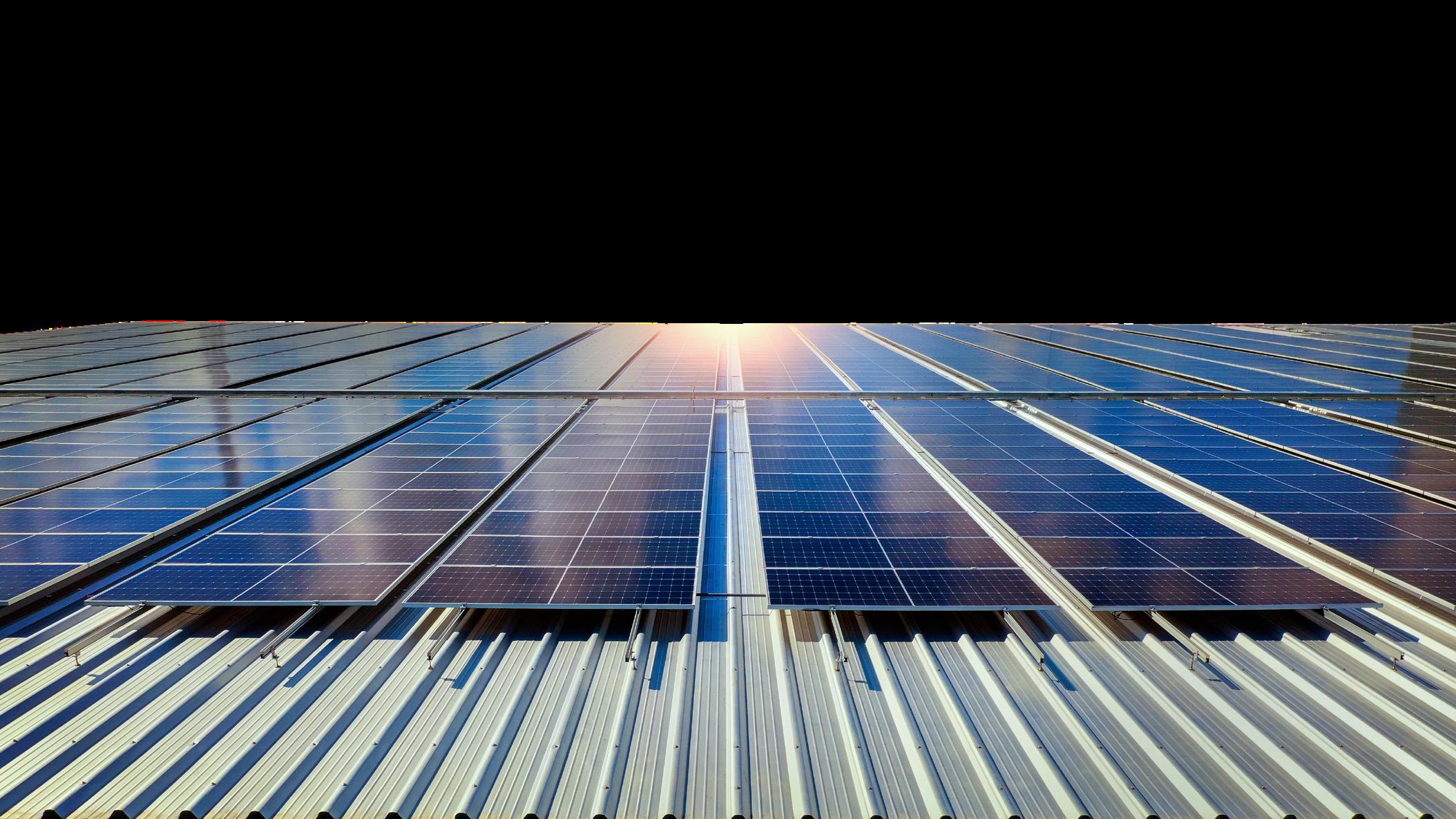


JUNE JULY 2023 India VOLUME 15 | ISSUE 4 C O V E R S T O R Y Advancing India's Solar Rooftop and Large-Scale Projects in the
FUELLING THE FUTURE THROUGH RENEWABLE ENERGY The unfolding of India's National electricity plan O P I N I O N Exploring New Frontiers: Fourth Partner Energy Bets Big on India, South & Southeast Asia for Business Expansion I N T E R V I E W SAJID SYED Head – International Business, FOURTH PARTNER ENERGY
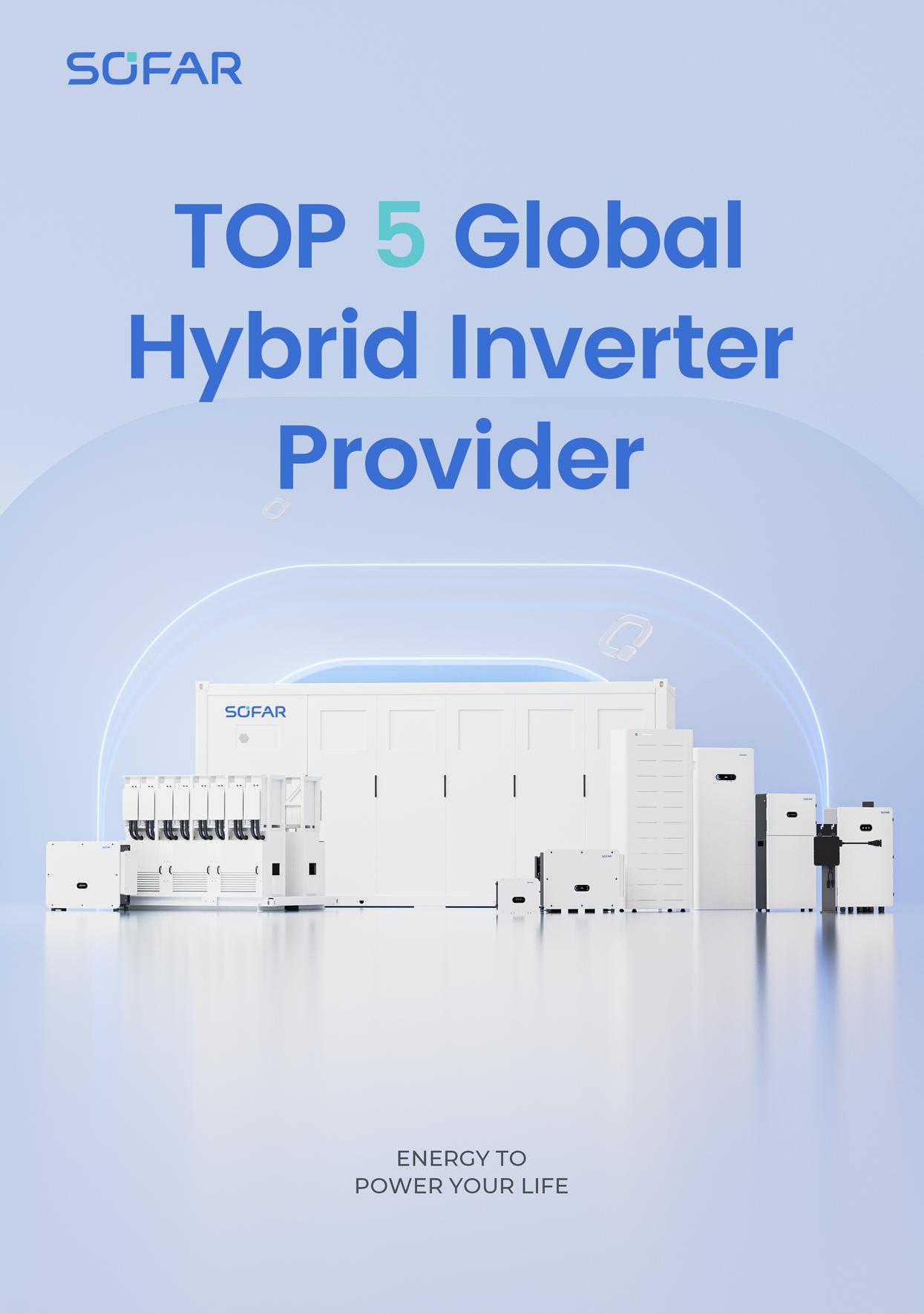


JUNE-JULY ISSUE 2023 | PG 03 | INDIA
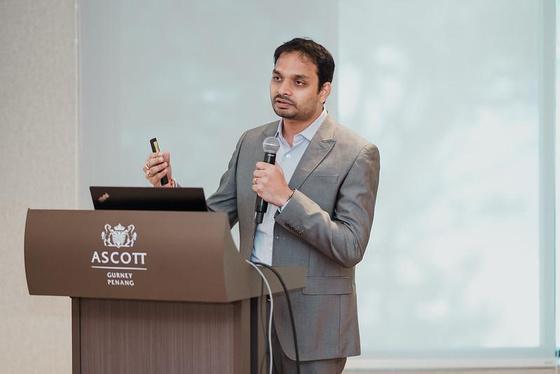

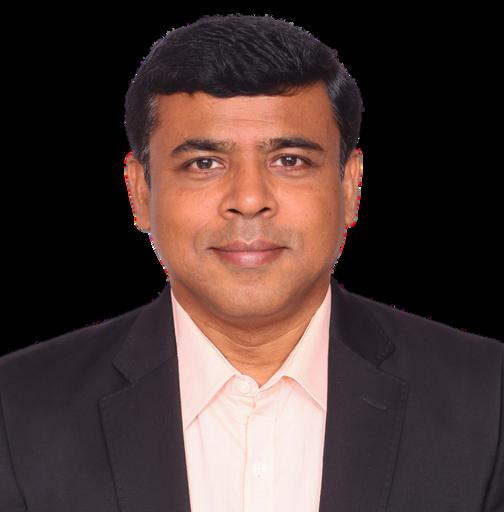




C
Kehua Tech NEWS Policy News Investments Projects Green Hydr Tender Think Tank 6-14 33 The unfolding of India's National electricity plan Fuelling the future through renewable energy OPINION 40 W W W S O L A R Q U A R T E R C O M Smriti Charan Sangeeta Sridhar advertise@firstviewgroup com Sadhana Shenvekar Vaibhav Enterprises ADVERTISING CIRCULATION PRINTING Firstview Media Ventures Pvt Ltd Sheenam Arora Mohan Gupta editorial@firstviewgroup com Sadhana Shenvekar Mohan Gupta publishing@firstviewgroup com Neha Barangali Radha Buddhadev design@firstviewgroup com PUBLISHING EDITING CONTENT DESIGNING Trina Solar GoodWe Solidus Solis Sineng PIXON Rayzon Solar SuryaLogix SolaX Power 24 26 27 28 29 34 35 36 38 COMPANY FEATURE PROJECT FEATURE FEATUR INSIGH PRODUCT LAUNCH TECH FEATURE SuryaLogix SOFAR Power n Sun 37 30 31 Cover Story Special Story Tech Story Market Resaerch Business Insights Current Story 16 43 44 47 45 46 SOLARQUARTER RESEARCH Solar Soaring: Overcoming Hurdles and Harnessing Opportunities - a Comprehensive Exploration of India's Evolving Rooftop Solar Policies and Strategies 42 15 20 Sai Charan Kuppili Rakesh Kalsi Technical Director, South & Central Asia, Jinko Solar Managing Director, Infrastructure Practice, TruBoard Partners FEATURED TALKS Market Statistics 48 19 25 32 39 PRODUCT FEATURE 22 IN CONVERSATION Head – International Business, Fourth Partner Energy Navitas Solar Trina Solar Kehua Tech Hoymiles THE CHAMPIONS CORNER 54 STATELEADERSHP AWARDS 20 23INDIA 2023 LeadershipAwards ASSETS India STATE LEADERSHIP AWARDS INDIA 2023 51 52 56 Madhya Pradesh Rajasthan Tamil Nadu 18 Ankit Singhania Director & Co-Founder, Navitas Solar
O N T E N T


JUNE-JULY ISSUE 2023 | PG 05 | INDIA
Centre Provides Financial Incentives To States To Accelerate Power Sector Reforms
The initiative was announced by the Union Finance Minister in Union Budget 2021-22 Under this initiative, an additional borrowing space of up to 0.5 percent of the Gross State Domestic Product (GSDP) is available to the States annually for four years from 2021-22 to 2024-25 This additional financial window is dependent on the implementation of specific reforms in the power sector by the States The primary objectives of granting financial incentives for undertaking power sector reforms are to improve operational and economic efficiency within the sector and promote a sustained increase in paid electricity consumption. To be eligible for the incentives, State governments must undertake a set of mandatory reforms and meet stipulated performance benchmarks
India Introduces Time Of Day Tariff And Rationalizes Smart Metering Provisions To Enhance Power Tariff System

Rather than being charged for electricity at the same rate at all times of the day (ToD), the price you pay for electricity will vary according to the time of day Under the ToD Tariff system, the Tariff during solar hours (eight hours in a day as specified by the State Electricity Regulatory Commission) of the day shall be 10%-20% less than the normal tariff, while the tariff during peak hours will be 10 to 20 percent higher ToD tariff would be applicable for Commercial and Industrial consumers having Maximum demand of 10 KW and above, from 1st April 2024 and for all other consumers except agricultural consumers, latest from 1st April 2025 Time of Day tariff shall be made effective immediately after installation of smart meters, for the consumers with smart meters
GERC Releases Discussion Paper On Tariff Framework For Wind-Solar And Hybrid Power Projects In Gujarat
The Gujarat Electricity Regulatory Commission (GERC) has released a Discussion Paper titled “Tariff Framework for Procurement of Power by Distribution Licensees and Others from Wind-Solar and Storage if any, Hybrid Power Projects for the State of Gujarat ” As per the new draft norms, existing hybrid projects will have their tariff determined based on the power purchase agreements (PPAs) in place However, for additional capacities, the tariff will be calculated as the weighted average tariff available on April 1, derived from competitive bidding conducted by GUVNL (Gujarat Urja Vikas Nigam Limited) during the previous six months (October to March) For new hybrid projects, the tariff will be based on the weighted average tariff from the last six months. If the weighted average tariff is not available for a specific six-month period, the latest available weighted average tariff for a similar duration will be considered The draft norms also require distribution companies (discoms) to publish the applicable tariff on their websites, which will be updated every six months
India’s Ministry Of Power Releases Guidelines For Competitive Bidding Of Renewable Energy With Energy Storage
The Ministry of Power in India has released guidelines for a tariff-based competitive bidding process aimed at procuring firm and dispatchable power from grid-connected renewable energy projects with energy storage systems. Key points from the guidelines include the requirement for generators to supply firm and dispatchable renewable power as per the demand profile specified in the request for selection (RfS), with penalties for non-compliance Energy storage systems are necessary to ensure availability and performance criteria Bids will be invited in power capacity terms, with a minimum bid quantum of 50 MW The bidding process will involve a single-stage, two-part process, including a technical bid and financial bid evaluation The timetable for the bid process has been outlined, starting from the issuance of the RfS document to the signing of the Power Purchase Agreement (PPA) Qualification criteria have been specified to assess the capabilities of project developers, including technical and financial requirements. The successful bidder must maintain a majority shareholding in the special purpose vehicle or project company executing the PPA The PPA period is typically 20 years, extendable up to 25 years, and includes provisions for various aspects such as force majeure events, compensation for generation deviations, payment security, and termination
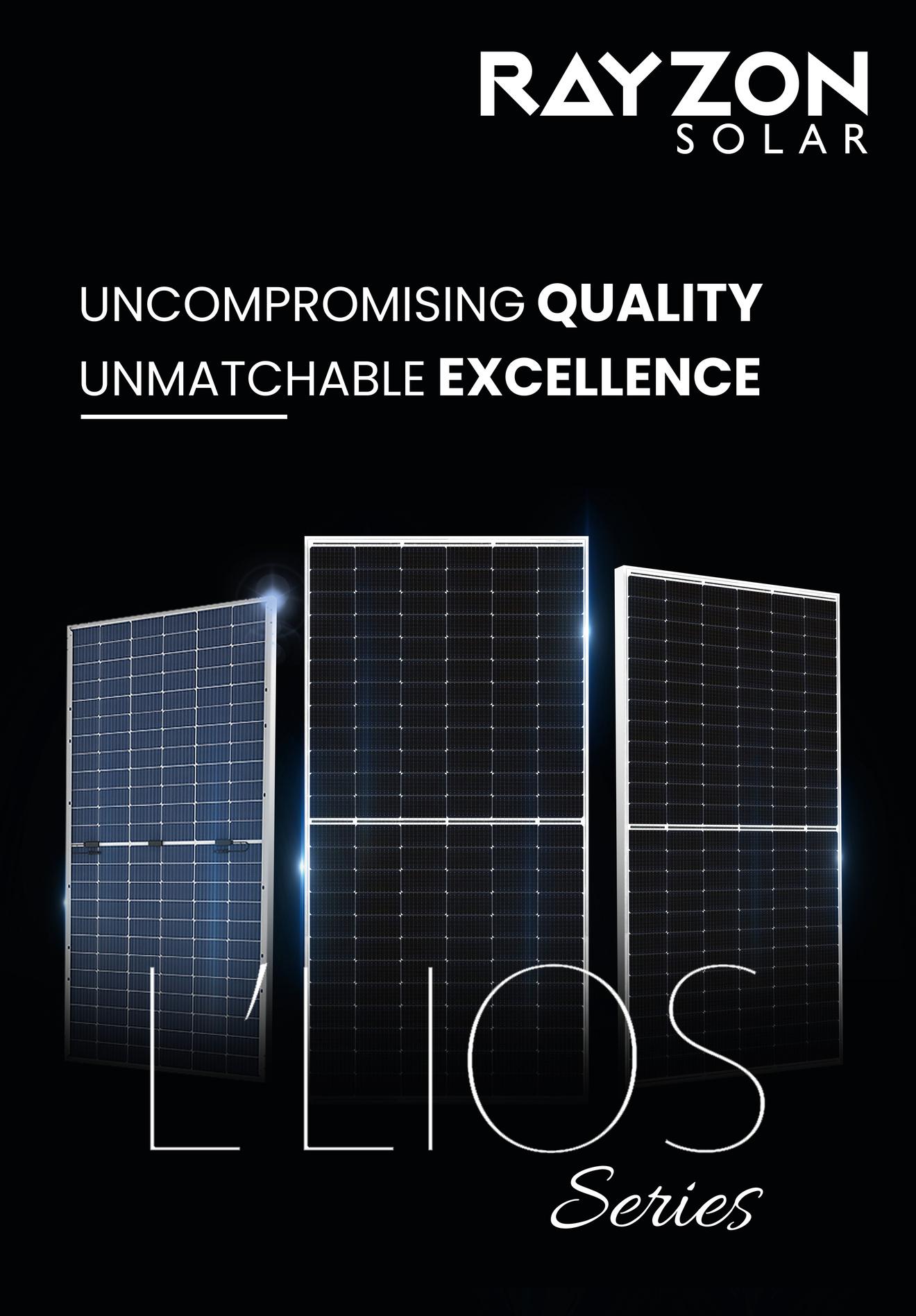

Policy News INDIA NEWS JUNE-JULY ISSUE 2023 | PG 06 | INDIA
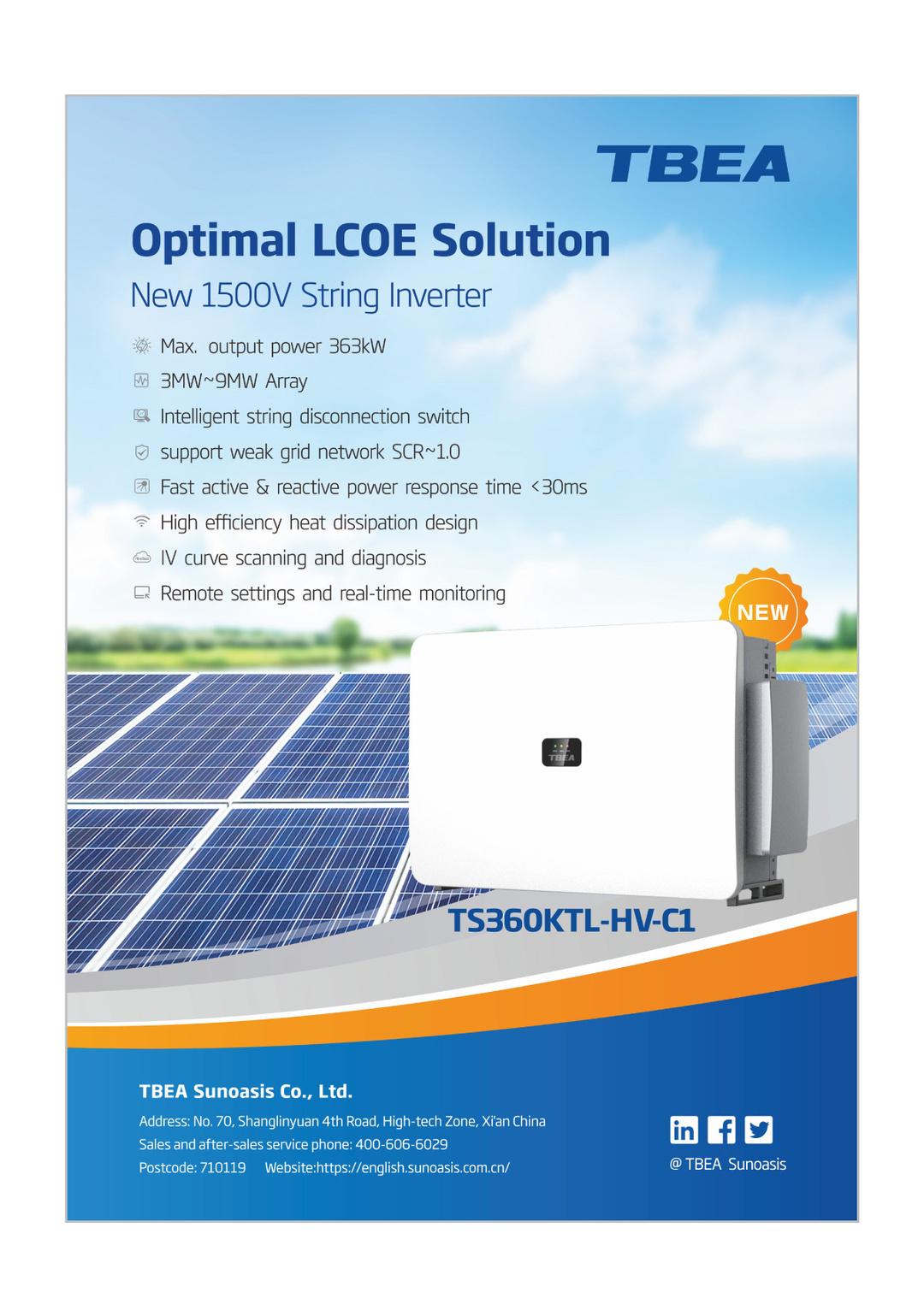

JUNE-JULY ISSUE 2023 | PG 07 | INDIA
Andhra Pradesh Empowers Renewable Energy Procurement With APERC’s Latest Amendments
The Andhra Pradesh Electricity Regulatory Commission (APERC) has recently introduced amendments to the Renewable Power Purchase Obligation (RPO) Compliance by Purchase of Renewable Energy/Renewable Energy Certificates Regulations, 2022 One of the key changes is that captive open-access consumers can now count their purchases of renewable energy towards meeting their RPO This means that entities have the flexibility to choose between purchasing renewable energy up to a certain percentage of their consumption or fulfilling their entire consumption through renewable sources The amendments also allow obligated entities to purchase additional renewable energy beyond their required percentage, up to 100% For consumers opting for renewable energy through the green tariff, a nominal ₹0 75 per unit will be added to the regular tariff. These consumers will be considered as using renewable energy supplied by DISCOM
Arunachal Pradesh Implements Solar-Wind Power Plant For Sustainable Energy Generation
The Arunachal Pradesh State Council for Science and Technology, in partnership with the School of Energy Science & Engineering at IIT Guwahati, has successfully implemented a solar-wind power plant in the Papum Pare district This hybrid plant system, with a capacity of 10 KW, was installed at the Rural Technology Demonstration Centre (RTDC) in Kimin It consists of a 5 KW horizontal axis wind turbine and 5 KW solar photovoltaic panels The energy generated by the system will be stored in a battery bank and monitored using a hybrid charge controller The installation of such hybrid systems across the state aligns to achieve netzero carbon emissions as stated in the Pakke Declaration, emphasizing the state’s commitment to low-emission and climate-resilient development
Karnataka Electricity Regulatory Commission Clarifies Rules For Green Energy Open Access
KERC has issued clarifications on various rules in the state’s Terms and Conditions for Green Energy Open Access Regulations 2022 The clarifications address concerns raised by stakeholders regarding time-ofday settlement, open access charges, and energy adjustment priority
The new regulations allow for the utilization of energy banked during peak and off-peak periods, with specific charges applicable for different transactions The Commission has also clarified the billing priority for energy purchased from various sources and the charges to be paid by consumers under the wheeling and banking agreement Additionally the
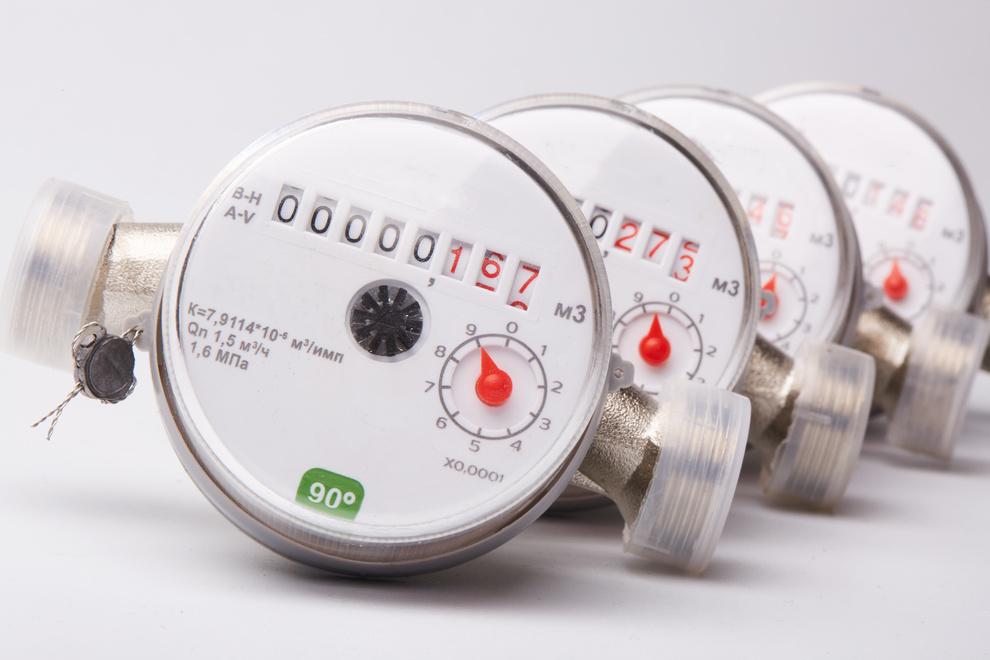
Tripura Electricity Regulatory Commission Amends Guidelines For Renewable Energy Net Metering
TERC has issued an amendment to the existing guidelines for Group Net Metering and Virtual Net Metering for Renewable Energy in Tripura The first amendment focuses on three key areas Firstly, it modifies Guideline 4, which pertains to the available capacity at the distribution transformer level The new provision states that the Distribution Licensee must allow net metering arrangements for eligible consumers up to 85% of the rated capacity of the distribution transformer or any other percentage determined by the Commission Secondly, Regulation 12 2 of the Principal Regulation is amended The revised clause stipulates that at the end of each financial year, the Distribution Licensee will purchase unadjusted net credited units of electricity, limited to 25% of the total units generated during the year by the Eligible Consumer Lastly, Guideline 13, which deals with the applicability of other charges, undergoes a modification
CSERC Caps Open Access Surcharge At 20% Of Supply Cost In Intra-State Regulations Amendment
Chhattisgarh State Electricity Regulatory Commission (CSERC) has issued a set of regulations to amend the CSERC (Intra-State Open Access in Chhattisgarh) Regulations, 2011. The new amendment states that the surcharge imposed on consumers will be determined based on the existing level of cross-subsidy of the consumer’s tariff category, tariff slab, or voltage level This calculation will be done using the average cost method, taking into account the difference between the average tariff for the consumer’s supply voltage and the average cost of supply for the licensee. However the surcharge imposed cannot exceed 20% of the adjusted average cost of supply for that year
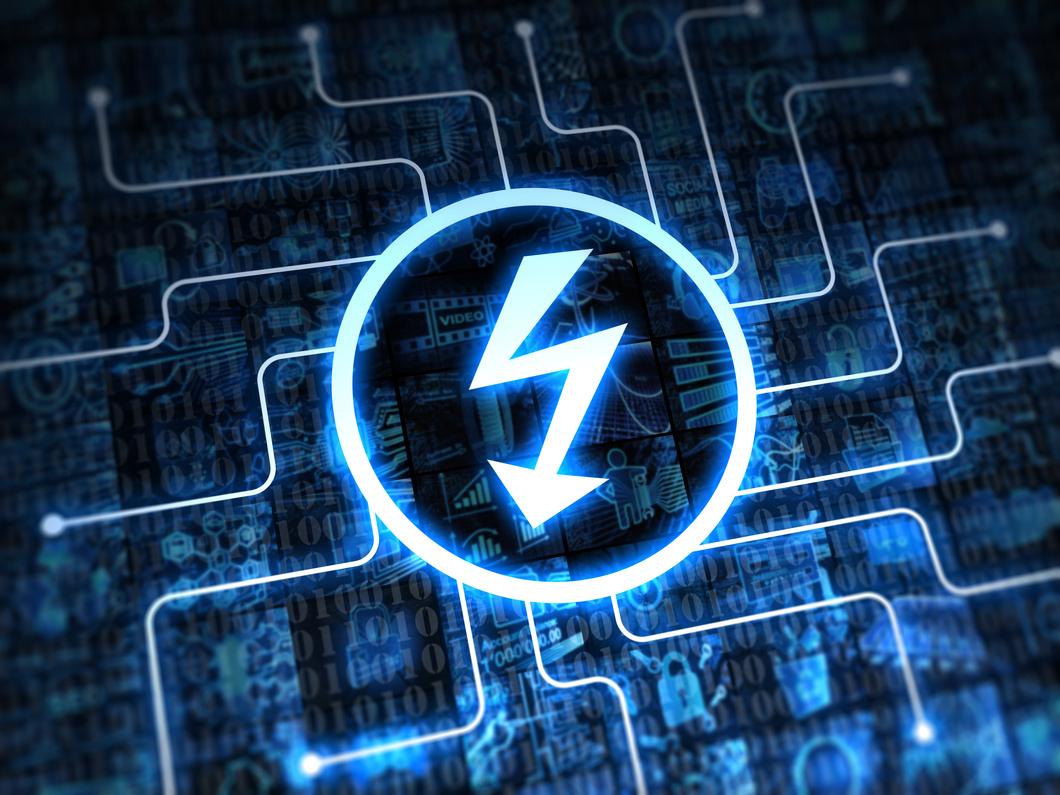

MNRE Extends Timeline For Solar Parks Program Until 31 March 2026
The Ministry of New and Renewable Energy (MNRE) has announced an extension of the timeline for the “Development of Solar Parks and Ultra Mega Solar Power Projects” program until March 31, 2026 This extension allows for more time to achieve the program’s goals without any financial implications Initially launched in December 2014, the program aimed to establish a minimum of 25 solar parks and ultra-mega solar power projects with a combined capacity of 20 GW within five years, starting from the fiscal year 2014-15 In March 2017, the program’s capacity target was increased to 40 GW, with the parks expected to be operational by the fiscal year 2023-24 Under this program, solar parks must have a capacity of 500 MW or higher, while smaller parks are considered only in cases of limited availability of non-agricultural or contiguous land
News INDIA NEWS JUNE-JULY ISSUE 2023 | PG 08
Policy
Ministry Of Power Streamlines Approval Process Under Electricity Act, 2003

The Ministry of Power has recently issued a notification regarding the delegation of powers for approval under Sections 68 and 164 of the Electricity Act, 2003 The purpose of this delegation is to simplify and expedite the approval process within the ministry. The order, dated 12th February 2015, states that the Hon’ble Minister of Power & NRE has approved the following delegation of powers The power for approval under Section 68, which was previously vested with the Chairperson of the Central Electricity Authority (CEA), has now been delegated to the Joint Secretary (Transmission) of the Ministry of Power These measures aim to streamline the approval process ensuring more efficient decisionmaking within the Ministry of Power The revised SOP serves as a comprehensive guide for stakeholders seeking approvals under the relevant provisions of the Electricity Act, of 2003
Chhattisgarh Eases Access to Green Energy for Industrial Consumers with New Open Access Rules
In a significant move towards promoting green energy adoption, Chhattisgarh has introduced new Rules for Green Energy Open Access The notification, released recently, brings several key changes to facilitate wider access to renewable energy sources for industrial consumers The most notable change is the reduction of the minimum capacity eligible for Open Access from 500 kW to 100 kW, effective from 1st September 2023 This reduction opens the doors for a broader range of consumers to opt for green energy sources and contribute to sustainable practices
Under the new rules, any consumer with a contract demand or sanctioned load of 100 kW or more, excluding captive consumers, now has the option to generate, purchase, and consume renewable energy as per their requirements Consumers can choose to purchase green energy up to a certain percentage of their consumption or even opt for meeting their entire energy needs through renewable sources The process involves placing a requisition with their distribution licensee, who will then procure and supply the requested quantity of green energy Moreover, consumers have the flexibility to specify separate requisitions for solar and non-solar energy The tariff for green energy will be determined separately by the Commission, comprising the average pooled power purchase cost of renewable energy, cross-subsidy charges, and service charges covering the prudent cost of the distribution licensee for providing the green energy It is important to note that any requisition for green energy from a distribution licensee must be for a minimum period of one year.
CERC Approves Hindustan Power Exchange’s High Price Contracts, Boosting Power Market Competition
In a recent development, the Central Electricity Regulatory Commission (CERC) has granted Hindustan Power Exchange (HPX) the green light to introduce High Price contracts in the High Price Day Ahead Market (HPDAM), High Price Term Ahead Market (HP-TAM), and High Price Contingency Contracts (HP-Contingency) segments The move comes as part of the Commission’s efforts to enhance flexibility and foster competition in the power market HPX, which received registration in 2021 to operate as a power exchange, had filed a petition seeking CERC’s approval to introduce High Price contracts in the mentioned market segments The proposal involved a floor price of ₹12/kWh for the High Price Market Segment, allowing trading by high variable cost generators Additionally, HPX requested the inclusion of a forbearance price in the contracts to accommodate its software’s matching mechanism effectively
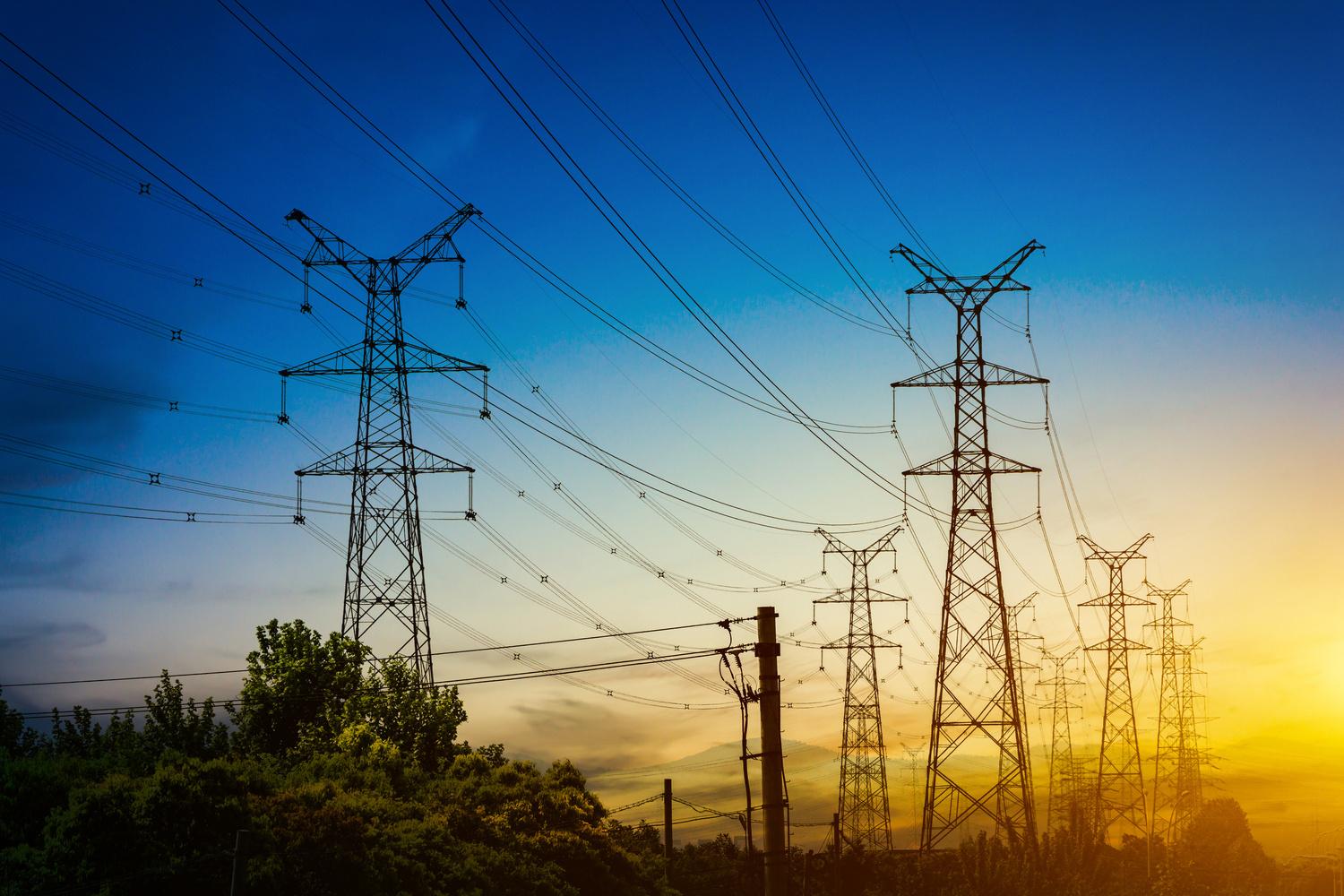
After careful analysis, the Commission approved the contract specifications for HP-DAM, which included double-sided closed bidding and uniform market clearing price mechanisms The bidding window for this segment will be from 10 am to 12 noon HP-TAM and HP-Contingency contracts were also granted approval with eligibility granted to specific categories of high-cost generators, subject to periodic review by CERC
Joint Electricity Regulatory Commission Extends Applicability of Renewable Energy Tariff Regulations
In a recent development, the Joint Electricity Regulatory Commission for the state of Goa and Union Territories (UTs) has issued a notification extending the applicability of the “Renewable Energy Tariff Regulation, 2019 ” The original regulations applied up to 23rd July 2022 and were subsequently extended until 23rd July 2023 The extension comes in pursuance of Regulation 5 of the Renewable Energy Tariff Regulations, 2019 As per the newly issued order, the period of applicability of the said regulations is further extended until either further orders are issued by the Commission or until the notification of the new “Terms and Conditions for Tariff Determination from Renewable Energy Sources Regulations,” whichever occurs earlier The “Renewable Energy Tariff Regulation, 2019” lays down the terms and conditions for tariff determination from renewable energy sources in the region covered by the Joint Electricity Regulatory Commission These regulations play a crucial role in fostering the growth and adoption of renewable energy in the state of Goa and Union Territories
Policy News INDIA NEWS JUNE-JULY ISSUE 2023 | PG 09 | INDIA
India’s Ministry Of Power Releases Guidelines For Competitive Bidding Of Renewable Energy
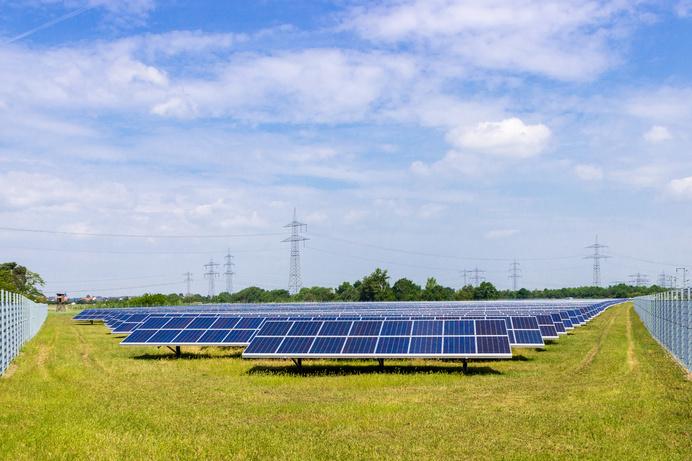
MNRE Reverses Decision On Commissioning Extension For Renewable Energy Projects In GIB
MNRE has reversed its previous decision to grant a 30-day extension for the commissioning of renewable energy projects located in the Great Indian Bustard (GIB) area, where the delay was due to incomplete transmission infrastructure The Ministry now emphasizes that project decisions should be based on their merits, and any extension granted will be for the necessary period only In February of last year, the MNRE announced that renewable energy projects in the GIB priority or potential territory would receive a 30-day extension after the Supreme Court’s judgment However, the recent decision clarifies that developers without secured land in the GIB area cannot claim to be affected by the issue. To be eligible for an extension, developers must have applied to the threemember committee appointed by the Supreme Court for clearance of the transmission line A 15-day grace period has been provided for developers to apply for an extension with the committee
competitive bidding process aimed at procuring firm and dispatchable power from grid-connected renewable energy projects with energy storage systems The objective is to ensure a steady and predictable supply of renewable power to distribution companies while addressing the intermittent nature of renewable energy and underutilization of the transmission system The guidelines include the requirement for generators to supply firm and dispatchable renewable power as per the demand profile specified in the request for selection (RfS), with penalties for non-compliance Energy storage systems are necessary to ensure availability and performance criteria Bids will be invited in power capacity terms, with a minimum bid quantum of 50 MW The bidding process will involve a single-stage, two-part process, including a technical bid and financial bid evaluation. The timetable for the bid process has been outlined, starting from the issuance of the RfS document to the signing of the Power Purchase Agreement (PPA)
MNRE Implements Dispute Resolution Mechanism For Renewable Energy Projects
MNRE has established a new dispute resolution mechanism to address unforeseen disputes between renewable energy power developers, EPC contractors, and implementing agencies The revised mechanism aims to ensure transparency, impartiality, and independence by forming a threemember Dispute Resolution Committee (DRC) consisting of individuals known for their impeccable integrity The primary focus of the mechanism is to handle cases related to time extensions due to recognized force majeure events, unforeseen circumstances not covered by contractual agreements, and disputes unrelated to time extensions According to the process, in the event of a dispute, the renewable energy implementing agency (REIA) must be the first point of contact The REIA will provide speaking orders on the requests to ensure that renewable projects proceed
India Approves Market Coupling For Uniform Electricity Prices Across Multiple Exchanges
The Indian government has approved the implementation of market coupling in the electricity sector, which aims to establish uniform prices for power across multiple exchanges The Ministry of Power has written to the CERC, urging it to initiate the process of market coupling across the country’s power exchanges Market coupling involves aggregating and matching buy and sell bids from all power exchanges in India to determine a uniform market clearing price (MCP) This measure is expected to ensure quick access to power and eventually contribute to keeping power tariffs affordable in the long run Currently, the three

Indian Energy Exchange Limited (IEX), Power XIL), and Hindustan Power Exchange Limited er prices or MCPs.
Punjab Government to Introduce Green Hydrogen Policy, Aiming For Renewable Energy Leadership
To establish Punjab as a leading state in the production of nonconventional energy, the state government is set to introduce a Green Hydrogen Policy The announcement was made by Aman Arora, the Minister of New and Renewable Energy Sources for Punjab Speaking at the 5th Elets National Energy Summit in Chandigarh, Arora emphasized the need to transition from conventional power generation to renewable energy sources for the sake of the environment He highlighted the government’s target of achieving a 30% share of renewable energy by 2030 to meet national goals outlined in the Nationally Determined Contributions (NDC) and Sustainable Development Goals (SDG)
Draft Regulations For Grid-Connected Solar
allowed to install solar rooftop systems with a capacity of up to 10 kW, while commercial and industrial consumers can set up systems with a capacity of up to 1 MW. However these limits may be subject to the approval and technical feasibility of the DISCOM involved One of the key provisions in the draft regulations is the implementation of net metering, which enables consumers to export surplus solar power back to the grid and receive credits for the excess electricity generated This incentive mechanism encourages consumers to install larger capacity systems and promotes the efficient use of solar energy Furthermore, the regulations also address the wheeling and banking of energy Wheeling allows consumers to transfer excess solar power generated at one location to another connected to the same distribution network Banking allows consumers to store surplus solar power in the grid for later use, providing greater flexibility in managing energy generation and consumption.
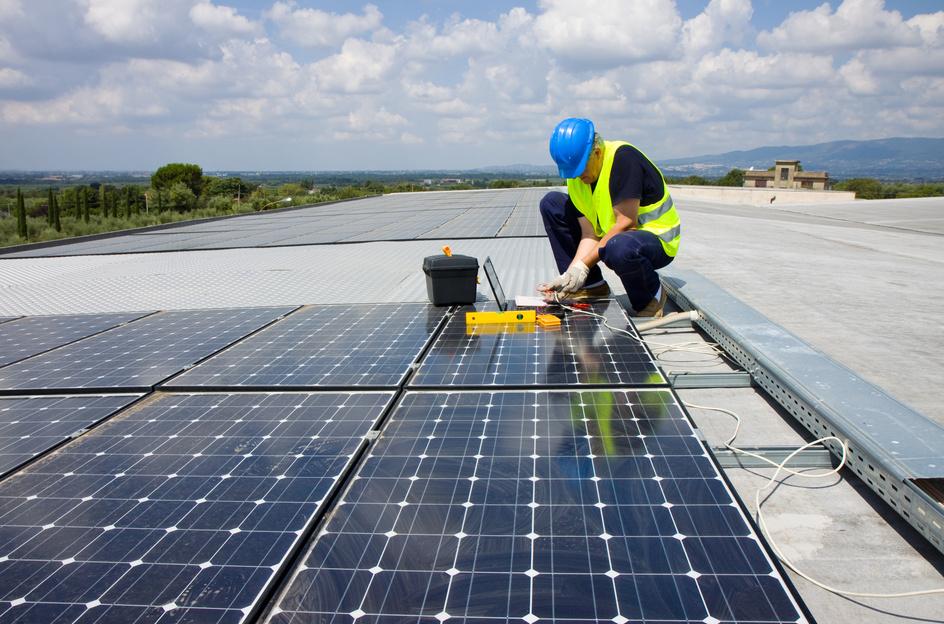
–
INDIA NEWS JUNE-JULY ISSUE 2023 | PG 10 | INDIA
Revolutionary Changes To Transmission Licenses For Large

The Ministry of Power in India has released the Draft Electricity (Amendment) Rules, 2023, which propose significant changes to the mandatory transmission license requirement for captive and bulk power consumers These amendments have been introduced to improve the efficiency and transparency of the electricity sector in India By eliminating the need for transmission licenses for captive and bulk power consumers, the rules seek to streamline the process and remove unnecessary barriers for these types of consumers The reforms include the establishment of a National Power Committee to coordinate policies, separate functions of distribution licensees, and promote innovation and service quality The rules also introduce Renewable Generation Obligations for distribution licensees to increase renewable energy procurement and propose a Renewable Energy Management Centre for efficient integration of renewable resources
Regulatory News
CERC Rules In Favor Of Solar Developer, Grants Compensation For Additional Expenses Due To GST And Safeguard Duty
Government Issues Resource Adequacy Planning Guidelines For India’s Power Sector – Regulation
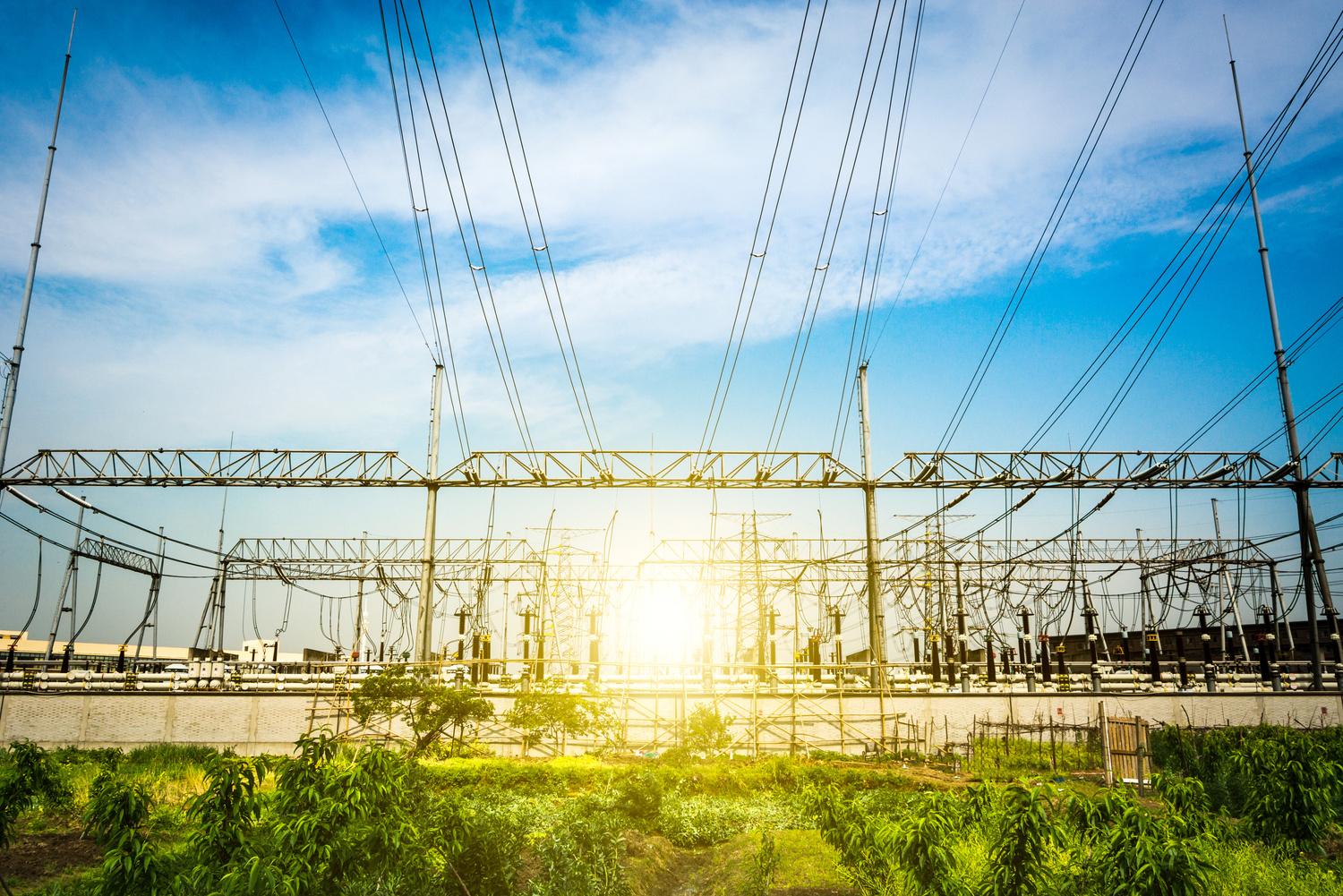
Punjab State Electricity Regulatory Commission Amends Intra-State Open Access Regulations To Promote Green Energy Adoption
Government Of India Establishes Centre Of Excellence To Accelerate Adoption Of Energy-Efficient Technologies
West Bengal Electricity Regulatory Commission Proposes New Tariff Determination Regulations
Ministry Of Power Expands Scope Of Renewable Energy Bundling: Joint Ventures And New Locations
CEA Issues Guidelines For Field Efficiency Tests In Hydropower And Pumped Hydro Storage Projects
Ministry Of Power Amends Electricity (Rights Of Consumers) Rules 2020, Introduces New Rules For Smart Meters And Time Of Day Tariffs New Regulations On Renewable Purchase y Storage
Proposes Draft Regulations For Green Energy Open Access
Under the proposed regulations, three types of power consumers are eligible for Green Energy Open Access: long-term consumers (12 to 25 years), medium-term users (over three months up to three years), and short-term users (as short as one month) These rules apply to consumers with a contracted demand of up to 100 kilowatts (KW) The regulations prohibit applicants from entering into a Power Purchase Agreement (PPA) or any bilateral agreement involving multiple parties for the applied capacity The draft rules establish a timeline for various services related to green energy open access For captive consumers, the distribution companies (discoms) and the commission must verify the captive status of the generator and consumers within three months of receiving all necessary documents Applicants are required to submit the long-term green energy open access agreement within 13 days of transmission and wheeling agreement
Karnataka Electricity Regulatory Commission Clarifies Rules For Green Energy Open Access
CERC Proposes Amendment To Inter-State Transmission Charges And Losses Regulations
CERC’s Issues Approach Paper On Terms And Conditions Of Tariff Regulations For 2024-2029 Tariff Period
CERC Denies Relief To Solar Power Producer SBSR Power Cleantech Eleven For Project Delay
Cabinet Approves Revamped Power Distribution Sector Scheme: A Reforms-Based And Results-Linked Scheme
MERC Sanctions Tariff Of ₹3 10/Kwh For 117 5 MW Solar Power Procurement, Fulfilling MSEDCL’s Solar RPO Requirements
Maharashtra Electricity Regulatory Commission Sets Rs 3 05/Unit Tariff For Rooftop Solar Prosumers
Central Government Introduces Amendments To Promote Renewable Energy Through Green Energy Open Access
JUNE-JULY ISSUE 2023 | PG 11 | INDIA
Investments Projects
World Bank Grants $1 5 Billion in Funding to Aid India’s Shift towards Low-Carbon Economy
Avaada Group Secures Record-Breaking ₹10,700 Cr ($1.3 billion) Funding Round, Strengthening its Dedication to Renewable Energy
World Bank Greenlights $200 Million for Boosting Renewable Energy Adoption in Himachal Pradesh, India
Goldi Solar’s Bold Expansion Plans: Investing ₹5 000 Crore to Boost Solar Panel Manufacturing Capacity
ACME, Along with Other Companies And SCZONE Forge Alliances For Sustainable Energy
Renewable Energy Platform SafEarth Secures ₹35 Million in Funding Round Led by Anthill Ventures and Third Derivative
Adani Transmission Receives Shareholder Approval For ₹8,500 Crore Fundraising Through QIP
IND Renewable Energy Ltd Announces ₹26 Crore Rights Issue for Expansion Plans
India Quotient Injects Undisclosed Funding in Solarad ai’s Seed Round to Drive Rapid Expansion
Amp Energy India Secures $250 Million Funding from SMBC, ICG, and AIIB for Renewable Energy Expansion
Serentica Renewables Secures ₹10,000 Crore Contracts for 1 5 GW Renewable Energy Projects in India
CleanMax Secures $360 Million Equity Fund Raise from Brookfield Renewable for Rapid Growth
Tata Power Secures ₹1,744 Crore Contract for Smart Metering Project in Chhattisgarh State Power Distribution Company Limited
ACME Group Secures R40 Billion Loan From REC Limited For Green Hydrogen Project In Oman
Juniper Green Energy Secures ₹5,000 Crores MOU With Power Finance Corporation For Renewable Energy Projects Financing
SJVN Secures ₹50,000 Crores Financial Assistance From REC To Propel Renewable Energy Projects
EESL Secures ₹ 700 Crore Partnerships At The 14th Clean Energy Ministerial
PFC Signs Mou Worth ₹2 37 Lakh Crore With 19 Companies In Clean Energy Space
REC Joins Hands With Avaada Group To Fund ₹20,000 Crore Energy Transition Projects
India Quotient Injects Undisclosed Funding In Solarad Ai’s Seed Round To Drive Rapid Expansion
Amp Energy India Secures $250 Million Funding From SMBC, ICG, And AIIB For Renewable Energy Expansion
Serentica Renewables Secures 1 25 GW Round-The-Clock Green Energy Agreements
Fichtner Consulting Engineers to Spearhead 1 GW Solar Project in Assam
WattPower Signs Landmark Deal to Supply 1 2 GW of String Inverters to ReNew Power by December 2023

Torrent Power Set to Energize Gujarat with 3 GW of Renewable Energy Projects
Sandur Manganese & Iron Ores Powers Up 42 9 MW of Solar and Wind Energy Projects in Karnataka
KPI Green Energy Receives Commissioning Certificates for 6 40 MWdc Solar Power Plant
NTPC Vidyut Vyapar Nigam Limited Energizes Inaugural Rooftop Solar Project of 1 MW at IIT Jodhpur, Rajasthan
Avaada Energy Secures 400 MW Solar Project from GUVNL in Gujarat
SJVN Signs Agreement with Mahagenco to Develop 5,000 MW Renewable Energy Projects in Maharashtra
Saatvik Green Energy Awarded 8 08 MW Solar Power Project for India’s Leading Cement and Power Conglomerate
BHEL CMD Inaugurates 5 MW Solar Plant in Bhopal, Emphasizes Environmental Commitment
Waaree Renewable Technologies Awarded 6 5 MWp Solar Power Project EPC Contract
Tata Power Renewable Bags LOA from Tata Steel to Set Up 966 MW RTC Hybrid Renewable Power Project
KPI Green Energy Receives Commissioning Certificate for 7 20 MW Wind-Solar Hybrid Power Project
Tata Power Renewable Energy to Set Up 966 MW RTC Hybrid Renewable Power Project for Tata Steel
Arctech Gets Two New Indian Contracts to Provide 662 MW of its Innovative 1P Tracking Solution
KPI Green Energy Obtains Commissioning Certificate for 26 10 MW Wind-Solar Hybrid Power Project
NTPC Achieves Commercial Operation of Second Phase, Adding 10 MW to Gandhar Solar PV Project
Gaurs Group Diversifies into Energy Sector with 15 MW Solar Power Plant in Mahoba, Uttar Pradesh
Tata Power Renewable Energy Commissions 110 MW Solar Project in Rajasthan, Providing Green Power to Kerala State Electricity Board
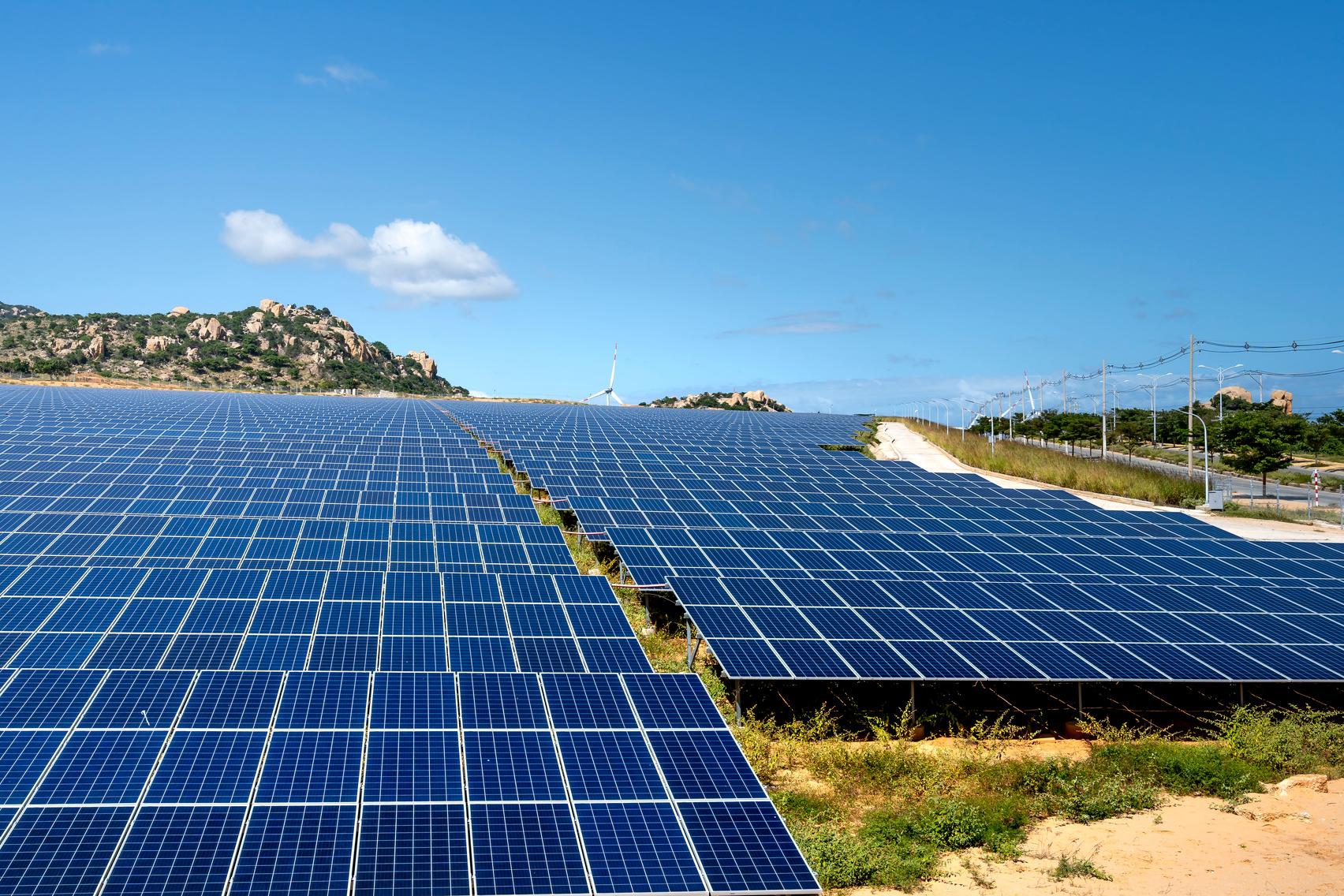
NTPC Green Energy’s Nokhra Solar PV Project Achieves Full Capacity with 50 MW Commercial Operation
Indian Army Transforms Narengi Military Station into Renewable-Based Facility
JUNE-JULY ISSUE 2023 | PG 12 | INDIA
INDIA NEWS
Serentica Renewables Secures 1 25 GW Round-The-Clock Green Energy Agreements
Fichtner Consulting Engineers to Spearhead 1 GW Solar Project in Assam
WattPower Signs Landmark Deal to Supply 1 2 GW of String Inverters to ReNew Power by December 2023

Torrent Power Set to Energize Gujarat with 3 GW of Renewable Energy Projects
Sandur Manganese & Iron Ores Powers Up 42 9 MW of Solar and Wind Energy Projects in Karnataka
KPI Green Energy Receives Commissioning Certificates for 6 40 MWdc Solar Power Plant
NTPC Vidyut Vyapar Nigam Limited Energizes Inaugural Rooftop Solar Project of 1 MW at IIT Jodhpur, Rajasthan
Avaada Energy Secures 400 MW Solar Project from GUVNL in Gujarat
SJVN Signs Agreement with Mahagenco to Develop 5,000 MW Renewable Energy Projects in Maharashtra
Saatvik Green Energy Awarded 8 08 MW Solar Power Project for India’s Leading Cement and Power Conglomerate
BHEL CMD Inaugurates 5 MW Solar Plant in Bhopal, Emphasizes Environmental Commitment
Waaree Renewable Technologies Awarded 6 5 MWp Solar Power Project EPC Contract
Tata Power Renewable Bags LOA from Tata Steel to Set Up 966 MW RTC Hybrid Renewable Power Project
KPI Green Energy Receives Commissioning Certificate for 7 20 MW Wind-Solar Hybrid Power Project
Tata Power Renewable Energy to Set Up 966 MW RTC Hybrid Renewable Power Project for Tata Steel
Arctech Gets Two New Indian Contracts to Provide 662 MW of its Innovative 1P Tracking Solution
KPI Green Energy Obtains Commissioning Certificate for 26 10 MW Wind-Solar Hybrid Power Project
Green Hydrogen
Andhra Pradesh Launches Green Hydrogen and Green Ammonia Policy-2023 to Drive Sustainable Energy Growth
₹13,050 Crore Incentive Scheme for Green Hydrogen Production: Fueling India’s Sustainable Energy Future
Sarawak Progresses Towards Green Hydrogen Economy With Major Manufacturing Projects
SCZONE And ReNew Power Collaborate To Establish Green Hydrogen Plant In Sokhna Industrial Zone
Himachal Pradesh Government Partners with OIL India for Green Hydrogen Production Plant
MSEDCL Implements 10,000+ Rooftop Solar Projects in Pune Circle, Boosting Capacity to 253 94 MW
PTC India Expands Solar Power Portfolio with 100 MW Purchase Agreement, Signs Long-Term Thermal Power Deal for 115 MW
Sterlite Copper Joins Forces with Serentica Renewables to Establish 16 MW Captive Hybrid Renewable Energy Project
Cleantech Solar Forges Ahead with Partnerships in Tamil Nadu to Develop 60 MWp Open Access Solar PV Projects for Blue-Chip C&I Customers
KPI Green Energy Secures New Orders for 7 70 MW Solar Power Plant in CPP Segment
Waaree Renewable Technologies to Power 153,125 Homes with 122 5 MWp Solar Project
SJVN Green Energy Bags 1200 MW Solar Power Project From PSPCL, Crossing 5 GW Renewable Milestone
Refex Renewables Empowers Chhattisgarh With 50 MW Solar PV Power Project
SJVN Limited Expands Renewable Energy Portfolio With 300 MW PPA Signings
Fourth Partner Energy Successfully Deploys Its First Wind-Solar Hybrid Project In Gujarat
Saatvik Green Energy Secures India’s Largest 12 MW Rooftop Solar EPC Project For Prominent Steel Conglomerate
Waaree Renewable Technologies Awarded 6 5 Mwp Solar Power Project Epc Contract
Tata Power Renewable Bags LOA From Tata Steel To Set Up 966 MW RTC Hybrid Renewable Power Project
Gaurs Group Diversifies into Energy Sector with 15 MW Solar Power Plant in Mahoba, Uttar Pradesh
Tata Power Renewable Energy Commissions 110 MW Solar Project in Rajasthan, Providing Green Power to Kerala State Electricity Board
NTPC Green Energy’s Nokhra Solar PV Project Achieves Full Capacity with 50 MW Commercial Operation
Indian Army Transforms Narengi Military Station into Renewable-Based Facility
Government Extends ISTS Waiver for Green Hydrogen and Green Ammonia Projects Until December 2030 and Grants 25 Years ISTS Charge Waiver to Offshore Wind Energy Projects
NTPC Ventures into Hydrogen Hub Development in Andhra Pradesh, Expanding Green Energy Solutions
NTPC to Launch India’s First Green Hydrogen Fuelling Station in Ladakh Ahead of Schedule
Government Considering Mandate for Green Hydrogen Usage Says MNRE Secretary
SECI Invites Bids for Electrolyser Manufacturing Capacities in India for Green Hydrogen Transition
JUNE-JULY ISSUE 2023 | PG 13 | INDIA
Projects INDIA NEWS
INDIA NEWS
Tender
PFC Consulting Calls for Bids to Evacuate 1,500 MW of Renewable Energy from Maharashtra’s Solapur SEZ
GAIL (India) Limited Tenders for 10 MW Grid-Connected Solar Power Plant in Madhya Pradesh
SJVN Seeks Proposals for 1500 MW Renewable Energy Projects with Storage
UPNEDA Invites Bids for 5 MW Grid-Connected Solar PV Power Project in Mau District, Uttar Pradesh
Shreeji Infrastructure Secures Coal India Contract for 35 MW Solar Projects in West Bengal
SJVN to Supply 500 MW Solar Power to PSPCL from Bikaner Solar Power Project

Tata Power Tenders for 225 MW Wind-Solar Hybrid Power Supply on Long-Term Basis
UPNEDA Issues Tenders for 12 MW Grid-Connected Rooftop Solar Projects in Uttar Pradesh
NHPC Signs MoU With GRIDCO Odisha For Developing 1 GW Solar Energy Projects In Odisha
NVVN Invites Bids for 6 MW Grid-Connected Solar Project at CCI Tandur Facility
NHPC Announces Procurement of 3000 MW Solar Power through Competitive Bidding Process
GAIL (India) Invites Bids for 10 MW Solar PV Power Plant at Vijaipur, Madhya Pradesh
NTPC REL Calls for Bids for Battery Energy Storage System at Khavda RE Park
BHEL Awards Operating and Maintenance Contract to Jayram Industries for 65 MW Solar Power Project in Tamil Nadu
NTPC Invites Bids For 1500 MW ISTS Wind-Solar Hybrid Power Projects Across India
North Central Railway Invites Bids To Implement 5 5 MW Rooftop Solar Projects Over Its Facilities
Jammu & Kashmir Energy Development Agency Initiates Tender For 1 75 MW Solar PV Power Plants
EESL Tenders For Procurement Of 28 723 Mwp Solar PV Modules For Maharashtra
NHPC Limited Seeks Bidders For 200 MW Solar PV Project In Gujarat Solar Park
JDVVNL Issues Three Tenders For Grid-Connected Solar Power Projects Under PM-KUSUM Program, Totaling 295 32 MW
Think Tank
Study Reveals Potential For Gulf-Europe Pipeline To Transport LowCarbon Hydrogen
Analysis Of The Solar Energy Market In India: Future Prospects And Competitive Landscape From 2017 To 2022 And 2023 To 2030
NTPC Renewable Energy Seeks Consultants for Floating Solar Power Assessments in India
SECI Announces Empaneled Contractors for 50 MW Rooftop Solar Projects on Government Buildings
BSNL Invites Bids for 10 MW Rooftop Solar Projects
PSPCL Invites Bids for 200 MW Grid-Connected Solar PV Projects in Punjab through Swiss Challenge Method
SECI Issues Tender for Consultancy Firm Selection for 100 MW SPV Project along with 40 MW/120 MWh BESS at Chhattisgarh and 100 MW FSPV Project at Jharkhand
NHDC to Construct 525 MW Pumped Storage Project for Meeting Peak Energy Demands in Madhya Pradesh
NLC India Invites Online Bids for BOS Works of 50 MW Solar Power Project in Neyveli
Oil India Limited Seeks Consultants for 100 MW Solar and Wind Power Projects in India
South Eastern Railway Invites Bids for 13 54 MW Solar Rooftop Projects
NTPC REL Invites Bids for Solar PV Module Supply in Shahjapur, Bhuj, and Bhadla Solar PV Projects
BHEL Invites Bids for Supply and Installation of Inverters for 15 MW GACL Solar Plant at Charanka Solar Park in Gujarat
Punjab State Power Corporation Invites Bids for 1000 MW Solar Power Purchase in Punjab
JDVVNL Invites Bids for 64 48 MW Solar Projects in Jodhpur Circle under PM-KUSUM Program
GUVNL Announces Bidding for 600 MW Solar Power Projects in Phase XXI with Greenshoe Option
SECI Invites Bids for 500 MW Firm and Dispatchable Power from RE Power Projects in India
South East Central Railway Invites Proposals for 2 185 MW Rooftop Solar PV System Project
SECI Announces Tender For 1000 Mwp Domestically Manufactured Solar PV Modules With Solar Cells
NTPC Seeks Bids For 200 MW Grid-Connected Solar PV Projects At GSECL Solar Park In Khavda
SECI Announces Empaneled Contractors For 50 MW Rooftop Solar Projects On Government Buildings
SECI Issues Tender For Consultancy Firm Selection For 100 MW SPV Project Along With 40 MW/120 Mwh BESS At Chhattisgarh And 100 MW FSPV Project At Jharkhand
India Launches “MAHIR” National Mission To Drive Indigenous Power Technologies
Government Plans September Filing For Indian Renewable Energy Development Agency Public Offering: Report
JUNE-JULY ISSUE 2023 | PG 14 | INDIA
FEATURED TALKS
Sai Charan Kuppili
Technical
Director,

South & Central Asia, Jinko Solar
Unveiling the 2nd Generation Tiger Neo Series Modules: Enhanced Productivity in Low-Light Conditions
CONVERSATION HIGHLIGHTS
Our journey has been filled with remarkable Jinko Solar's 2nd Generation Tiger Neo Series Modules redefine productivity in lowlight conditions, offering superior performance
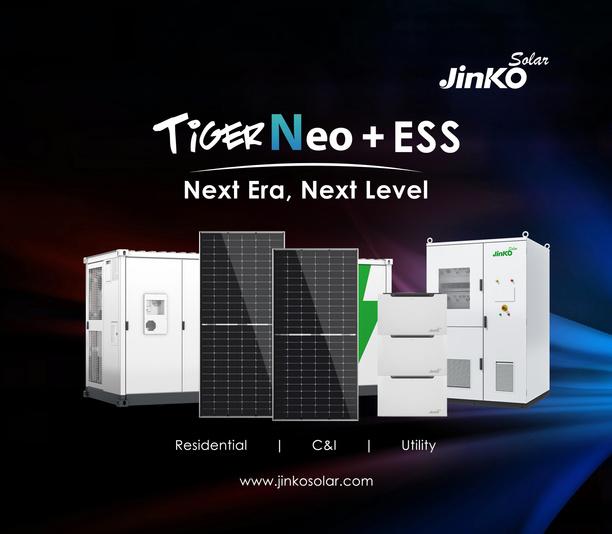
TOPCon technology is poised to lead the high-end solar PV market, offering the lowest LCOEs and unmatched optimization potential
Jinko's market presence is unrivaled, having manufactured over 15GW of TOPCon in 2022 alone The switch to TOPCon is imminent for PERC players worldwide.
Earlier this year, Jinko Solar unveiled 2nd Generation Tiger Neo Series Modules that provide higher average productivity under lowlight conditions. Tell us more about the benefits of these modules along with their technical features
Jinko excelled in TOPCon mass production as compared to its peers in the Global context right from the initial days of PERT, and continues to so until now, when the market has seen latest TOPCon variants We have optimised the technology on selective emitter process to increase the specific energy yield by reducing the temperature co-efficient The plain TOPCon variant now sets a new benchmark in reducing the loss factor specific to temperature Thus, relevant metrics which help in increasing specific energy yields are getting better on all fronts
What is the current market presence of these modules? Are you planning to expand the market in the coming times?
Currently, TOPCon sits on top of the PV Technology leader board owing to its high-power density and high-energy density Most of the PERC manufacturers are transitioning towards TOPCon with increased production capacities. Looking at the market presence perspective, Jinko is the only brand to have manufactured more than 15GW of TOPCon during 2022 alone Now, with the technology gaining prominence, we may witness global capacities to increase multi-fold as more PERC players initiate their switch to TOPCon As for us, we have global sales leadership when it comes to N Type – 10 7 GW in 2022; 60% share in 2023 overall shipments; 6 GW ould touch 55-60 GW r N Type TOPCon by
What according to you are the latest trends and demand drivers in the solar PV market?
We believe, TOPCOn will lead the market in the high-end technology segment, as it will offer the lowest LCOEs and will evolve in multiple ways as the most optimised technology product It is expected to grab the highest market share and compete with PERC, IBC and/or any other passivated or back contact technology Since TOPCon has already kick-started its optimisation curve on technology fronts, its different and advanced variants are expected to see the light of the day in the next 8-12 quarters
Besides the Tiger Neo 2023 series, Jinko Solar also introduced SunTank residential energy storage system, SunGiga C&I system and Suntera utility system Could you shed some light on these recent launches?
Specific to Energy Storage Solutions (ESS), we earmark ourselves as a solution provider in this segment rather than a product manufacturer, thereby creating sustainable metrics in energy security. We provide our ESS solutions in residential segment (RESS) with SUN TANK, distributed generation applications with less than 1MWh using a cabinet or container with SUN GIGA and Utility applications with SUN TERA which has high energy density of 3 44 MWh in a 20 feet container. These solutions will have better prospects on round trip efficiency, reduced auxiliary consumption, better operational features at varied temperatures under different climatic zones and best in class fire safety and protection system. With these characteristics, we are looking at almost a 20% reduction on LCOS
What steps do you take to ensure product safety while maintaining the quality and performance of your products?
Being a technology leader, Jinko continuously strives to improve the power density of its highend technology products. At the same time, we focus a lot of R&D on evolving the reliability characteristics by using better composite materials and through our best-in-class process control resulting in higher efficiency and increased energy density for longer tenures Our products always top on the metrics of reliability characteristics in most of the 3rd party reliability test reports specific to Thermal cycle, Damp heat, Humidity freeze, PID, LeTID, etc
How is Jinko Solar leveraging TOPCon technologies to gain a competitive advantage in the Indian market?
Jinko is the first and only player across the Globe to produce double digit GW TOPCon capacity during 2022 The challenges specific to this technology shift were widely experienced & analyzed by us to enable capacity expansion to 55 GW of TOPCon manufacturing by end of CY 2023 High power and energy densities along with other inherent benefits of TOPCon technology, have made Tiger Neo - Jinko’s flagship N Type TOPCon product, the “Go-To” choice for IPPs and Project Developers EPCs are seeing a clear BOS cost benefit too 2023 will see more of Tiger Neo shipments in India across all verticals
What are Jinko Solar's future plans and business roadmap for the Indian market?
Specific to Indian market, we continue to provide both PERC - Tiger Pro Series & TOPCon - Tiger Neo with 72 cell module in both monofacial and bifacial variants along with the 78 Cell bifacial variant aiming 635 Wp power The bifacial variants are with Dual Glass However, we will maintain the same dimensions for both P & N type modules, with a 20-25Wp power class benefit on N - Tiger Neo
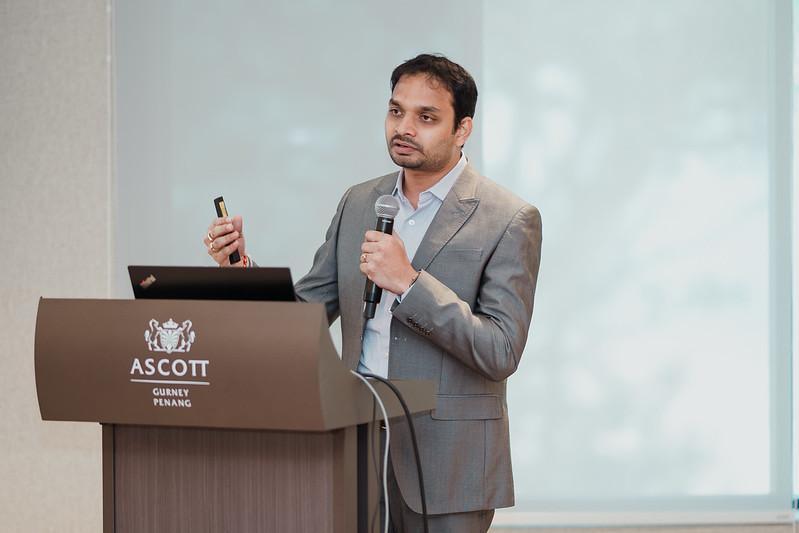
JUNE-JULY ISSUE 2023 | PG 15 | INDIA
Renewable Energy Industry


India's Solar Rooftop and Large-Scale Projects in the COVER STORY SOLARQUARTER
JUNE-JULY ISSUE 2023 | PG 16 | INDIA
Advancing
RESEARCH
India has emerged as a global leader in clean energy as a result of a dramatic transition in the solar and renewable energy sectors in recent years India has started a tremendous path towards a sustainable energy future thanks to its abundant solar potential and a dedication to lowering carbon emissions In this policy brief, we will examine solar rooftop installations and large-scale solar projects, which are two crucial facets of India's renewable energy industry These industries have a great deal of potential to propel the nation's shift to renewable energy sources and help it meet its challenging clean energy goals
The energy landscape in India has changed significantly as a result of solar roofing They provide a decentralised and distributed generating paradigm that enables individual consumers, businesses, and organisations to utilise solar electricity and participate actively in the energy system India has the ability to use solar rooftops to lower transmission losses, boost energy independence, and convert traditional energy customers into prosumers who create and use their own electricity The laws governing solar rooftops are designed to encourage installations, simplify processes, and lower the cost of renewable energy for customers The net metering law specifically aims to accelerate the development of the rooftop sector
At the same time, massive solar energy projects are essential for supplying India's expanding demand for electricity In these initiatives, high-capacity solar power plants that feed electricity directly into the national grid are being developed India can drastically reduce its dependency on fossil fuels, cut greenhouse gas emissions, and improve energy security by utilising the country's rich solar resources. The policies and programmes put into place for large-scale solar projects concentrate on luring private sector investments, making sure that project funding is transparent, and stimulating competition to lower solar tariffs, such as competitive reverse tariff bidding procedures
In order to achieve a sustainable and low-carbon future, both solar rooftops and large-scale solar projects are essential elements of India's renewable energy environment Analysis of the current regulatory frameworks, identification of the difficulties encountered, and development of solutions are essential as the government continues to place a high priority on the spread of renewable energy. India can realise the full potential of its solar and renewable energy industry by tackling problems including grid integration, financial obstacles, procedural difficulties, and knowledge shortages
In this policy brief, we will examine the regulations controlling solar rooftops and large-scale solar projects, talk about the difficulties these industries confront, and suggest ways to promote the solar and renewable energy sectors in India By doing this, we hope to add to the existing discussion about sustainable energy transitions and promote the development of an energetic and prosperous clean energy ecosystem in India.
SOLARQUARTER

Large-Scale Solar Project Policy
Large-scale solar projects in addition to solar rooftops are essential to attaining India's renewable energy goals These initiatives provide a sizable contribution to the national grid and aid in supplying the rising demand for electricity In order to encourage the construction of largescale solar installations, the Indian government has enacted the following policies:
Competitive Bidding: For large-scale solar projects, the government instituted a competitive bidding process Developers compete for project contracts by putting their lowest rates forth in open auctions With the help of this strategy, solar tariffs have effectively been lowered, increasing the viability of large-scale solar projects.
Viability Gap Funding (VGF): Through the Viability Gap Funding mechanism, the government offers financial help for the development of large-scale solar projects This closes the viability gap and draws private sector investment in the infrastructure for renewable energy sources
Renewable Purchase Obligations (RPO): RPO requires major users and electrical distribution firms to purchase a predetermined portion of their energy from renewable sources This programme assures a market for large-scale solar installations and generates demand for renewable energy.

Advancement Strategies
To further advance the solar rooftop and large-scale solar project sectors, the following strategies can be considered:
Streamline Procedures and Reduce Administrative Burdens: Simplifying administrative procedures, obtaining necessary approvals, and ensuring timely clearances are essential to accelerate the deployment of solar rooftop installations and large-scale projects This would require coordination among various government departments and the introduction of online platforms for smooth project execution
Improve Access to Financing: Access to affordable financing is critical for the growth of solar rooftop installations and large-scale solar projects. Measures such as introducing innovative financial models, providing credit guarantees, and establishing dedicated renewable energy funds can attract investments and support project developers
Enhance Grid Integration and Infrastructure: Strengthening the grid infrastructure and developing robust grid integration mechanisms is crucial for both solar rooftops and large-scale projects Smart grid technologies, energy storage systems, and advanced forecasting tools can facilitate the effective integration of solar power into the existing grid network
The Indian government has implemented various regulations to encourage solar rooftop installations because they are an important component of the country's renewable energy landscape These programmes include:
Solar Rooftop Policy Conclusion
Rooftop solar system owners who use net metering can export extra electricity they produce back to the grid and receive credit for it. Customers are encouraged to install solar panels since they can use the excess energy produced to reduce their electricity costs
Feed-in Tariffs: A few Indian states have implemented feed-in tariffs, which give solar rooftop owners set payments for the electricity they produce. This regulation promotes investments in solar rooftop projects and guarantees a steady stream of cash
Subsidies and Financial Incentives: To encourage the installation of solar panels on rooftops, the federal and state governments both offer b d d f l centives. These include tax advantages, lowsubsidies, which lower the cost of solar energy
Promote Awareness and Capacity Building: Creating awareness among consumers about the benefits of solar rooftop installations and large-scale solar projects is essential Educational campaigns, workshops, and training programs can empower consumers, local communities, and stakeholders with the knowledge and skills necessary to participate actively in the renewable energy sector
Large-scale and rooftop solar energy projects in India offer a significant chance to help the nation achieve its goals for renewable energy, promote economic expansion, and cut carbon emissions. India can continue to progress its solar and renewable energy business, promoting sustainable development and building a brighter future for all through supportive laws, simplified procedures, financial accessibility, and improved grid integration
RESEARCH JUNE-JULY ISSUE 2023 | PG 17 | INDIA
CONVERSATION HIGHLIGHTS
Our journey has been filled with remarkable achievements, exciting projects, and invaluable lessons. As we reflect on our accomplishments, we are driven by a commitment to maintaining the highest standards of quality and reliability
However, our aspirations extend far beyond our current successes We envision a world where clean energy is accessible to all, and we are dedicated to making this vision a reality.
With unwavering determination and a passion for progress, we embark on this next phase of our journey, driven by the belief that every challenge is an opportunity for growth Together, let us forge a path towards a cleaner, brighter tomorrow
Can you provide an overview of Navitas Solar’s journey as a solar PV module manufacturer in the India?
Recently, we have completed 10 years in the industry It was a wonderful journey full of learnings, projects, excitements, achievements and lessons We have started with 75 MW p a followed by expansions of 200 MW, 500 MW and now 1 7 GW p a We have started with 3 Bus Bar Modules which could generate power from 3 to 250 Watts per panel and now we are manufacturing 10 Bus Bar modules up to 670 watts per panel In the new manufacturing line, we can manufacture modules up to 20 Bus Bars which can generate power up to 720 watts per panel
Ankit Singhania
Director & Co-Founder, Navitas Solar

Harnessing the Power of the Sun: Navitas Solar's Journey through a Decade of Unparalleled Growth, Pioneering Innovations, and Unwavering Dedication to Excellence in the Indian Solar Photovoltaic Sector.
How do you ensure the quality and reliability of Navitas solar PV modules? What measures are in place to maintain consistent performance?
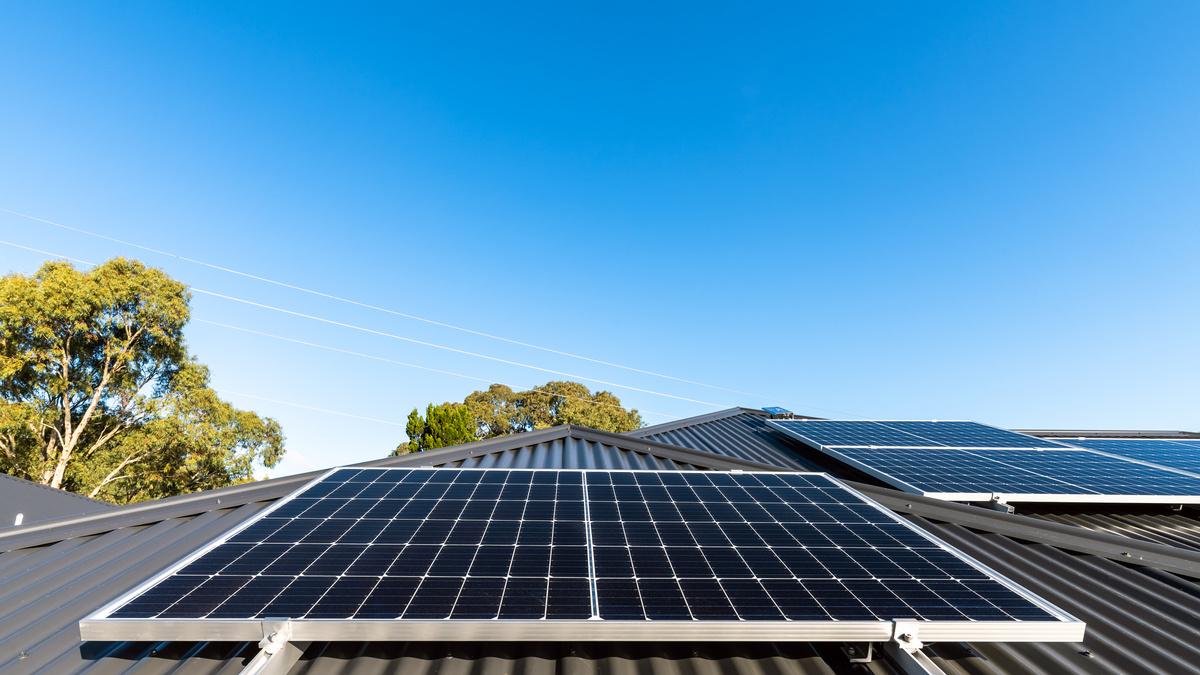
We have in house QA & QC labs which help us a lot to maintain high quality & reliability standards We check our modules rigorously & after the complete verification only, we supply the modules. Till now we have not received any recalls for our modules We have a wonderful team of young professionals by which we are able to give consistent performance

Could you highlight any innovative technologies or manufacturing processes Navitas Solar utilizes to stay competitive in the market?
We have launched Mono PERC Half Cut modules in 2022 In our new expansion, we can manufacture Mono PERC and TOPCon both the technologies according to the requirements So, overall we manufacture Polycrystalline, Mono PERC as well as TOPCon which are trending & innovative technologies which we utilize to stay competitive in the solar market
Over the past 10 years, we have embarked on a remarkable path filled with valuable lessons, groundbreaking projects, and remarkable achievements. We started modestly with a capacity of 75 MW per annum, but through strategic expansions, we have grown exponentially to a staggering 1.7 GW per annum.
How do you navigate the regulatory landscape and policy frameworks in India and the USA? Have there been any notable challenges or successes in this regard?
We track policies related to solar technology thoroughly of India and the USA There are some beneficial policies implemented by both the governments which encourage domestically manufactured modules Some notable challenges are dynamic policies & lack of awareness. A noteworthy success is that the world is now considering India for its contribution as International Energy Agency (IEA) quotes, “All roads to successful global clean energy transitions go via India ”
What are Navitas Solar’s plans and aspirations for your company's growth and expansion in the Indian and USA markets?
We at Navitas Solar are also exploring the USA Europe & Africa market aggressively In the USA market, we will start supplying modules this year and explore the market thoroughly Our plans are to expand up to 10 GW in upcoming 10 years in Indian market.
What role do you envision solar PV module manufacturers playing in the transition to a clean energy future in India and the USA?
Solar energy is the best technology when it comes to all renewable energy resources because of less maintenance and capital costs In the energy mix of the country, every resource has its own importance, but we feel that by the time solar energy will capture more share in the energy mix as every country wants to achieve a certain level of energy independence With this, solar modules possess the major share of cost in the whole solar power plant, therefore Solar PV module manufacturers have an important role in the solar market in both the Indian as well as American solar market
JUNE-JULY ISSUE 2023 | PG 18 | INDIA FEATURED TALKS
All you need to know about Bifacial Solar Modules
Bifacial modules produce solar power from both sides of the panel (front & rear) whereas traditional mono facial panels can generate power from only one side of the panel Additional solar radiation absorption through the bifacial solar cell’s rear surface leads to enhanced electrical power generation Bifacial PV is entering the market quickly as the modules are available with cost parity as their mono facial equivalents.
The trend to maximize efficiency of solar module is to make the modules bifacial so that the system can benefit from the additional bifacial gain. These modules can be produced with or without frame as most of them are double glass. The trend these days is bifacial modules with frames as they are more stable and can be installed easier The junction boxes are designed to be shallow so that they don’t cause any shadow on the rear surface
A key challenge in effective utilization of bifacial solar cells is in the design of appropriate rear surface reflector However, there are many cases in which bifacial solar panels are effective without the reflector The slope and direction of bifacial solar panel play a significant role in maximizing the solar radiation absorption and have been investigated for bare bifacial solar panels that is without external reflectors.
Bifaciality is the ratio of the rear surface efficiency over front surface efficiency. This is based on the assumption that the same intensity of solar radiation is incident on both rear and front surfaces Table given below can summarize Bifacial modules for different technologies according to the efficiency, power, bifaciality, and costs
Some installations are given for the reference in below figure For given utility scale installations using Bifacial Modules are shown in left column with fixed tilt, vertical & tracking installations Fixed Tilt, Vertical & tracking installations for Flat Roof surface is given in Middle column while integrated systems are given in right column with fixed tilt, vertical & tracking positions.
Since the current increases with increased efficiency and bifaciality, the number of bus bars must be increased and the cells must be cut in half or even smaller pieces so as to avoid increased resistive power losses in the connecting ribbons
Depending on the application and the additional costs for BOS (Balance of System), some modules are useful for utility scale while others are more suited for rooftop applications
There are some kind of installations possible with Bifacial Modules which affects the generation

Standard Fixed Tilted Position: This position can lead to maximum bifacial yield gains up to 30% in large solar installations if geometrical parameters are optimum In geometrical parameters there must be low shading from the rear, high row distance and bottom module edge installed must be >0 5 m
Horizontal Installations: This position is most widely used in car ports
Vertical Installations: This position is most widely used in Agrivoltaics where the land is used for farming also This position leads to low Ground Coverage Ratio
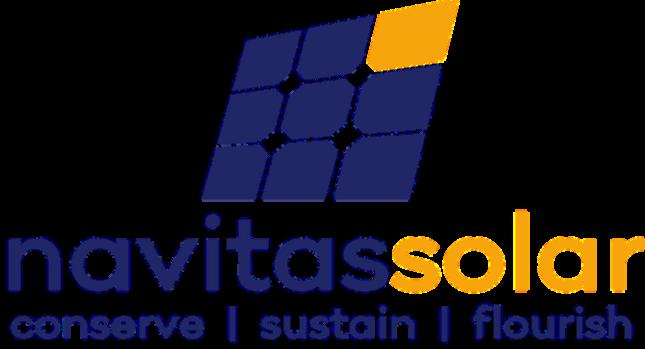
Horizontal Single Axis Tracker: This position mostly results in the lowest LCOE and the highest energy production Tracking systems require modules to be mounted high from the ground to maintain high row to row distance So, using Bifacial modules with tracking systems can give dual advantages
In Bifacial module front surface faces the sun directly while rear surface captures diffused radiation Reflector plays an important role in Bifacial Installations. With two absorption surfaces, bifacial solar panels produce more electrical energy than mono facial panels especially in cloudy weather conditions Bifacial solar panels equipped with external reflectors are expected to generate additional electrical energy depending on the reflector and its location Some important parameters for reflector are slope, distance and reflection efficiency Reflection depends on roughness of surface and its color White color is an optimum diffuse painted reflector with 75% average reflectance. Yellow is preferred as second best reflector followed by orange, red, blue, brown, purple, grey, dark blue, dark green with 61 to 32% variation in reflection
The albedo describes the reflectivity of a non-luminous surface It is determined by the ratio between the light reflected from the surface and the incident radiation
Albedo of the surface = Reflected light/Incident light
Albedo is usually expressed as a percentage The higher the reflectivity of a surface, the higher its albedo. The table below describes additional energy yield of a bifacial module for different surface types and installation heights The results describe that bright white roofing foil with 80% albedo gives maximum additional energy yield while installed at 0 5 m height
Navitas Solar, a leading module manufacturing company, provides Mono PERC Half Cut Bifacial Modules with transparent back sheet from 390 to 560 watts per panel.
THE ARTICLE HAS BEEN AUTHORED BY
 Ankit Singhania, Director & Co-Founder Navitas Solar
Ankit Singhania, Director & Co-Founder Navitas Solar

20 0–20 8 20 8–21 5 21 5–22 0 21 5–22 5 PERC TOPCon HJT IBC 22 5 23 0 23 5 24 5 upto440 upto450 upto460 upto480 060–075 085–090 090–095 040–060 Solar Cell Technology Solar Cell Efficiency [%] Module Efficiency [%] M6 72 Half Cells Modue Power [Wp] Bifaciaity Factor Installation Height(m) 0 0m 0 1m 0 2m 0 3m 0 4m 0 5m 16% albedo 1 20% 2 30% 3 10% 3 60% 4 00% 4 30% 23% albedo 1 70% 3 30% 4 40% 5 20% 5 80% 6 20% 27% albedo 2 00% 3 90% 5 20% 6 10% 6 80% 7 30% 56% albedo 4 20% 8 10% 10 80% 12 80% 14 10% 15 10% 40% albedo 3 00% 5 80% 7 70% 9 10% 10 10% 10 80% 80% albedo 6 00% 11 60% 15 50% 18 20% 20 20% 21 50% Surface Type Concrete Green Field White Gravel Sand White Roofing MetalSheet BrightWhite RoofingFoil
JUNE-JULY ISSUE 2023 | PG 19 | INDIA
PRODUCT FEATURE
Rakesh Kalsi Managing Director, Infrastructure Practice, TruBoard Partners

TruBoard Partners' Contribution to India/South Asia's Infrastructure Growth
CONVERSATION HIGHLIGHTS
Our cloud-based technology platform combines sector and product expertise to support smarter post-investment decisionmaking
TruBoards data-driven approach to risk management reduces losses, improves operational efficiency, and ensures faster project uptimes
TruBoard Partners leverages the latest technology trends to drive success, from cloud technology to AI and machine learning
Can you please provide an overview of TruBoard Partners' infrastructure practice in India/South Asia? How does the company contribute to the development of the region's infrastructure?
TruBoard Partners specializes in developing comprehensive monitoring solutions for investors in Infrastructure space Our cloud-based technology platform combines sector and product expertise to support smarter postinvestment decision-making We provide Asset Management (AM) services in India with a focus on renewables, aiming to improve the asset and benefit the local area To date, our portfolio covers 1GW of solar assets and 600km of Road assets. Our goal is to expand our Asset Management services into other infrastructure sectors like T&D, airports, Highways, Ports, etc worldwide
As the Managing Director, what key projects or initiatives have TruBoard Partners undertaken in recent years that you consider significant accomplishments? How have these projects impacted the local communities and the region as a whole?
TruBoard Partners has successfully completed several initiatives and projects in recent years that have had a positive impact on stakeholders Some of our most important projects include:
Partnering with a local staffing and training agency to provide job training and employment opportunities for individuals. Ensured cross-regional workshops and site visits for employees and active participation in product development for meeting expectations of clients and stakeholders This ll l h g the learning curve he Product that we are
Hosting and participating in events for networking and potential collaborations

Could you share some of the latest technology trends that are shaping the infrastructure landscape in India/South Asia? How are TruBoard Partners embracing and leveraging these trends to drive success?
Some of the latest technology trends that are shaping the infrastructure landscape in India/South Asia include:
Cloud Technology, Artificial Intelligence (AI) & Machine Learning(ML): Companies are continuing to adopt cloud technologies, such as Infrastructure-as-a-Service (IaaS), Platform-as-a-Service (PaaS), and Softwareas-a-Service (SaaS), to reduce their capital and operational costs AI and Machine Learning (ML) technologies are also becoming widely adopted in India/South
Asia
These technologies are enabling smarter decision-making, predictive analytics, and personalization of services for customers
New Technologies in Energy Sector like Hydrogen, large scale Biomass and grid enhancing Battery Storage
Electrification of public transportation: the electrification of public transportation can contribute to India's goal of achieving greater energy independence by reducing its dependency on oil imports It reduces emissions of greenhouse gasses which are largely responsible for climate change, as well as air and noise pollution Additionally, electrification of public transportation can significantly reduce operational and maintenance costs and result in better costefficiency for transit authorities
TruBoard Partners embraces and leverages these technologies in order to leverage the advantages offered by these technologies They are providing products and services that can be integrated with existing infrastructure to make them more efficient Through this, TruBoard Partners are helping businesses to reduce their operational costs and increase their capabilities They are also helping businesses to enhance their customer experience with the help of these technologies
In a competitive market, differentiation is key. How does TruBoard Partners differentiate itself from other infrastructure firms operating in India/South Asia? What unique value does the company bring to its clients and partners?
Asset Management as a Service is our niche offering to capital providers Our Phygital approach is our USP and differentiates us from others and delivers a plug and play to investors We are the only platform that combines finance, operations and engineering to provide a holistic approach Our pillars of revenue enhancement, cost optimization and asset integrity helps asset owners/investors to use the TruBoard Platform as a “One Source of Truth”
How does TruBoard Partners approach risk management in its projects? Can you share a scenario where proactive risk management played a critical role in the success of a project?
We believe risk management is one of the key pillars of asset management TruBoard approach is focused on building a “predictive approach” to risk that combines various aspects of the projects into a data based predictive model Our data driven approach has reduced soiling losses reduced payment days and ensured faster uptimes for our projects
What are the key priorities and strategic goals for TruBoard Partners' infrastructure practice in India/South Asia? How do you envision the company's growth and impact on the region's infrastructure development in the coming years?
As a specialized asset management solutions provider TruBoard will continue to focus on improving investor IRR With Asia being increasingly reliant on renewables, we believe our focus on engineering and performance analytics will help investors manage their portfolios better Our areas would broadly include:
Focus on Energy Transition and related opportunities.
Leveraging new and latest technologies
Reach Beyond Boundaries and Geographies
JUNE-JULY ISSUE 2023 | PG 20 | INDIA FEATURED TALKS

EXPLORING NEW FRONTIERS: FOURTH PARTNER ENERGY BETS BIG ON INDIA, SOUTH & SOUTHEAST ASIA FOR BUSINESS EXPANSION
SAJID SYED
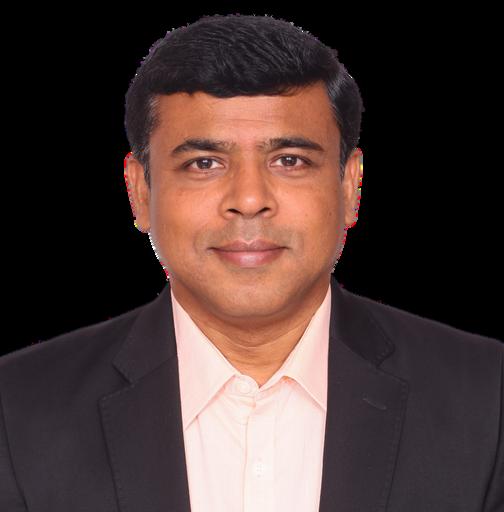
HEAD – INTERNATIONAL BUSINESS, FOURTH PARTNER ENERGY
CONVERSATION HIGHLIGHTS
India’s commitment to renewable energy transition has the potential of attracting $800 mn investment over the next decade
Financial viability, scalability, and government support are key factors in Fourth Partner Energy's market evaluation process. Stable and transparent policies are crucial for the flourishing of the renewable energy sector in India
What makes India’s RE outlook promising from a policy/ regulatory point of view?
India is amongst the fastest growingrenewables markets globally– with over 200 GW of installed renewables capacity and 30% of RE in the energy mix, the country is now targeting Net Zero by 2070 Three recent policy initiatives taken by the Centre that provide a tremendous fillip to the industry include
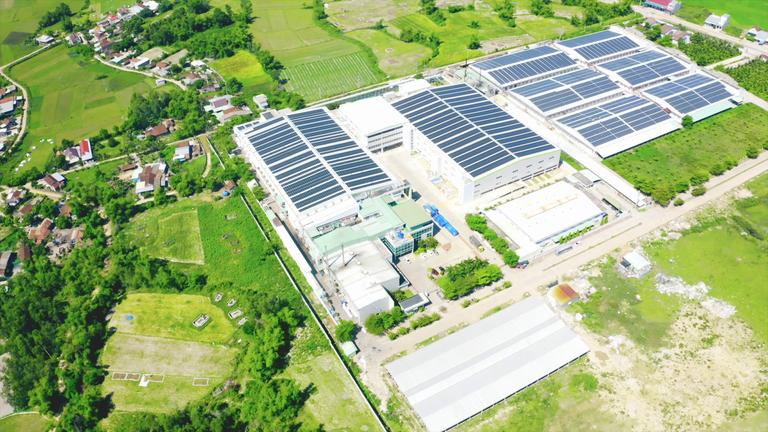
Notificationof GEOA or the Green EnergyOpen

Access norms
Waiver of transmission chargesfor RE under ISTS
Issuance of annual 50 GW Renewables tenders to accelerate the energy transition
Recent estimates by financial sector experts India could well receive $800 bn investment into green energyover the next decade acrossRE adoption, batteryenergy technology, grid infrastructure, and development of green hydrogen This interest in India is only because the country is ripe for energy transition and the government is committed to it In the C&I segment, we are increasingly meeting firms that want to maximize the consumption of renewables, as they are aware they play a pivotal role in the country’s decarbonization story These are clear indicators of the potentialof India’s renewables growth story
What are some of the biggest challenges faced in Indiafrom a policy perspective?
In India, electricity is a concurrent subject– which means despitenotification from the Centre, Statesare permitted to interpret, adapt,and issue policiesindependent of centralguidelines. This often leads to policy doublespeak with States amendingregulations frequently For any sectorto flourish and attract significant investment – longterm, stable and transparent policy, along with quick single-window approvalsis imperative
Another challenge is the financial health of Discoms – which results in States often amending
policy in the fear that Renewables will take away the lucrative, high-paying commercial and industrial consumers Given that climate change and emissions control is a priority: an energy transition is no longeran option; which means Discomswill have to realize that encouraging open access and enabling the usage of grid infrastructure by RE developers is an alternatesource of revenueand is better for the planet
Even at a central level,issues like ALMM for Open Access projectsor notifications around the Group Captive structure need to be issued after assessing all stakeholders’ opinions and not in an ad-hoc manner
Notification of uniformpolicies across Statesfor OA charges, bankingsettlement, and CEIG approvalsin line with GEOA norms will boost the sector
Could you pleaseprovide insights into Fourth Partner Energy's approachto market entryand expansion in different countries?
Fourth Partner Energy adopts both an active and passive approach to market entry, actively seeking attractive countries while also considering partnership propositions. In evaluating potential markets, our key criterion is
the long-term scalability, which depends on the presence of credible Commercial and Industrial (C&I) companies and their growthrate, complemented by government policies promoting renewable energy sources and improving the energy mix. With a strong track record of serving over 200+ corporate houses in India, we also consider the presence of our existing clientele in a targetmarket as an indicator of potential sales opportunities Additionally, we conduct thoroughvalue chain analyses to assess market maturity and identify the unique value proposition our company can bring, allowingus to position ourselves strategically Our primary businessmodels revolve around decarbonizing the electricity requirements of the C&I sector through onsite solar, offsite solar,wind-solar hybrid solutions, battery energy storagesystems (BESS), and electric vehicle(EV) charging infrastructure During market assessments, we carefully examinethe segments in which we can participate based on the local laws and regulatory environment. Furthermore, we prioritize the financial viabilityof projects and aim to provide attractive economic incentives and savings to C&I companies This entails a comprehensive evaluation of factors such as materialcosts, tax and duty exemptions, fiscal benefits, debt availability, and the tariff we can offer in comparison to the retail grid tariff Our corporate structure strategy aligns with local foreign direct investment (FDI) allowances for the energy sector
IN CONVERSATION
JUNE-JULY ISSUE 2023 | PG 22 | INDIA
We would appreciate it if you could highlight one key policy and one key regulatory challenge from each of the following geographies where Fourth Partner Energy operates.
Indonesia
Policy challenge: Indonesia faces policy challenges as it aims to transition from conventional thermalpower to greeneralternatives While the government sets targets for renewable energy, tenders released by PLN-affiliated entities require a high percentage (40-50%) oflocal content, including specified components and equipment However, the imposition of local content results in a 30-40% higher cost for the domestic balance of the system compared to imported counterparts. Additionally, Indonesia's PV panel manufacturing capacity islimited and without the latest technology Has an annual module production capacity of 1 6 GWp, with 50% of the capacitygeared towards exports.This situation presentstechnical, availability, and financial impactson projects
Regulatory challenge: In terms of regulatory challenges, Indonesia's booming economy attracts both local and foreign directinvestment (FDI) companies interested in committing to more renewable power to decarbonize their supply chains However, the current regulation imposed by PLN limits onsite solarprojects to about15% of a factory's contractdemand, without provision for offsitesolar or open access schemes This restriction hampersthe ability of the commercial ctor to fulfill their wable energy
Vietnam
Policy challenge: The country has shown significant growth in solar power with over 16 GW installed in just over two years, mainly due to favorable feed-in tariffs. However the absence of clear policies on rooftop solar and direct power purchase agreements (DPPA) poses a major challenge Although the recent Power Development Plan VIII has removed the 1 MW/meter connection limit on rooftop solar and mentioned the introduction of DPPA, more specific guidelines are needed for their effective implementation
Regulatory challenge: In terms of regulatory challenges in Vietnam the state-owned utilityEVN does not allow power to be fed into thegrid, requiring projectsto be built with zero export devices To stimulatethe market, provisions for net meteringand energy settlement should be established These measures wouldenable better sizing of solar plants and provide more certainty for C&I clientsin making off-takecommitments Also, bringingin offsite solar and wind with open accessschemes will help the companies in the C&I sectorwith large power requirements to consume green energy
Bangladesh

Policy challenge: Regarding Bangladesh, the country has implemented favorable policies foronsite solar power projects, particularly through its net metering policy The net metering policy allowsup to 10 MW or 70% of the contract demand, along with guidelines on
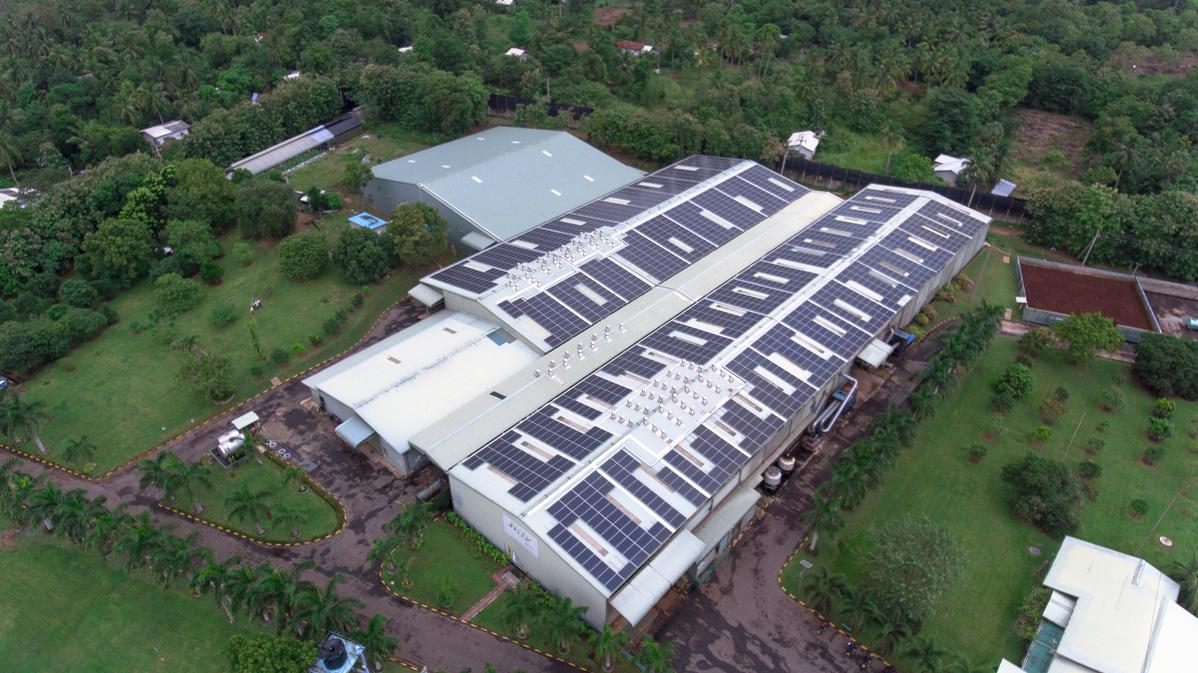
payment bank guarantees. However,reforms are needed on the input side of project development to improve cost efficiency Criticalequipment such as modules and inverters are not readilyavailable from domesticsuppliers, and the high importduties and taxes further impede projecteconomics. Offering fiscalincentives and tax holidays for renewable powerdevelopers can stimulate the market
Regulatory challenge: In terms of regulatory challenges in Bangladesh, although the net metering policy is supportive, the process of obtaining net metering is tedious and timeconsuming To address this issue, the government should consider implementing a streamlined single window clearance process with defined time guidelines for approval, simplifying and expediting the net meteringapplication process
Additionally, we are interested in learning about Fourth Partner Energy's plans for international business expansion. Could you please shareany new markets or regionsthat the company is considering exploring?
Building upon our established presence in two South East Asian countries, we are strategically poised for further expansion in the region With a deep understanding of the local energy landscape and a proven track record of delivering renewable energy solutions, we are keen to leverageus expertise and capitalize on emerging opportunities in neighboring markets
JUNE-JULY ISSUE 2023 | PG 23 | INDIA IN CONVERSATION
Trina Solar accelerates net-zero practices to help build a sustainable planet
World Environment Day turns 50 on June 5, 2023 Trina Solar, a leading global PV and smart energy total solution provider inspired by the Kyoto Protocol since its inception, has been promoting sustainability through renewable energy for the past 25 years, while pursuing its mission to make solar energy accessible to all.
Trina Solar aims to use 100% renewable energy in global manufacturing and operations by 2030 in order to contribute to the Paris Agreement's climate objectives The company has expanded its sustainability efforts by implementing a variety of net-zero practices, including: net-zero operations, a net-zero value chain, and net-zero products
Net-zero operations to uphold its green commitment

Trina Solar has employed a variety of carbon neutrality measures in order to meet its 2030 objective. Included in the plan are improvements to energy efficiency, net-zero industrial parks and factories, waste reduction, reuse, and recycling (3Rs), use of renewable energy, digital management of energy and carbon emissions, and development and implementation of carbon reduction technology
Trina Solar insists on incorporating environmental responsibility into every aspect of its operations. The company has instituted a thorough and effective ISO14001 environmental management system at all of its global plants, taking into consideration the preservation of the local ecosystem and biodiversity from the time it selects sites for its manufacturing facilities Through an array of environmental management systems and processes, the environmental impact of the organization's products, activities, and services is effectively minimized
In April 2023, Trina Solar's Yiwu plant became the first in the PV industry to be officially certified as a Zero Carbon Factory. In addition to reflecting the company's carbon reduction practices in technology, products, equipment, and process management over the past quarter century, this demonstrates Trina Solar's strong commitment to sustainable development
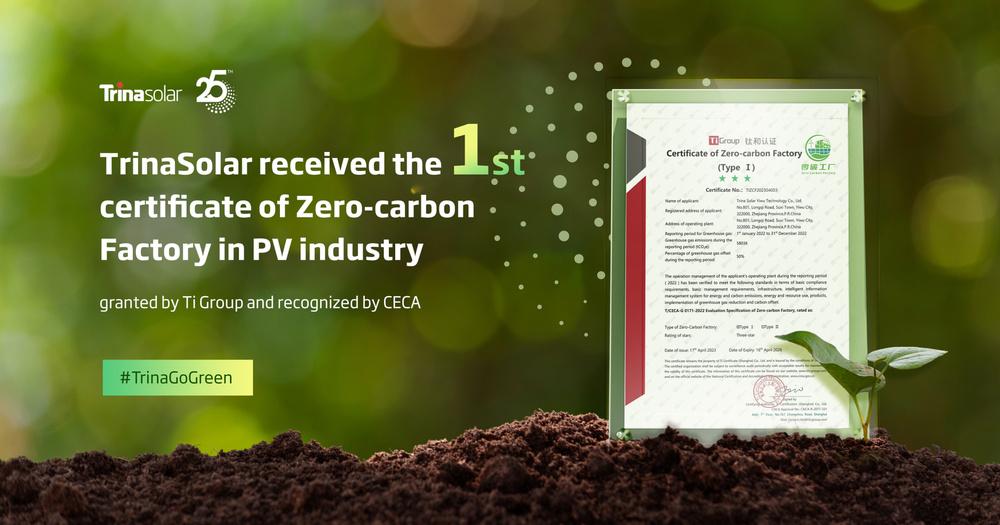
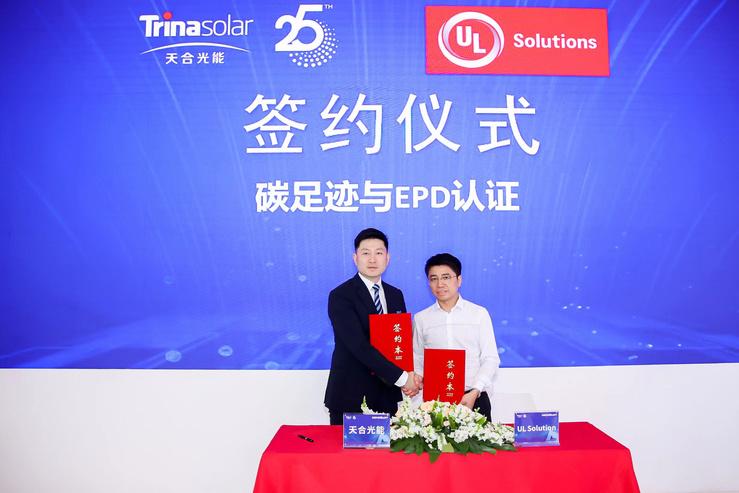
with partners
Trina Solar not only implements its own sustainable development principles, but also endeavors to convey its vision and goals to its global associates By incorporating sustainability into all procurement and research processes, the organization is committed to working with global partners to promote a net-zero value chain and establish a green ecosystem
Together with its partners, Trina Solar has split the carbon footprints of its modules and developed low-carbon silicon materials Trina Solar's 150 micron and 130 micron wafers have a 20% lower carbon footprint than conventional wafers, thanks to the company's technical efforts to reduce wafer thickness As a result of its exceptional performance in the green supply chain field, Trina Solar was designated a "National Green Supply Chain Management Enterprise" by the Chinese Ministry of Industry and Information Technology (MIIT) in February 2023, when the 2022 Green Manufacturing List was released
To become a globally competitive and innovative leader in value-added supply chain services, Trina Solar will continue to foster cross-sector collaboration and implement a green supply chain to drive the transformation and upgrading of upstream and downstream entities

Contributing to a sustainable future through net-zero products
The path to carbon neutrality is guided by green technology Trina Solar is creating a green, net-zero energy future with its customers via its superior technology platforms and innovative, ultra-high power products
In 2022, Trina Solar's Vertex modules were awarded a Life Cycle Assessment (LCA) Certificate by TÜV Rheinland for their low-carbon management capabilities throughout their entire life cycle Later that same year, TÜV Rheinland again awarded the company's Vertex modules with a Carbon Footprint Certificate in recognition of the products' industry-leading performance in reducing carbon footprints
Trina Solar is also one of the first companies in the industry to initiate the Environmental Product Declaration (EPD) and carbon footprint certification procedures for n-type modules
Trina Solar's green operations also involve the sustainable use of natural resources, the responsible emission and recycling of waste gas, wastewater, and solid waste, and the substantial reduction of electricity consumption, water consumption, and greenhouse gas (GHG) emissions Trina Solar's GHG emissions per unit of production for cell and module products decreased by 50 81% and 61 88%, respectively, in 2022, compared with those in 2020, attaining or exceeding its carbon emission reduction objectives early
From implementing net-zero operations to developing a net-zero value chain to manufacturing net-zero products, Trina Solar is committed to reducing carbon emissions for the benefit of society at every step of the way Moving forward, Trina Solar will continue to work with all stakeholders to protect the biosphere, support global decarbonization initiatives, and make solar energy available to people everywhere
JUNE-JULY ISSUE 2023 | PG 24 | INDIA
COMPANY FEATURE
20% lower carbon footprint, a net-zero value chain co-created
The Zero Carbon Factory (Type I) Certificate
Trina Solar n-type i-TOPCon Advanced technology steps onto the world stage, with efficiency reaching 26%
Trina Solar, a global leader in solar energy innovation, has unveiled its new n-type i-TOPCon Advanced technology to the world
The technology was given its first public viewing on the first day of the International Solar Photovoltaic Power Generation and Smart Energy Conference and Exhibition in Shanghai on May 24 From next year the Vertex n-type series will be upgraded, with the most powerful module in the series generating more than 700W, the company announced
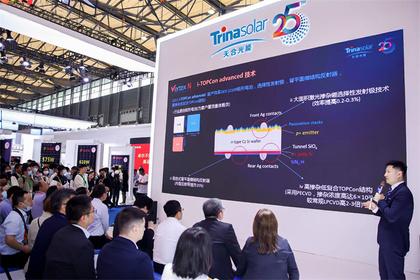
At the exhibition Trina Solar also announced that work on Phase II of its 15GW mono crystalline silicon ingot project at its factory in Xining, Qinghai province, has begun. Work has also begun on its 10GW n-type high-efficiency cell and 10GW n-type module project in Yangzhou, Jiangsu province In addition, Trina Solar has taken the lead in establishing a net-zero system by initiating the Environmental Product Declaration and carbon footprint certification for its Vertex N modules
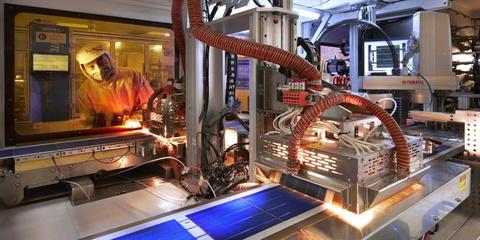
N-type i-TOPCon Advanced cells achieves efficiency of 26% in mass production and 700W+ module power.
Trina Solar consistently leads the industry in n-type technological innovation At the launch, Dr Chen Yifeng, associate vice president of Trina Solar, underlined the importance of four innovations: the 210R rectangular cell, the selective boron emitter, the backside micro structure reflector, and the highly doped TOPCon structure with PECVD These have enabled new-generation i-TOPCon Advanced technology to deliver potential production efficiency of 26%, with module power output of up to 700W.
Typically for utility power plants, the Vertex N modules with power up to 700W further reduce LCOE and will come to mass production next year
Trina Solar is a pioneer in integrating rectangular cell technology and ntype i-TOPCon Advanced technology, providing tailored solutions for various settings Vertex N 605W modules, designed for power stations in complex terrain and C&I solar stations, feature optimized module dimensions that maximize the use of tracker length, with a 13% increase in installation capacity for single-row tracker systems These modules also maximize the use of container space, the utilization rate reaching 98 5% in a 40-foot-high cube (40HC) container, resulting in a 12 4% reduction in logistics costs and lower BOS costs for customers
Vertex S+ modules deliver power of 450W Compared with regular n-type residential modules in the industry, these modules provide 5 88% more installation capacity for rooftops of the same area.
In the future, with the application of front-side full passivation contact cell technology, the mass production efficiency of Trina Solar’s n-type cells with i-TOPCon Ultra technology is forecast to exceed 27% Furthermore, with the implementation of i-TOPCon tandem technology, cell efficiency is forecast to surpass 30%
In addition, Trina Solar's Vertex n-type modules have drawn the accolades of third-party organizations such as China General Certification, RETC and PVEL for their reliability
40GW n-type cell will unleash vertical integration to ensure global delivery


The Trina Solar projects in Qinghai province and Jiangsu province lay a solid foundation for continuous material supply for the company’s n-type modules and ensure worry-free product delivery.
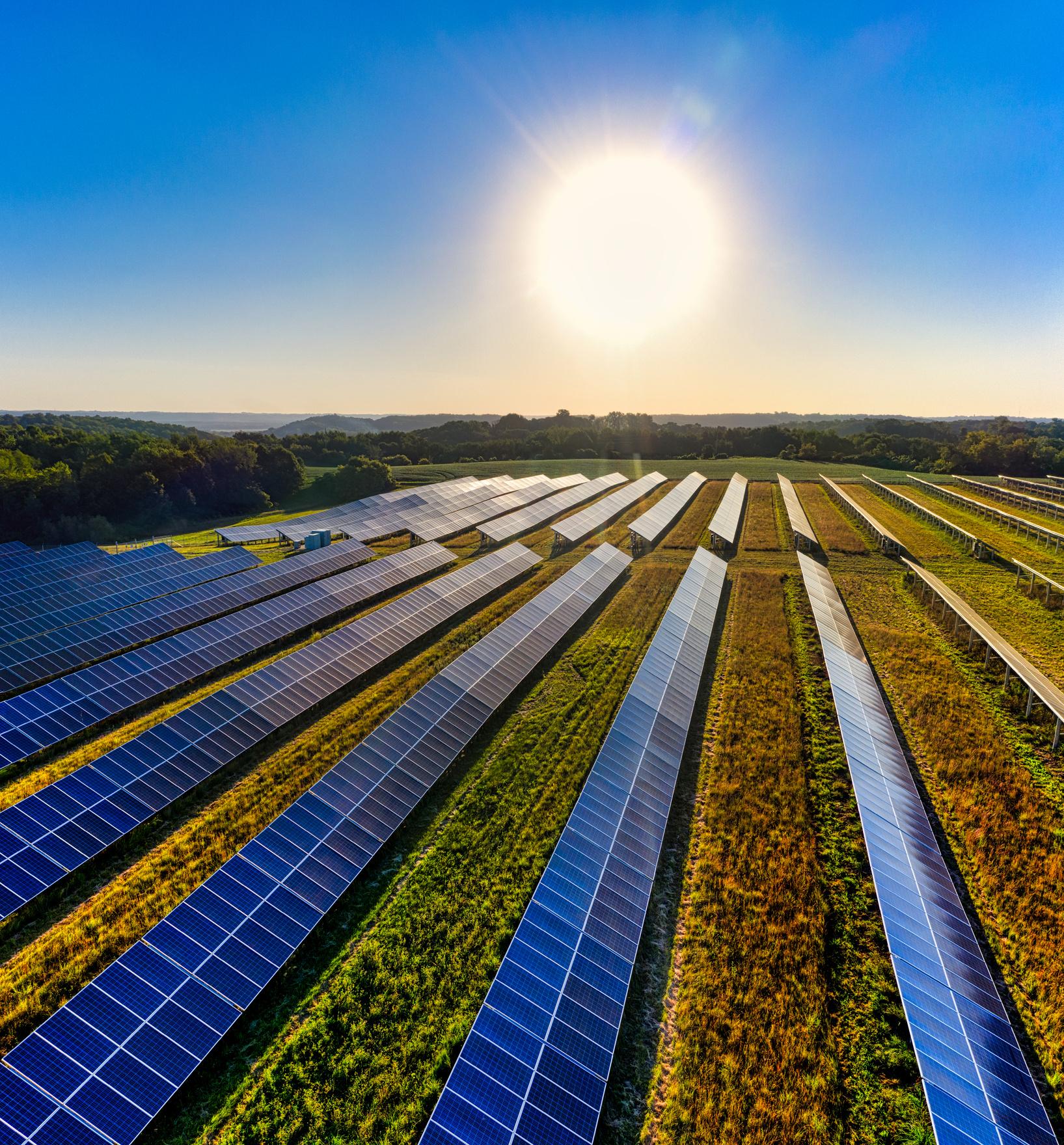
By the end of the year, Trina Solar's module production capacity is forecast to reach 95GW while cell production capacity 75GW, with 40GW dedicated to n-type cells
With its leading n-type i-TOPCon technology, comprehensive portfolio of all-scenario Vertex n-type products, high reliability, low carbon footprint, complete net-zero system, integrated n-type production capacity, and the convergence of an industry-leading ecosystem, Trina Solar has achieved a 360-degree leadership position, spearheading the era of n-type technology
JUNE-JULY ISSUE 2023 | PG 25 | INDIA
PRODUCT FEATURE
Connecting, Engaging, Succeeding –GoodWe’s Customer Meet at Lucknow
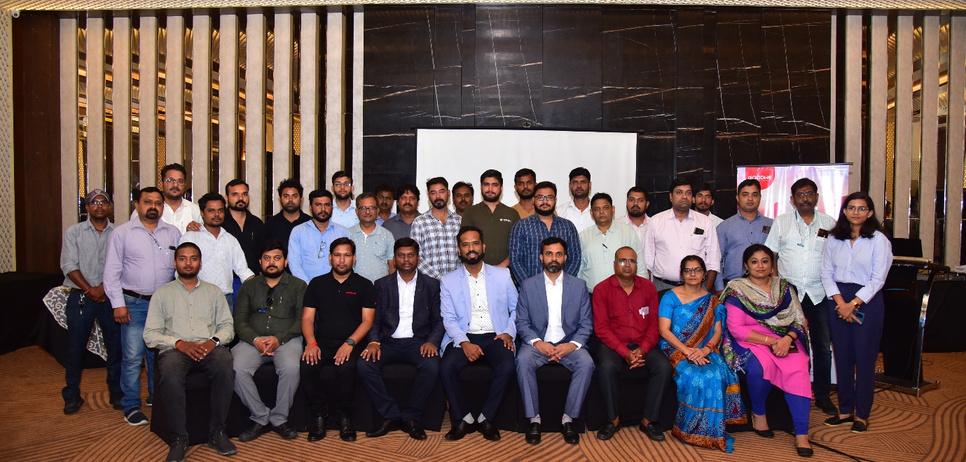
Lucknow, Uttar Pradesh, India, June 23rd, 2023: GoodWe new destination for its ongoing Customer Meet was ‘The City of Nawabs’Lucknow The event was supported by Evervolt Green Energy Pvt Ltd Lucknow, a city so rich in heritage is rapidly embracing Renewable & Sustainable source of energy and has been actively promoting the installation of solar power systems The Uttar Pradesh New and Renewable Energy Development Agency (UPNEDA) has been implementing various initiatives to encourage the adoption of solar energy, including rooftop solar installations, solar parks, and solar street lighting projects
Furthermore, Lucknow has set a target of generating 150 megawatts (MW) of solar power by 2024, as part of the state government's renewable energy plans. This target indicates the confidence in the city's solar energy potential and the commitment to expanding its solar infrastructure
Looking at this significant potential of the city, GoodWe & Evervolt organised this engaging event to welcome Lucknow Customers The event featured keynote speeches from GoodWe executives, interactive presentations and a networking session where attendees had the opportunity to connect with GoodWe & Evervolt team for suggestions and feedback The event was also an opportunity for GoodWe to showcase its latest product offerings & services which generated significant interest among attendees It also covered O&M challenges and gave real-time solutions to customers The discussions were especially focused on the Residential Range of Inverters as Lucknow is tapping on Rooftop Solar rapidly
GoodWe’s Residential Range XS, DNS & SDT G2 series were the most talked about and demanded inverters and special on-spot discounts were available for interested customers
When it comes to residential solutions featuring superior safety and easy installation, GoodWe is the ideal choice for homeowners to going solar It not only gives unparalleled experience of green energy but also helps in optimal solar energy usage, reduced electricity bills and much more
A fun quiz made the session more interesting, and Prizes were distributed to winners There was also a classical dance performance to show the rich culture of Lucknow and entertain the customers The session ended with a grand lunch with the customers and an enriching Networking session This Interaction not only gave GoodWe an insight into the on-ground realties but also helped shape constructive discussions with customers to make informed future plans.
Overall, the Customer Meet Event was a great success, and GoodWe looks forward to hosting similar events in the future to continue engaging with its customers and driving innovation in the industry
About GoodWe

GoodWe is a world-leading PV inverter manufacturer and smart energy solution provider listed on Shanghai Stock Exchange (Stock Code: 688390) The company has more than 4,600 employees worldwide and has a track record of over 52 GW of installations in over 100 countries and regions GoodWe offers an extensive range of products and solutions tailored for residential, commercial and industrial, and utility-scale PV systems, delivering reliable and high-performance solutions across its entire portfolio. In 2021, GoodWe was recognized as one of the top three hybrid inverter suppliers worldwide by Wood Mackenzie
For more information please visit: www.goodwe.com
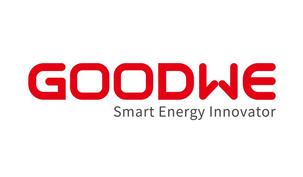
JUNE-JULY ISSUE 2023 | PG 26 | INDIA
COMPANY FEATURE
A Powerful Hit Required to Decarbonize Steel Sector

In an increasingly carbon-constrained world, solar energy technologies represent one of the least carbon-intensive means of electricity generation With a word of honour Solidus Techno power Pvt ltd is working dynamically for Steel Sector from the last 3 years, in line with its vision of capturing carbon footprints As Stated by Mr Harvinder Singh (Director - Solidus) “There is nothing that alerts the world more than action”
As we know that Iron and steel industry is one of the most energy intensive and largest contributing industries to global greenhouse gas (GHG) emissions Steel production is a significant part of global CO2 emissions It is estimated that steel product is responsible for 7 2% of all CO2 emissions according to Carbon Brief In 2019, 1875 million tons of steel was produced This means that at least 3375 million tons of CO2 was produced Coal-fired power plants emit 1 1GigaTon of CO2 into the sky every year
Global Steel emissions among all other sectors:

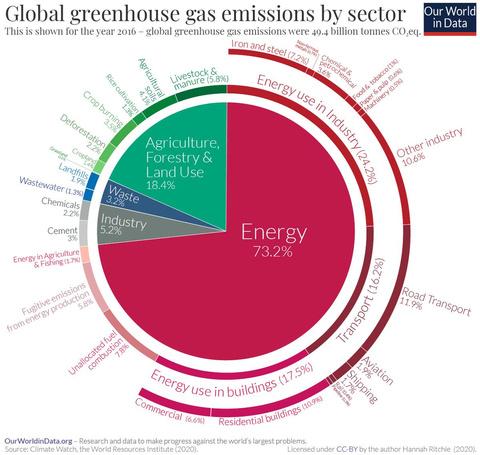
The International Energy Agency estimates that direct CO2 emissions due to crude steel production is approximately 1 4 tons CO2 per ton steel produced Recycling Today claims the numbers are slightly higher, roughly 1 85 metric tons of CO2 per ton steel Coal accounted for over 40% of the overall growth in global CO2 emissions in 2021 Coal emissions now stand at an all-time high of 15.3 GTon, surpassing their previous peak (seen in 2014) by almost 200 MTon
The steel industry in India is among the most important industries in the country In 2019, India became the second-largest steel producer in the world and now is the time to decarbonize Steel Sector with a strong punch
Solidus Techno Power Pvt Ltd has dynamically targeted Steel Segment for reducing carbon footprints on a massive scale With this aim Solidus Techno Power Pvt Ltd Installed its first 1 7 MWp Solar PV installation at Jyoti TMT (Mega steel Project) in the year 2019 and till date (2023) company has climbed up the ladder within short span of time with coverage of more than 30 Big Steel Industries PAN INDIA with Cummulative Solar capacity of 30 MWp in Steel Sector and more than 50 MWp in aggregate Also, Solidus is driven by the best of solar industry professionals having rich experience in design & erection of solar PV projects in India
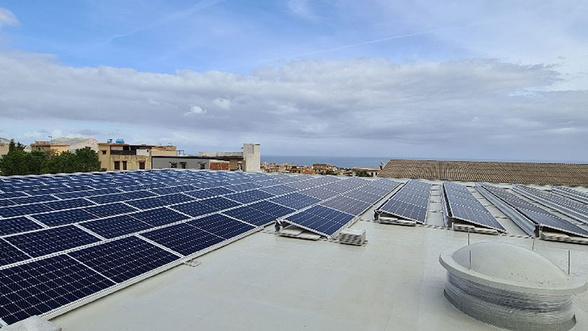
“The focus on decarbonization and sustainable technologies demonstrates our commitment to a better future for all” said Harvinder Singh M D of Solidus Techno Power Pvt Ltd

Now, Solidus has become the first preferred choice in the steel industry for its strong ethical values, & high standard of Quality Solidus Techno Power Ltd has set off 66 Lac Ton CO2 till date and is continuously thriving towards zero emission

JUNE-JULY ISSUE 2023 | PG 27 | INDIA
COMPANY FEATURE
BUSINESSHEAD-RENEWABLES SOLIDUSTECHNOPOWERPVTLTD HARVINDERSINGH Industr energy 50% Other industry 21.9% Iron& Steel 14.9% Chemical&petrochemical (energy) 7.4% Foodand tobacco 2.1% Industry energy 24 2% Other industry 10 6% Chemical & petrochemical (energy) 3.6% Paper, pulp & printing 0.6% Food and tobacco 1.0% Machinery 0 5% Iron & Steel 7.2% Non-ferrous metals 0.7%
Solidus Techno Power Pvt Ltd's solar installations are paving the way for a greener steel sector, one ton of steel at a time.
Multi Award Winner Solis Cements its Position as 3rd Largest Global Inverter Manufacturer

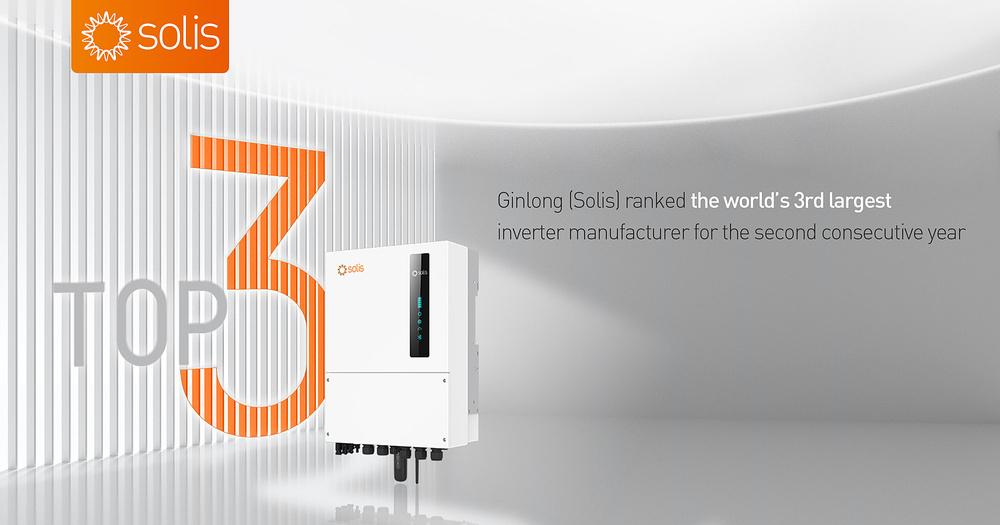
6th July, 2023, Ningbo, China: Ginlong(Solis) Technologies (the company), one of the most experienced inverter producers in the world, has been ranked the world’s 3rd largest inverter manufacturer for the second consecutive year.

This latest success builds on a string of awards and accolades for Solis over the last 18 months Only last week the company was presented the “top inverter brand 2023” seal for Belgium by respected global market research organisation, EUPD; having recently gained the same seal for the Netherlands and South Africa This marks the eighth year running in which Solis has been recognised by EUPD, based 100,000 interviews across more than 50 countries
Reflecting on the company’s performance in 2022 and beyond, Sandy Woodward, Solis General Manager Europe and South Africa, said: “I am delighted that Solis has been ranked so highly for another year, and that we have maintained our position as the world’s third largest inverter manufacturer I’m particularly proud of our progress during 2022 in the energy storage inverter segment, in which Solis achieved year-on-year growth of more than 500 percent; accounting for 18 percent of our total operating revenue
“This remarkable expansion can be attributed first and foremost to our dedicated team of more than 4500 people across all the major continents, but also to our high brand recognition, strong channel competitiveness and deep commitment to R&D ”
In 2022, the company's R&D expenditure increased significantly by 74 percent, reaching a total investment of USD 45 million Solis currently boasts an annual production capacity of 40GW, which is scheduled to double to 80GW in July 2023.
Ranked among the world's top inverter manufacturers for the second consecutive year, Solis continues to shine as a beacon of innovation and success in the renewable energy industry.
About Solis
Established in 2005 and listed on the Shenzhen Stock Exchange (300763. SZ), Ginlong (Solis) Technologies is one of the largest and most experienced global solar inverter manufacturers The company provides cost-effective solutions for homes, businesses and large-scale power plants; delivering value at every level of the solar supply chain and appealing to homeowners and businesses, as well as electricity producers and renewable energy investors globally Combining a global supply chain with world-class R&D and manufacturing capabilities, validated under the most stringent international certification, Ginlong optimises Solis inverters for each regional market, serving and supporting its customers with a team of local experts The company aims to work with stakeholders to accelerate the world's journey towards a more sustainable future
For more information please visit: www.solisinverters.com
JUNE-JULY ISSUE 2023 | PG 28 | INDIA
COMPANY FEATURE
INDEPENDENT INDUSTRY TRACKER RANKS SOLIS AS WORLD NUMBER 3, BY SHIPPED MW, FOR SECOND YEAR RUNNING
Sineng Electric - A DNV-Endorsed Bankable Brand, Demonstrating Excellence in Product Design and Performance
DNV the world-leading provider of testing certification and technical advisory services, has recently released a comprehensive bankability report of Sineng Electric after the exhaustive evaluation of its string, central and PCS inverters The assessment covers every facet of product design, quality, performance and reliability, reaffirming the company's steadfast pursuit of excellence
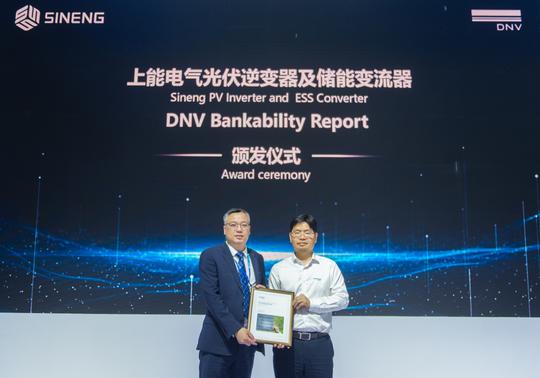
With the rigorous scrutiny of financials, technical features, product quality, supply chain, manufacturing capacity, after-sales service and other criteria, the report provides valuable insights for decision-making and serves as an authoritative reference for international investors, EPC companies, and other stakeholders when selecting the inverter brand and financing projects
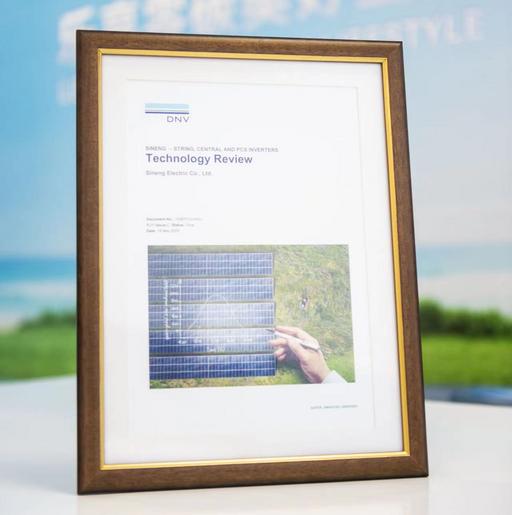
Based on the substantial investment in independent research and development, Sineng provides robust PV and energy storage solutions to maximize investors’ return on investment Among all the offerings, the EH series EH-0200-HA-M-US string PCS stands out as a groundbreaking option in energy storage applications. For the modular design, the EH series PCS offers exceptional flexibility while ensuring utmost reliability
Moreover, Sineng's 275kW/350kW string inverters are yet another testament to our engineering expertise The remarkable SP-350K-H1 string inverter offers a high DC/AC ratio and can be compatible with various PV panels, thus optimizing the projects' LCOE Our flagship products - EP series central inverters ranging from 2500kW to 3750kW are shining examples of excellence, delivering reliable power output, maximizing yields, and ensuring convenient O&M These superior features have been proven through their successful commissioning in numerous utility-scale PV projects
About Sineng
Sineng Electric Co , Ltd is the global leading supplier of a comprehensive product portfolio including PV inverters and energy storage systems for utility-scale, commercial & industrial, and residential applications, as well as power quality products
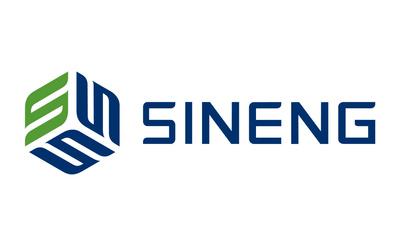

By establishing four R&D centers and leveraging top-notch resources, Sineng's unwavering commitment to technological innovation has enabled more people to access cost-effective, reliable, and sustainable energy After the three global manufacturing bases being put into operation, the annual production capacity can now reach 40GW Known for the engineering excellence, rigorous testing standards, and consistent quality, Sineng is a market leader in the industry and ranks Top 8 in the global PV inverter market share
Providing a wide range of solutions and services across the globe Sineng is playing an important role in accelerating the global energy transition, striving to build a greener future
"DNV's thorough evaluation once again confirms Sineng’s technical advancement, top-notch product quality, and outstanding customer service, further enhancing our influence in the global market," declared Yuelin Wang, General Manager of Sineng Electric System Solution Division. Sineng's ongoing efforts to improve efficiency, reliability and safety have resulted in an extraordinary product line-up that sets the industry benchmark As the world forges ahead on its path towards a green future, Sineng Electric remains dedicated to its core values, ceaselessly offering cutting-edge solutions
JUNE-JULY ISSUE 2023 | PG 29 | INDIA
COMPANY FEATURE
DNV, the world-leading provider of testing, certification, and technical advisory services, has released a comprehensive bankability report of Sineng Electric after an exhaustive evaluation of its string, central, and PCS inverters.
SOFAR, the global leading supplier of PV & ESS solutions, unveils its latest utility ESS innovation SOFAR PowerMaster embodied with stateof-the-art technological breakthroughs at SNEC 2023
The launch of the fully self-developed PowerMaster marks a milestone of the company’s comprehensive range of PV & ESS solutions for all scenarios It can be seen as a portfolio of 5 key revolutionary breakthroughs pioneering in utility ESS sector, able to tackle key painpoints through increasing power yields at a lower cost, and safe and operation around the clock

Industry-leading Hybrid Cooling System
The innovative combination of air and liquid cooling system provides intelligent monitoring which can reduce heat dissipation loss by about 30% and avoid condensation in battery compartments, thus realizing efficient and consistent cooling Apart from this, the system comes with a lower battery temperature difference≤2 5 ℃ , able to maintain battery cells within the optimal temperature range and help extend the battery lifetime by 14%
Ultimate Proven Safety
Upholding strict safety priorities, SOFAR PowerMaster is equipped with 3+2 safety systems including triple FFS (fire suppression system), flammable gas emission and explosion-proof design to prevent secondary combustion. Meanwhile, the built-in safety design effectively protects the cells against high voltage or current short circuits, ensuring the stable operation around the clock
Flexible Expansion
The modular design is highly adaptive and capable of expanding single chamber storage capacity up to 3 93MWh, which is ideal for flexible needs of capacity expansion Furthermore, the smart rack-level management increases system discharge capacity by 7% By virtue of three-level topology and 99% maximum conversion efficiency, the system maintains less losses and optimal power performance
Optimized Costs with Lower LCOS
The highly-integrated design and refined management further improve power yields and offers lower LCOS for investors compared to traditional energy storage systems Compatible with 320Ah cells, it minimizes the initial investment cost and enables higher energy density Therefore, SOFAR PowerMaster is expected to be one of the most prudent choices for energy storage in the utility sector
Smart Control

In order to streamline the management process, SOFAR PowerMaster adopts the real-time automatic coordination control which guarantees PCS operating at full power In addition, smart control algorithms make flexible and adjustable system capacity possible
Yu Feng, Vice President of SOFAR, points out that SOFAR PowerMaster is expected to inspire a technological revolution in utility ESS sector, for being fully self-developed on the basis of ten years of R&D strength accumulation. “As a leading player in global energy storage market, SOFAR has been recognized by customers worldwide. Furthermore, in collaboration with TÜVRheinland, we have embarked on the development of the utility ESS white paper We are excited about what is to come while focusing on delivering advanced technological breakthroughs to build up a more sustainable society for all,” he added
About SOFAR
SOFAR is a global leading provider of all-scenario solar PV and energy storage solutions Its comprehensive portfolio includes PV inverters with a power range from 1-320 kW, hybrid inverters range from 3-20 kW, battery storage systems, utility ESS solutions, microinverter system and SOFAR Cloud-smart energy management system for residential, C&I, and utility-scale applications. SOFAR has always focused on independent innovation, and now features a global R&D network consisting of three R&D centers, with over 500+ of the company’s workforce assigned to R&D As the world’s fastest-growing solar energy brand, SOFAR entered the TOP5 Global Hybrid Inverter providers and its annual production capacity reached 10GW for PV & storage inverters and 1GWh for batteries by 2021 By the end of 2022, SOFAR had shipped over 18GW inverters to more than 100 countries and regions around the world
Learn more https://www sofarsolar com/
JUNE-JULY ISSUE 2023 | PG 30 | INDIA PRODUCT LAUNCH h f ili
REVOLUTIONIZING SOLAR PROJECT MANAGEMENT: INTRODUCING PNS-ONE, THE ULTIMATE AI BASED SOLAR SOLUTION
In line with our vision of digitalising and speeding up solarisation, we at Power n Sun have created a new tool that will revolutionise how solar EPCs, installers and resellers connect, communicate, initiate and manage their solar projects and the business process of their clients

PnS-One is an innovative, AI-based solar application that is Android, IOS and Cloud-based It provides a seamless and reliable connection with our customers by accessing the App through their unique identity to create, transact, manage and store their data most securely
Pns-One is user friendly, effective and synchronised platform to provide CRM Sales automation Solar Site Survey basic Pv design with detailed site survey reports, SLD, Shadow analysis, 3D visualisation, BOQ, project and inventory management, online market space, post-sales O&M and most importantly, a dashboard to view, control and manage the complete process It has both the features, on-site and back-office desk for practical and real-time connection with employees in the field and office
The PnS-One is the one-stop solar solution for the residential, commercial and Industrial sectors enabling techno-commercial offers in less than 10 minutes, and one can manage the entire solar sales, procurement and installation process in a jiffy, improving the efficiency by more than 500% End users can also use PnS One to plan, install, and monitor their solar rooftop projects, whether Online, Hybrid, or completely off-grid
PnS-One will launch in more than 20 countries in phase 1 The online market space will have the selected products under the PnS portfolio and one page each for each manufacturing company PnS One has acceptance from most of the principal suppliers of the region.
PnS one is available in two versions: Basic, free for all, and the Pro version, which is at a nominal amount The amount paid by the clients will be deducted from the purchases they make from PnS online market space, eventually making it free of cost for the regular users
Critical advantages of PnS market space will be - 100% product availability, hence short site lead time, resulting in optimised working capital deployment, best of the brands and most importantly, excellent prices with Local delivery
PnS-One empowers solar installers, EPCs and resellers and facilitates their business growth The platform offers a range of features tailored to their needs
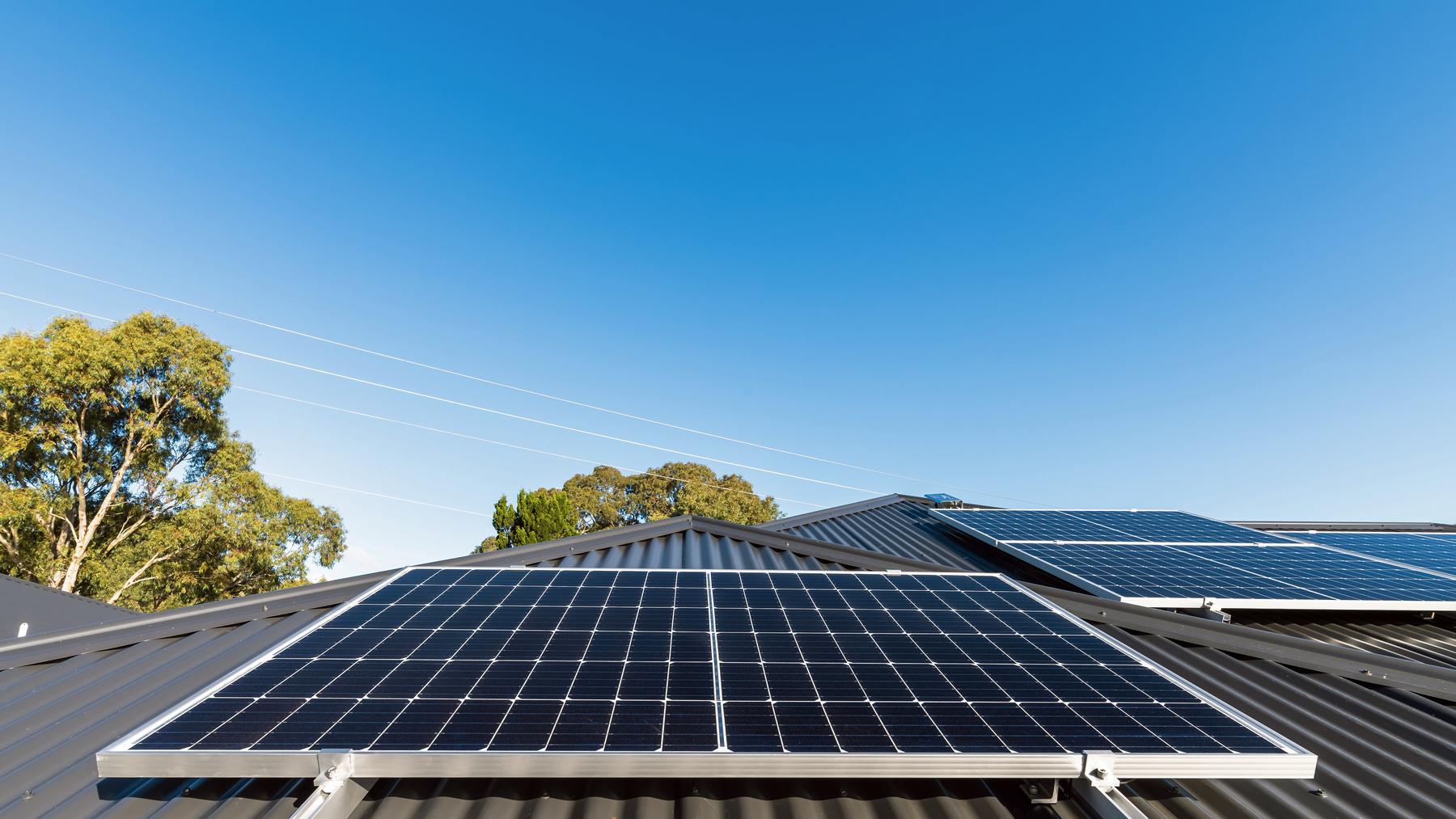

PnS One offers a full suite of features that address common challenges the solar industry faces especially for small and medium enterprises.
Faster Communication: Leverage modern technology to instantly connect your team, regardless of location, facilitating real-time troubleshooting and efficient information sharing
Better Data Collection: Gather comprehensive data to better understand your operations before making critical decisions PnSOne's unified platform collects form data, pictures, and messages, eliminating the need for manual data juggling

Simplified Project Management: Transform project status tracking from a tedious task into a seamless experience Assign tasks, analyse analytics, and make informed choices with ease
Tailored for Field and Office: PnsOne caters to the unique needs of both on-site and office-bound professionals fostering seamless collaboration between teams
Streamlined Administrative Work: Automate administrative tasks like report generation and data cleaning, saving valuable time and allowing you to focus on more important matters
Simplified Workflows: Pns One's cutting-edge technology enables efficient management of sales, execution, and operations while ensuring accountability and adherence to timelines
With Pns-One as your Solar partner, you can unlock the true potential of your solar business Experience enhanced efficiency, streamlined processes, and seamless team collaboration, resulting in better time, cost and quality management
Take charge of the Solarisation journey and contribute to a greener, sustainable future
JUNE-JULY ISSUE 2023 | PG 31 | INDIA
TECH
FEATURE
Download App For more information on PnS-One you can contact on info@powernsun.in +919560203011
Kehua S³-EStore: Innovative Energy Storage Solution for C&I Scenarios
Kehua the sustainable value creator with 35-year experience in renewable energy industry, displayed S3-EStore all-in-one C&I ESS, a brand-new energy storage system in booth #C3,340 at Intersolar Europe in Munich, Germany from June 14th through 16th
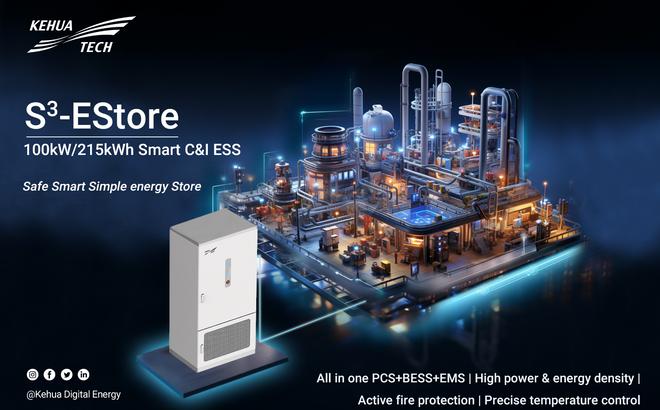
The product consists of bi-directional inverter and battery rack, providing safe and reliable electricity for all kinds of industrial and commercial scenarios, while making more reasonable use of the peak-to-valley price difference, and a variety of operation modes can be set to bring unexpected benefits.
S3-EStore all-in-one C&I ESS continues Kehua's design concept of "Safe, Smart and Simple (S3)"
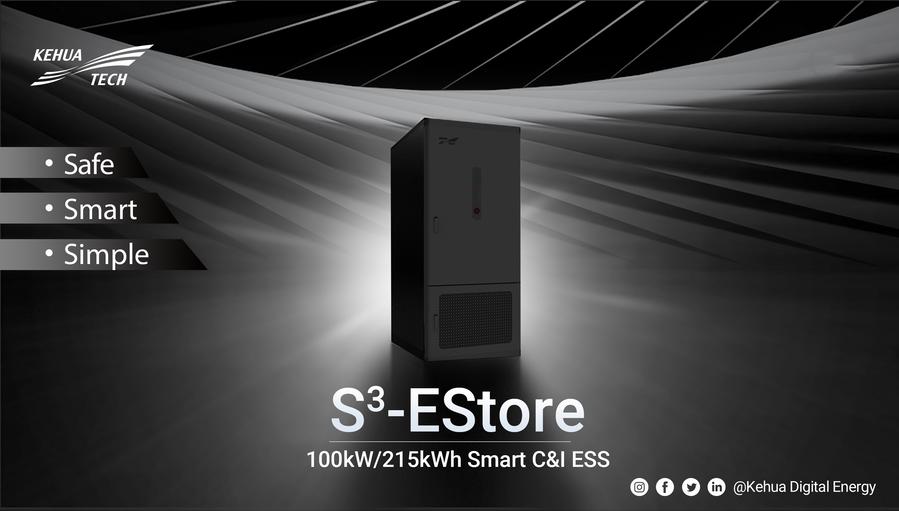
How to define Safe
The battery cell adopts LFP cell. Larger capacity, but fewer cells, lower probability of failure and better reliability The cell-level monitoring with pack-level and system-level fire distinguish system achieves the purpose of flame retardant With the segmentation design of the battery compartment and PCS compartment, improving the safety of customers' battery use The system meets IP55 protection, PCS meets IP66 protection and battery meet IP67 protection, with an optional C5 corrosion resistance level and water level monitoring, all of which can guarantee the operation stability of the equipment in complex environments. Furthermore, the system equips online insulation detection, precise positioning protection, fault removal protection and short-circuit fast disconnection protection to achieve safety protection, which ensure the safety of customers’ using of the system
How to define Smart

The refined thermal management of Kehua's C&I energy storage system requires the temperature difference of the cells in a pack is within 2℃and the temperature difference of all cells in the system is within 3°C (25°C environment temperature), which extends the life cycle of the battery and improves the user's investment return. With multi-modal operation sensing, cloud-side collaborative warning, and health status identification functions, the system is able to improve the overall O&M efficiency and facilitate users to monitor and manage the whole system
How to define Simple
The product has an integrated design, simple and clear appearance and internal structure, which can realize modular deployment and fast installation Free combination, flexible expansion and multiple working modes can solve the stocking problem of installers, achieving the efficacy of "one item for multiple scenarios" Higher power density and smaller footprint (only 1.3m2) saves space resources and installation costs.
"Rising electricity prices due to shortages of traditional energy sources such as natural gas and oil, as well as grid instability caused by the increasing number of photovoltaic generation facilities, are the most common problems that commercial and industrial owners around the world today are facing Last winter, EU generated more electricity from renewable energy than fossil fuels, which is clear that renewable energy can provide power for Europe in all seasons In the future, the market will require a strong energy infrastructure to normalize the year-round supply of renewable energy Therefore, we recommend that commercial and industrial owners pay attention to energy storage and prepare in advance for this " said Jon Zhang, marketing manager of Kehua
More and more installers and integrators are considering investing in energy storage systems, hoping to maximize the use of PV energy through BESS, reduce commercial and industrial electricity bills, or generate revenue through peak and frequency regulation in a profitable way Kehua's C&I energy storage system will perfectly match the needs of these groups
With 35 years of experience in power electronic technology, Kehua has established its leading position around the world For now, Kehua has ranked No 5 energy storage inverter supplier globally in shipment terms in 2021 (S&P Global formerly IHS Markit) and TOP 10 solar inverter brands used in term-loan financed projects from Bloomberg Kehua will continue to create clean energy with its R&D strength and devote to let the world enjoy a zero-carbon life safely
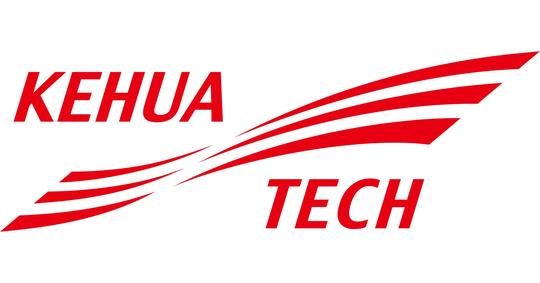
JUNE-JULY ISSUE 2023 | PG 32 | INDIA PRODUCT FEATURE
About Kehua
The First 100MW Liquid Cooling Energy Storage Project in China — Kehua’s Benchmark Application


Overlooking from the sky, a 100MW/200MWh independent shared energy storage power station in Lingwu can be found charging and discharging clean electricity, powering up the development of the magnificent Gobi.
Kehua Digital Energy provided the integrated liquid cooling ESS for the power station the first 100 MW liquid cooling energy storage application in China, as well as an application benchmark in Kehua.
The project (hereinafter “the Ningxia Project”) is located in Ningdong Town, Lingwu City, Ningxia Province, which started construction in September 2022 and was connected to the grid on December 31 The power station is equipped with 63 sets of liquid cooling battery containers (capacity: 3 44MWh/set), 31 sets of energy storage converters (capacity: 3 2MW/set), an energy storage converter (capacity: 1 6MW), a control cubicle system and an energy management system (EMS)
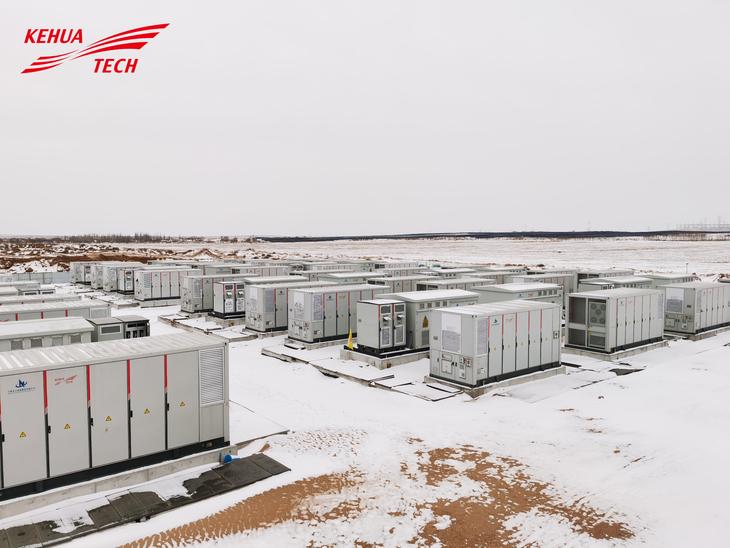
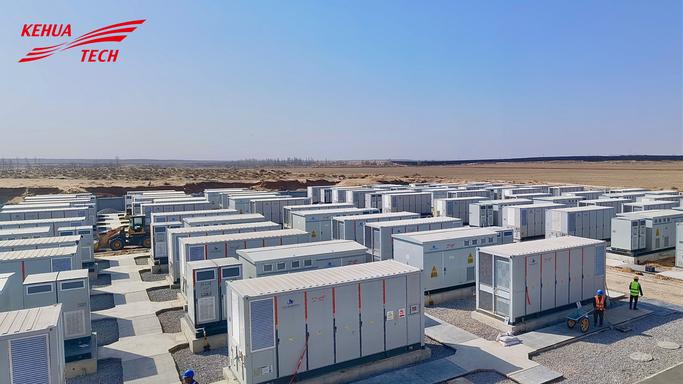

Once the project is put into operation, it will serve as a giant "power bank" and effectively improve power grid's regulation flexibility and new energy accommodation capability in Ningdong
As an auxiliary peaking and frequency regulation hub, the annual peakregulation capacity of the project can reach more than 80 million kWh, which is equivalent to the annual electricity consumption of 100,000 households
At the same time, the project can also provide various auxiliary services such as accident backup, black start and demand response support for the power grid It is an important step in accelerating the application of largescale energy storage in power peaking and grid connection of renewable energy, and has provided a vital reference for the continuous promotion of new energy storage construction
The integrated liquid cooling ESS is complicated, rather than an easypeasy assembly, hence it requires an enterprise to be extremely capable of integration, and demands carefully selected batteries and components, as well as full consideration of safety, O&M, transportation etc
As a highly reliable PV storage expert, Kehua features multi-level safety guarantee design, optimization and innovation on every part such as energy storage converter, battery cluster and container system With more than 35 years of solid experience on power electronics and profound understanding of power grid and energy storage, Kehua safeguards the stable and smooth operation throughout the life cycle of the power station
Through centralized integration and prefabricated non-walk-in battery container system design, Kehua made it possible for the system to operate in higher energy density with smaller land area, more flexible installation, more convenient O&M, more economical result, and effective reduction of LCOE cost.
The advantages of the prefab design are fully reflected in the Ningxia Project According to its project manager, "We had a tight schedule on the project and the workload was heavy. We were faced with the COVID-19 lockdown during the construction, but our energy storage system was prefabricated, which saved us a lot of work for on-site installation and commissioning, so we were able to deliver the project within the lead time After the project was completed, we received an appreciation letter from the customer”
Meanwhile, the nuclear-grade 1500V 3 2MW centralized energy storage converter integration system and the 3 44MWh liquid cooling battery container (IP67) are resistant to harsh environments such as wind, rain, high temperature, high altitude and sand, ensuring a safe, reliable and advanced power station.
In addition, the battery packs of core equipment adopt recirculating liquid cooling technology Based on technological innovations such as intelligent temperature control, cluster-level management, insulation monitoring, system-level fire protection, the packs have integrated liquid cooling temperature control system, cluster-level management system, multi-measure and control system and third level fire protection, all of which made data sharing available in each operating process and as a result, the power station is more stable and efficient with extended life cycle, improved efficiency and reduced losses
Kehua S3 liquid cooling energy storage system is highly favored by the market and widely deployed for its high degree of safety, reliability, plus its great cost reduction and increased efficiency
As a customer-focused company, Kehua will continue to introduce quality energy storage products and solutions through technological innovation and strive to provide a significant tool for the marketization of energy storage and reduce its LCOE.
JUNE-JULY ISSUE 2023 | PG 33 | INDIA PROJECT FEATURE
PIXON’S STRATEGIC COLLABORATION WITH ECOFY Financial Solutions for Dealers and Distributors
PIXON one of the leading premium solar module manufacturer announced their collaboration with Ecofy, a one of its kind green-only NBFC that is committed to resolving the climate finance gap in the Indian retail sector The collaboration aims to address the financial productbased needs of dealers and distributors associated with PIXON, with an all-in-one platform to provide a financial solution
With this strategic alliance, PIXON is taking a significant step forward in its commitment to supporting its dealers and distributors by offering them streamlined access to financial assistance. With this partnership, PIXON aims to simplify the financial landscape for its stakeholders, enabling them to overcome financial barriers and thrive in their business endeavors

Ecofy has established itself as a reliable and customer-centric NBFC catering to the unique requirements of businesses across various industries that are climate friendly & environmentally sustainable The Company offers a wide range of financial products and services, including term loans, flexible credit lines and working capital solutions.
Dealers and distributors associated with PIXON can now access and explore Ecofy’s various financial options tailored to their specific needs This collaboration aims to eliminate the hassle of navigating multiple financial institutions, simplifying the process and saving valuable time and effort for PIXON's stakeholders
"We are thrilled to collaborate with Ecofy to offer our dealers and distributors a comprehensive financial support system," said Mrs Juhi Marwadi, Director of PIXON "At PIXON, we believe in providing holistic solutions that go beyond just our products, and this collaboration reflects our commitment to the success of our stakeholders By simplifying access to financial services, we aim to accelerate their growth and ensure they have the necessary resources to thrive in their business ventures "
The collaboration between PIXON and Ecofy sets the stage for a transformative change in the way financial needs are addressed within the dealer and distributor network By leveraging the strengths of both companies, this partnership promises to unlock new opportunities and create a robust ecosystem that fosters growth, resilience, and success
PIXON, a leading premium solar module manufacturer, has announced a collaboration with Ecofy, a green-only NBFC (Non-Banking Financial Company) dedicated to resolving the climate finance gap in the Indian retail sector.
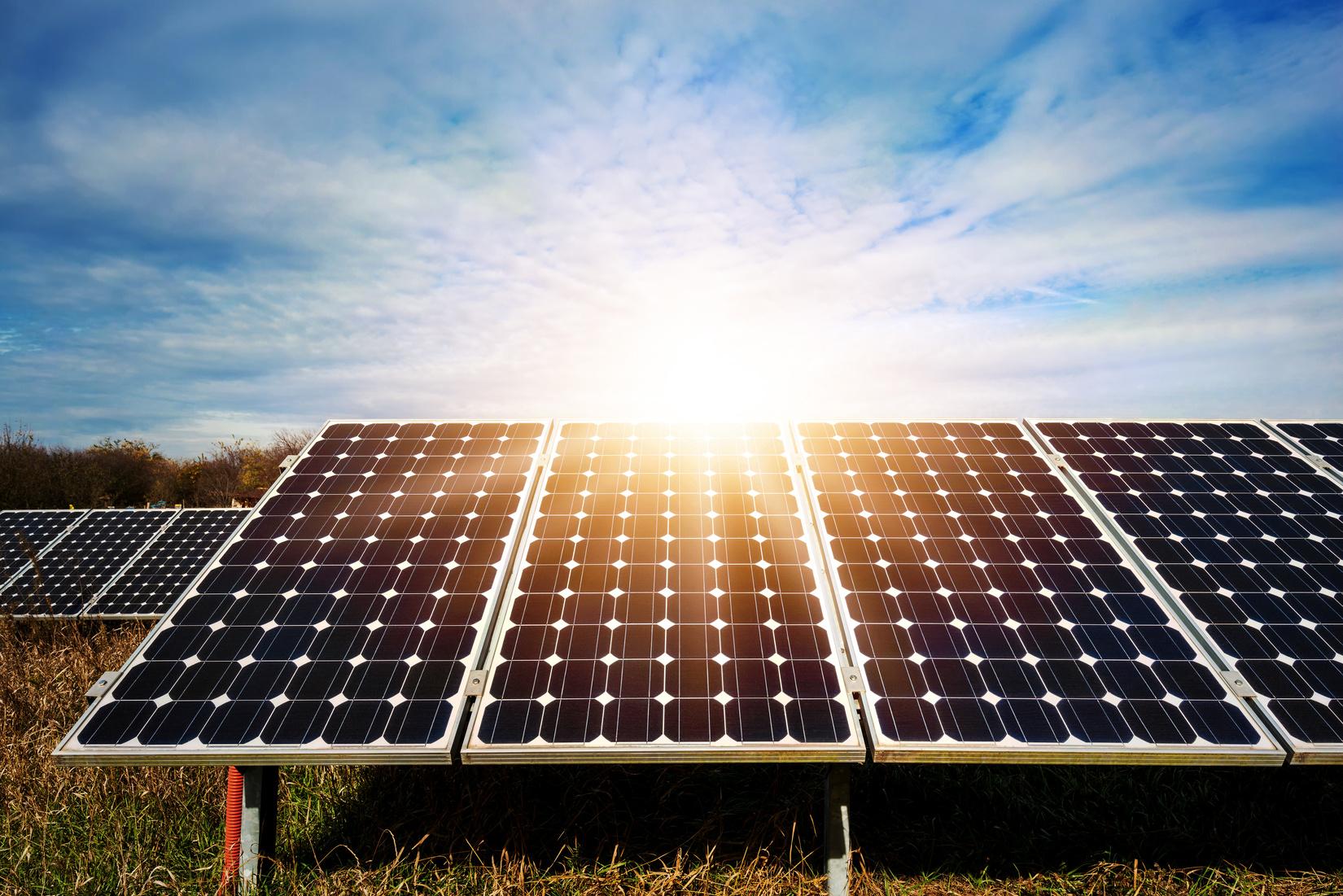
About PIXON

PIXON has its State-of-the-art European technology manufacturing capacity In a remarkable development, PIXON has a state-of-the-art European technology 1 GW Solar Module Manufacturing line This manufacturing line will be capable of manufacturing M6, M10, and M12 modules, offering a power output of up to 600 Wp and an efficiency rate of 21 20% This is propelling the company to new heights in the renewable energy market while making clean energy more accessible and efficient than ever before
About Ecofy
Ecofy is a pioneering NBFC created to finance India’s green transition Promoted by Eversource Capital, Ecofy’s vision is to be a catalyst in accelerating the transition towards a net zero carbon world It partners with individuals and small businesses who want to reduce their carbon footprint and restore balance to the planet Ecofy offers loans for EV (Twowheeler & Three-wheeler), rooftop solar and small-medium enterprises providing E2E digital experience
JUNE-JULY ISSUE 2023 | PG 34 | INDIA
COMPANY FEATURE
COMPANY FEATURE


Revolutionizing Renewable Energy: The Rayzon Solar Success Story
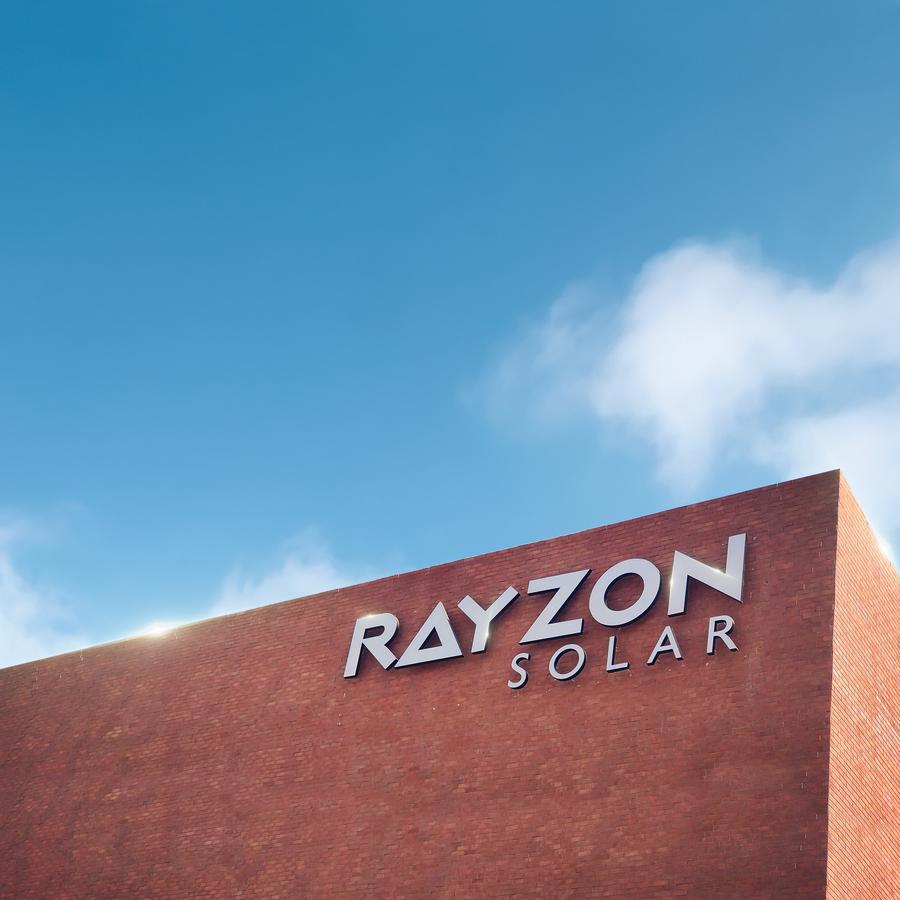
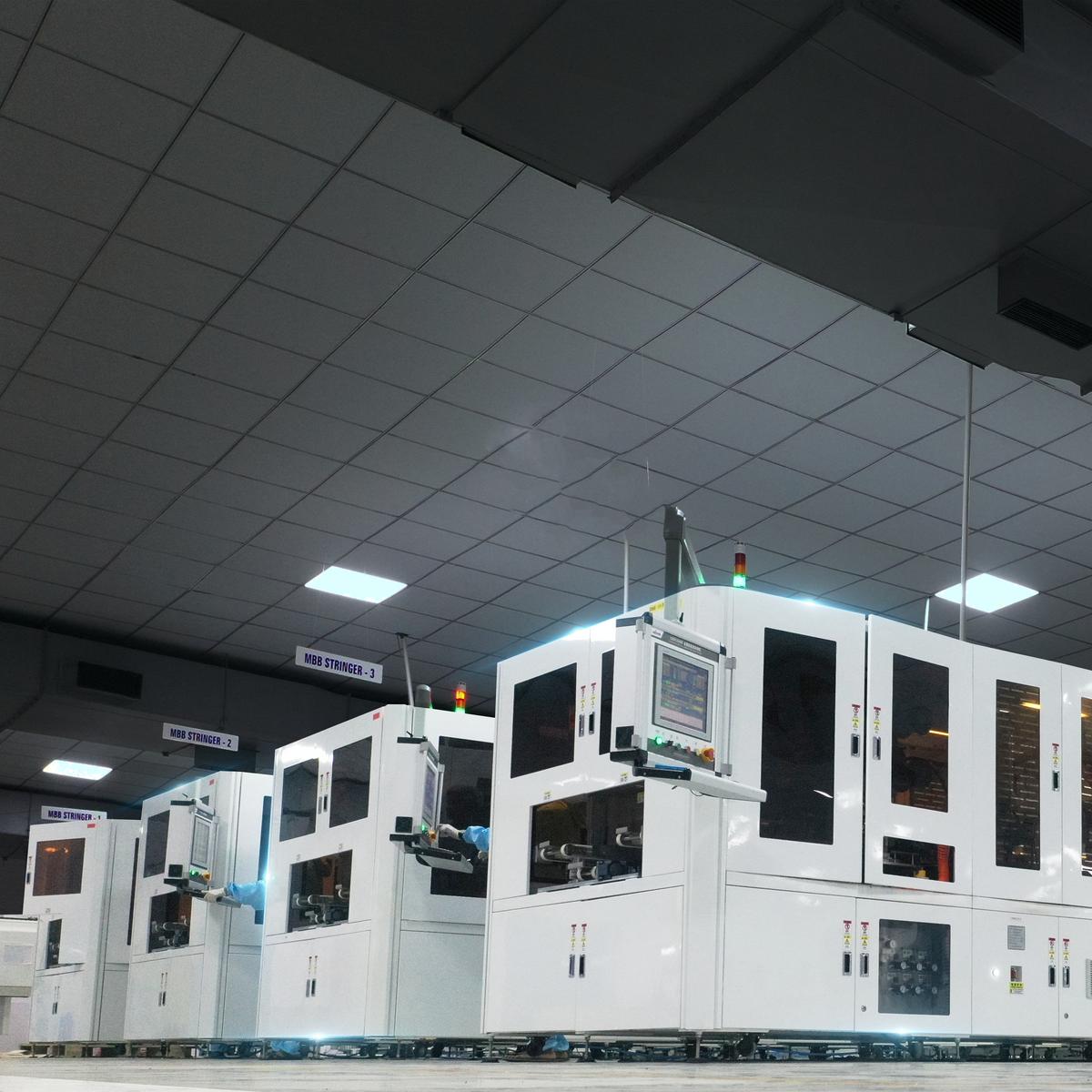
In 2016, Mr Chirag Nakrani and Mr Hardik Kothiya, two visionary entrepreneurs, embarked on a journey that would forever change the solar industry Their unwavering determination and brilliant idea led to the establishment of Rayzon Solar, a company with a clear mission to revolutionize renewable energy.

Starting with just five team members and an initial capacity of 40MW, Rayzon Solar took its first steps towards becoming a global leader in the solar industry The founder's vision was splendid, embodying a majestic dream of delivering clean and affordable solar solutions worldwide As the years passed, Rayzon Solar's commitment to innovation became evident Recognizing that quality, reliability, and technology were key to success, the company invested significantly in frontier solar panel technology
The journey was not without challenges, but the visionary leadership of Mr Chirag and Mr. Hardik kept the team focused and inspired Their understanding of the growing demand for solar panels propelled Rayzon Solar's capacity from 40MW to an impressive 150MW in 2019 and further to an exceptional 300MW in the same year Spearheading strategic initiatives, the founders guided Rayzon Solar towards rapidly adding a capacity of 1 2GW in 2022, ultimately reaching an impressive capacity of 1 5GW Alongside this expansion, Rayzon Solar established a state-of-the-art Quality & Reliability Test Laboratory to ensure the quality of raw materials and the reliability of finished modules This marked a significant milestone, propelling them one step closer to reaching the pinnacle of success
A pivotal moment in Rayzon Solar's journey came in 2023, when the company stood on the brink of achieving new milestones The year was filled with thrilling opportunities, and Rayzon Solar's capacity in India soared to an impressive 2.5GW positioning it as a significant player in the solar industry One notable achievement was the partnership with one of the best IPL teams, the Gujarat Titans This strategic alliance increased their brand value and trust while showcasing their contribution towards clean energy on a global stage
But the journey did not end within India's borders Rayzon Solar's ambition knew no bounds, they have ventured into the international market And then came the momentous decision to expand their reach to the United States. With an eye on capturing the American solar market Rayzon Solar going to set up production capacity of 500MW in the developed nation USA
Throughout its journey, Rayzon Solar understood the importance of quality Trust and credibility were deemed essential to success, leading the company to maintain rigorous quality control standards throughout its manufacturing processes Outstanding performance and durability in each solar panel solidified their position as a trusted brand in the industry. The company's success mantra consisted of making quick decisions, selecting new technology wisely, and implementing it on time
Rayzon Solar's story is one of ambition, innovation, and perseverance The visionary leadership of Mr. Chirag Nakrani and Mr. Hardik Kothiya, led the company to unparalleled success Rayzon Solar's commitment to providing high-quality panels have made it a beacon of hope in the quest for a sustainable future
"As the sun continues to rise on a new day, so does Rayzon Solar's journey towards illuminating the world with clean, affordable, and renewable energy "
JUNE-JULY ISSUE 2023 | PG 35 | INDIA
SuryaLogix and PT. Arfy Reka Cerdas Forge a Powerful Partnership to Propel Innovation in Indonesia
We are thrilled to announce that SuryaLogix and PT. Arfy Reka Cerdas have officially entered into a strategic partnership for the Indonesian market Today, we celebrated the successful completion of the agreement signing ceremony, marking the beginning of an exciting chapter in our journey together
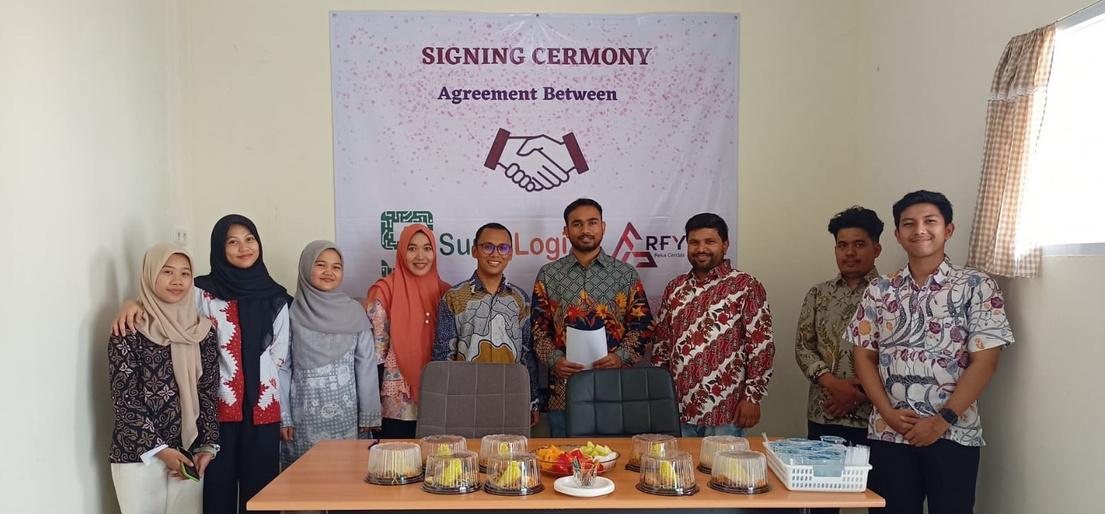
The SuryaLogix team would like to express our deepest gratitude to PT. Arfy Reka Cerdas for their commitment and trust in this partnership

This ceremony symbolizes our shared vision to reach unparalleled levels of success and drive innovation in our industry
During the agreement signing ceremony, we were honored to have the presence of SuryaLogix's CSO, Mr Anil Suradkar, the Director of Arfy Reka Cerdas, Mr Jaya Hastariya, and Senior Engineer, Mr Dnyaneshwar Pawar, along with the entire Engineering Team of Arfy Reka Cerdas

With this collaboration we look forward to leveraging our collective strengths, expertise, and resources to achieve new heights in our respective fields
Together, we will embark on a remarkable journey of growth and create a positive impact on our customers, stakeholders, and the Indonesia industry as a whole
Once again, we extend our heartfelt thanks to PT Arfy Reka Cerdas, and we are excited about the boundless opportunities that lie ahead Here's to a fruitful and prosperous partnership!

JUNE-JULY ISSUE 2023 | PG 36 | INDIA
COMPANY FEATURE
Through the union of SuryaLogix and PT. Arfy Reka Cerdas, we ignite a beacon of collaboration, illuminating the path to unparalleled success and groundbreaking innovation in Indonesia's industry landscape.
INSIGHT
Role of Digitization in Solar Industry Importance of Data Loggers
As the solar industry continues its rapid expansion, it becomes increasingly crucial to maximize generation output and maintain high uptime for solar power plants. To achieve this objective, the digitization of processes from the ground up is imperative This digital transformation enables the minimization of downtime, enhances asset reliability, and ensures optimal long-term performance In this series of posts, we will explore the pivotal role of digitization within the solar energy sector, highlighting the latest advancements and breakthroughs in renewable technologies Today, our focus lies on the functionalities and practical applications of data loggers in on-site solar power plants
Data Logger in Solar Industry
A data logger is a sophisticated electronic device designed to systematically record and store data over a specific period, commonly referred to as data logging In the context of the solar industry, data loggers play a crucial role in capturing and collecting field data related to solar parameters from various sources such as inverters, sensors, meters, or external instruments. These data loggers accurately measure and store the collected information locally within their storage systems
Reputable data logger manufacturers like SuryaLogix typically offer expandable data storage capacities of up to 500GB The stored data is subjected to filtering based on various parameters before being transmitted to a server through different methods such as JSON, FTP, MQTT, or API (Rest API), where it is stored in the server's database This enables users to generate diverse reports, perform queries, and conduct analytical assessments on the data
The user interface or data visualization component serves as the final stage in the data logger's functionality It allows users to interact with and interpret the captured data through intuitive representations and graphical displays The accompanying image below provides a visual aid to enhance comprehension of this concept

Where is a Data Logger used for?
Data loggers find extensive utilization in both commercial and industrial solar power plants, as well as residential solar power plants, to capture and record various data points pertaining to solar assets These data points encompass critical information such as daily generation, monthly generation, and inverter data, among others
Data loggers can establish connectivity with servers either through wired or wireless means, facilitating the seamless transmission of measurement results. This enables more effective analysis and optimization of output for solar power plants
A solar data logger fulfils the essential function of energy monitoring, enabling it to gather data from smart power meters (MFM), diverse sensors, and solar inverters It is equipped to perform remote monitoring and data collection by leveraging SIM/LAN Internet connections
Furthermore, a data logger possesses the capability to concurrently record real-time voltage, current, power, and energy values associated with PV solar panels, inverters, meters, and other interconnected devices
For reference, snapshots of the SuryaLogix portal are provided below To gain a comprehensive understanding of the portal's functionalities, you may connect with the SuryaLogix team and request a free demonstration.
Benefits of a Data Logger in solar power plant
Data loggers offer numerous advantages that are highly beneficial in the solar industry Firstly, they eliminate the need to deploy personnel to remote locations for monitoring solar power plants, saving both time and expenses. Instead data loggers enable remote data collection and monitoring, ensuring efficient management without the requirement for on-site presence
Furthermore, data loggers facilitate the acquisition of a significantly higher data density compared to manual recording methods. This higher data density results in the generation of high-quality data, allowing for more accurate analysis and decision-making By capturing multiple data points, data loggers provide actionable insights that can be utilized to optimize the performance and operation of solar power plants
In summary the utilization of data loggers in solar power plants offers cost savings, improved data quality, and the ability to obtain actionable information for enhanced operational efficiency
Some Important Points about Data Logger:
Easy, repeatable configuration
Remote and local monitoring system with real-time alerts through emails and messages

Master-slave communication capability
Support for both wired and wireless data transmission for multiple buildings or installations
Competitive cost for residential and commercial solar power plants
Streamlined installation and maintenance processes
Robust data acquisition and storage capabilities

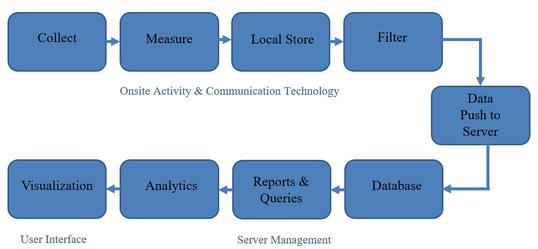
Stay tuned for our upcoming post, where we will explore the significance of third-party data loggers in solar power plants
To learn more about how solar energy can contribute to your sustainability goals,
For more information please Contect and visit our website: +91 9527818443 www.suryalogix.com
JUNE-JULY ISSUE 2023 | PG 37 | INDIA
FEATURED
SolaX Power Successfully Hosted Global Partner Summit 2023
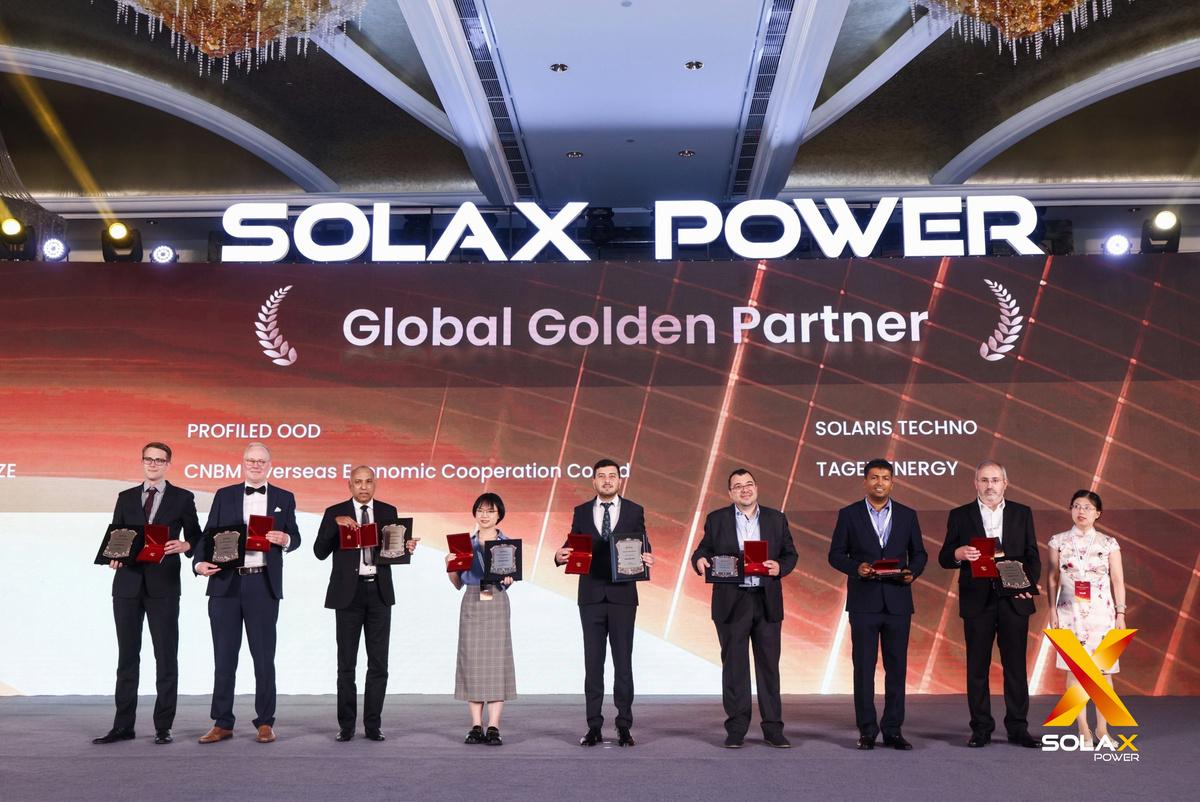
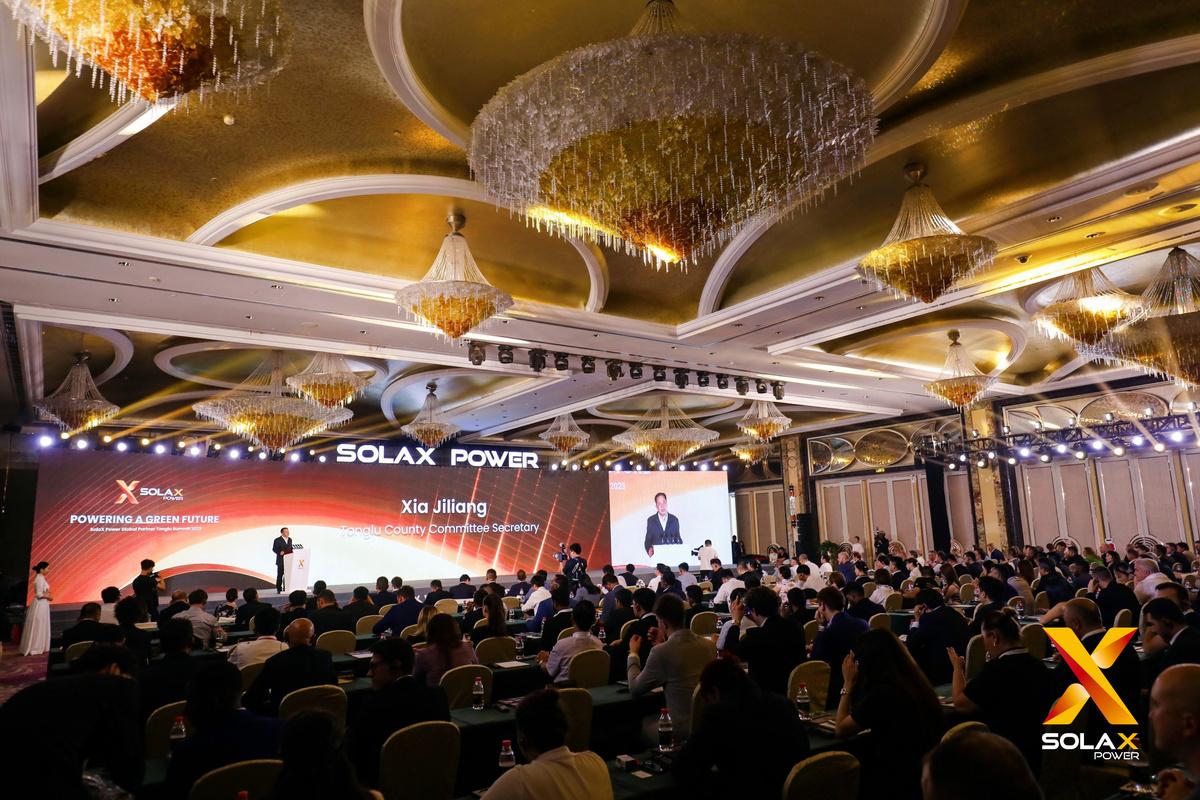
From May 27-28, SolaX Power, a renowned player in the photovoltaic industry, successfully hosted its highly anticipated Global Partner Summit 2023 in Tonglu, Hangzhou More than 150 distinguished guests from over 30 countries joined SolaX Power in sharing achievements and discussing the future of solar energy. Many important partners of SolaX in India were also invited to this grand event and received Global Golden Partner Award and Global Pioneer Partner Award
Established in 2012, SolaX has become a leading provider of solar inverters and energy storage solutions Over the years, SolaX has been committed to technological innovation and product quality, contributing significantly to renewable energy development worldwide. With a solid reputation, its products have been widely adopted in over 80 countries and regions globally.

SolaX Power Global Partner Summit 2023 featured high-level keynote speeches and seminars, sharing the latest industry trends and frontier technologies to inspire innovation and collaboration Moreover, it also encompassed various impressive activities Factory tours provided SolaX’s partners with an up-close understanding of SolaX’s production processes quality control systems and ongoing research and innovation. The brand-new exhibition hall showcases SolaX's complete product lineup and diverse application scenarios, featuring a VR zone that allowed guests to explore different possibilities
To express gratitude to its esteemed partners, SolaX prepared an elaborate gala dinner, providing a relaxed and enjoyable social platform
The Chinese-style performance specially prepared for international guests received high praise Furthermore, a full-day tour of Hangzhou allowed first-time visitors to China to appreciate its splendid natural scenery, leaving a lasting impression
This event proved to be a fruitful experience for all participants Global partners gained insight into the strength of SolaX's solar inverter technology and its value in partnerships, while SolaX obtained valuable knowledge of its partners' needs and expectations through direct interactions
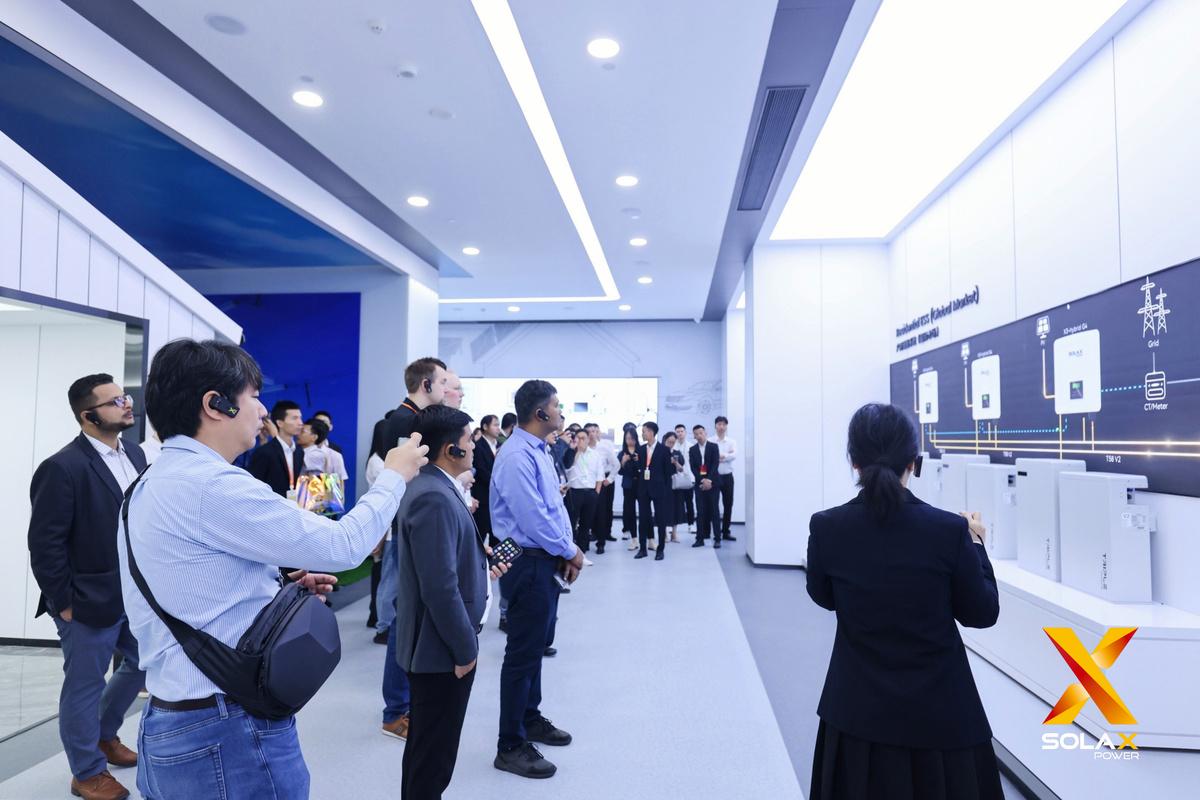
Looking ahead, SolaX Power will continue to focus on technological innovation and product optimization, with a dedication to providing customers with reliable, efficient, and intelligent solutions Furthermore, SolaX will strengthen its collaboration with its global partners and build an open and win-win partnership SolaX is poised to contribute to a brighter and cleaner future for the global energy landscape
For more information about SolaX's solar technologies, please contact: info@solaxpower.com
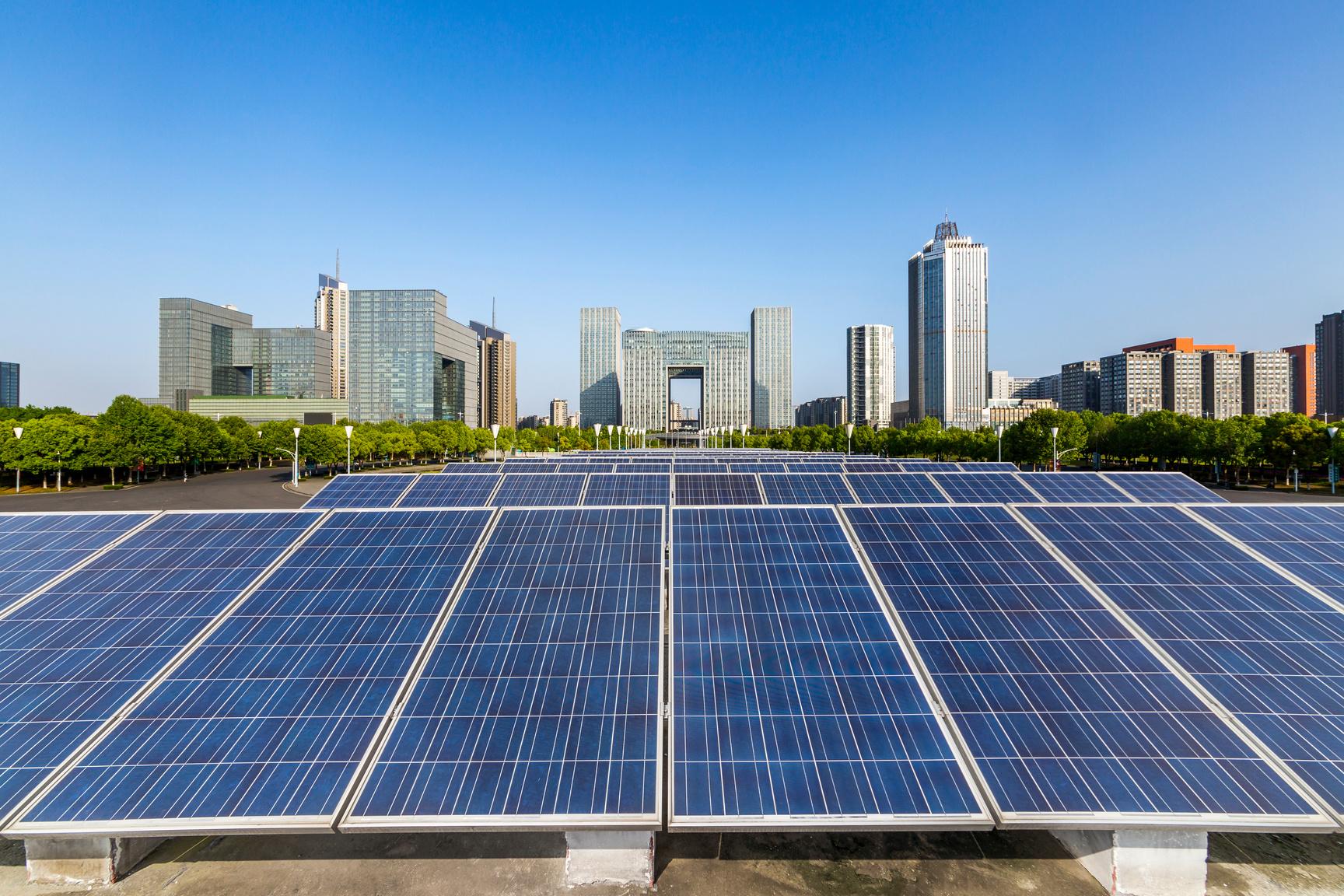


JUNE-JULY ISSUE 2023 | PG 38 | INDIA
COMPANY
FEATURE
Hoymiles: Microinverter Expert That Delivers
Open Energy to All
About Hoymiles
Founded in 2012, Hoymiles is a global MLPE (Module-Level Power Electronics) solution provider, specializing in module-level microinverters, storage systems and rapid shutdown systems With a vision of a clean, sustainable future, the company strives to drive innovation in the smart energy industry with its high-performance, accessible products
With a driven engineering team, 1,200+ global experts, and a distribution and service network spanning North America, South America, Europe, Asia, Africa, and Oceania, Hoymiles is empowering homeowners and professionals in more than 120 countries and regions to join the journey to true open energy
Microinverters in Spotlight

HMS-2000-4T

Offering three power options of 1600, 1800 and 2000 VA, this highpowered microinverter series is noted for its unmatched power output among 4-in-1 microinverters They have four input channels and can be connected to four PV modules, enabling faster installation and better cost-effectiveness
More importantly, the model is equipped with independent MPPT and monitoring, ensuring greater energy harvest and easier maintenance Adopting the new Sub-1G wireless solution, the microinverters can communicate with Hoymiles gateway DTU in a more stable way across longer distance.
All operational data and potential alarms can be checked and detected on the S-Miles Cloud platform which is available in web portal and phone app
Key specs
This is Hoymiles’ first-ever Wi-Fi integrated microinverter series. Available in 1600 VA, 1800 VA and 2000 VA, the series is seamlessly compatible with the main-stream 182/210 PV modules
For solar installations with just a handful PV modules, these microinverters can connect directly to an internet router to transmit key performance data without an external gateway product in the first place This makes smaller solar setups a more economical choice


The microinverters feature an industrial-grade Wi-Fi module, offering exceptional reliability and a stronger connection The module endures temperatures of up to 105°C, way higher than the highest internal temperature of microinverters when they are working Specifically, the microinverters come with a pre-attached antenna that boosts internet connection while eliminating the risk of water damage
All operational data and potential alarms can be checked and detected on the S-Miles Cloud platform which is available in web portal and phone app.
Key specs
Learn more about Hoymiles at www hoymiles com

1800 VA 360 to 600 W+ 4 × 15 A 65 V IP67 Wi-Fi Rated output power Commonly used module power Maximum input current Maximum input voltage Enclosure rating Communication 1600 VA 320 to 540 W+ 4 × 14 A 2000VA 400to670W+ 4×16A HMS1600DW-4T HMS1800DW-4T HMS2000DW-4T 1800 VA 360 to 600 W+ 4 × 15 A 65 V IP67 Sub-1G Rated output power Commonly used module power Maximum input current Maximum input voltage Enclosure rating Communication 1600 VA 320 to 540 W+ 4 × 14 A 2000VA 400to670W+ 4×16A HMS-1600-4T HMS-1800-4T HMS-2000-4T
JUNE-JULY ISSUE 2023 | PG 39 | INDIA PRODUCT FEATURE
HMS-2000DW-4T
The unfolding of India's National electricity plan
Fuelling the future through renewable energy
ANKUR THAKUR


The Indian economy, with a population of 1 42 billion, growing at 6% per annum and with a manufacturing PMI at a 31-month high in May 2023, requires a corresponding increase in power generation capacity to sustain its growth. Post-COVID, India has been experiencing recordbreaking energy demand, reaching an all-time high of 216 GW in April 2023 It is projected that the country's electricity demand will grow at a CAGR of 7 18% over the next five years Morgan Stanley predicts that India will surpass Japan and Germany to become the world's third-largest economy by 2027 Commensurate power generation is arterial for this optimistic growth

To address the growing national energy needs, the National Electricity Plan (NEP) - Vol 1, released in March 2023, outlines a robust strategy By 2032, the plan aims to achieve an installed renewable energy capacity of 596 GW, accounting for 55% of the total installed capacity. This is a substantial increase from the current level of 150 GW Solar and wind energy are identified as the key renewable sources, with solar projected to contribute 364 GW and wind 121 GW Other renewables like hydro, biomass, and small hydro will make up the remaining 111 GW However, achieving the targeted solar capacity of 364 GW comes with the caveat of establishing indigenous upstream sources for polysilicon ingots and wafers Shifting the sourcing base from China to India for these commodities requires significant financial torque and a stable policy regime While the recent PLI scheme for High Efficiency Solar PV Modules, has boosted confidence in the solar manufacturing segment, the integrated capacity from polysilicon to modules, driven by the
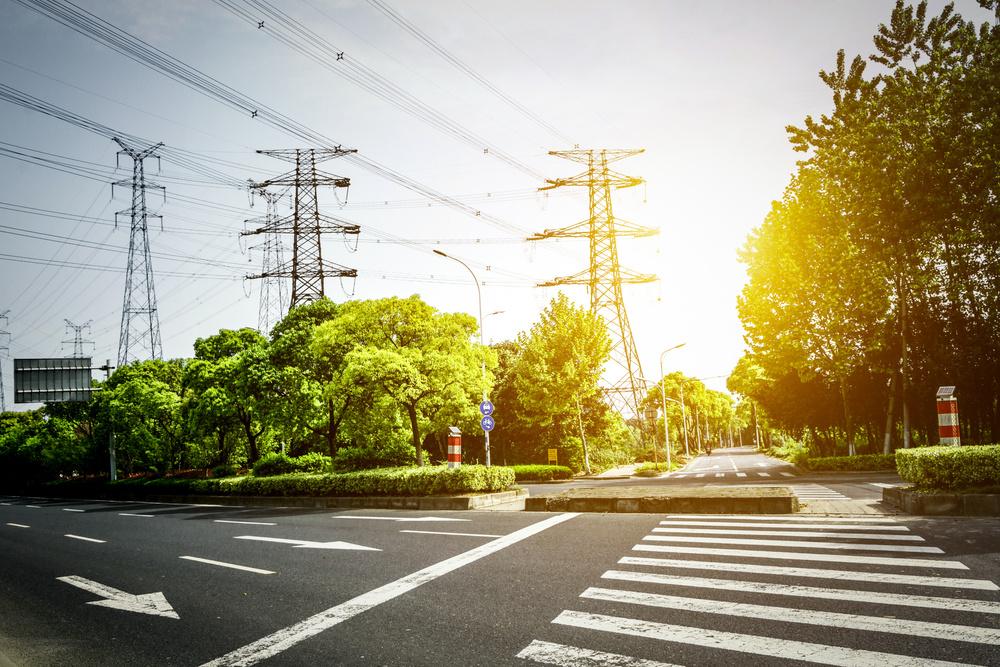
scheme, is expected to be around a meagre 28 GW, which is only a portion of the annual RE projections Moreover, this capacity will enter the commercial market between 2025-2027 only. Further, the historical capacity utilization of solar manufacturing in India has been low, at around 50% or even less in some years The primal focus of original equipment manufacturers (OEMs) on securing bottom lines and thus on exporting rather than competing in the Indian market adds more uncertainty to the translation of the projected 364 GW into actual solar parks

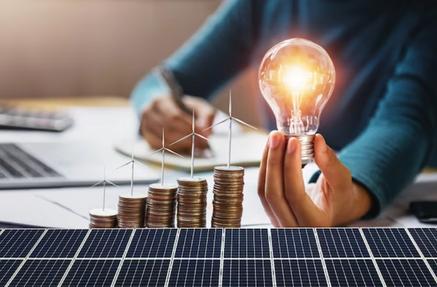
Another significant challenge is integrating such large-scale renewable energy capacity into India's transmission system The NEP acknowledges the need for new transmission lines, inter-regional AC and HVDC networks, and advanced technologies to manage the temporal variability (including the issue of reactive power compensation) of renewable energy sources. However, unlike the solar manufacturing industry, India's transmission manufacturing industry and policy framework have shown promise and robustness CEA's recent standardization of specifications for Transformers & Reactors (above 66 kV level), growth of ISTS and the progressive stance of the National Committee on Transmission are evidence of this continued resolve.
In summary, the ambitious NEP Vol-1 holds the promise of tremendous growth in the power sector but is not without its challenges However, these challenges are embedded with growth opportunities for all stakeholders. Overall, the power sector is poised for a boom, which will drive the growth of downstream businesses as well
OPINION
DY MANAGER (MEDIUM VOLTAGE SWITCHGEAR | SOLAR PV EPC PROJECTS (ROOFTOP, DISTRIBUTED & SMALL CAPTIVE) BHARAT HEAVY ELECTRICALS LTD
JUNE-JULY ISSUE 2023 | PG 40 | INDIA
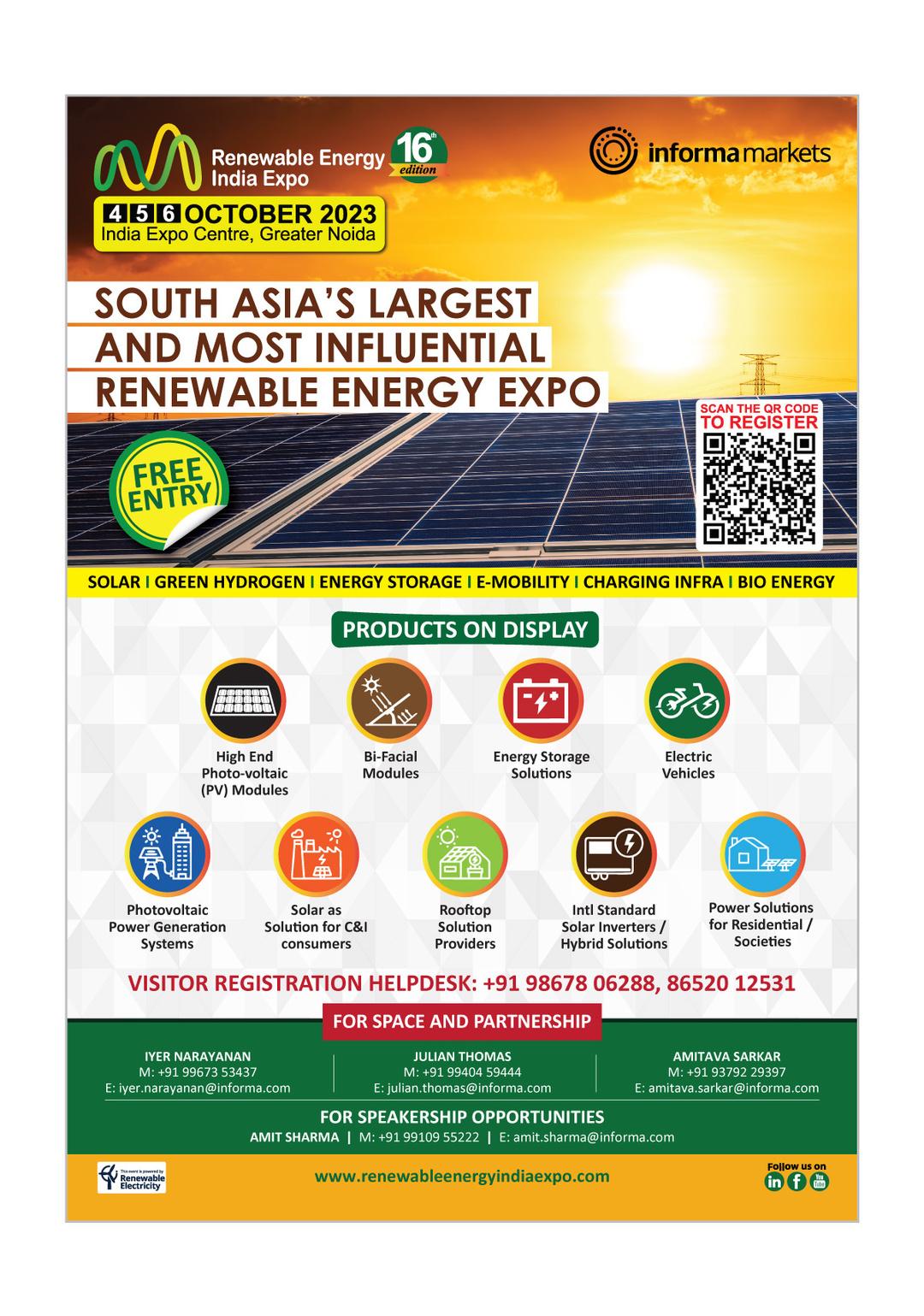

JUNE-JULY ISSUE 2023 | PG 41 | INDIA
Solar Soaring: Overcoming Hurdles and Harnessing Opportunities
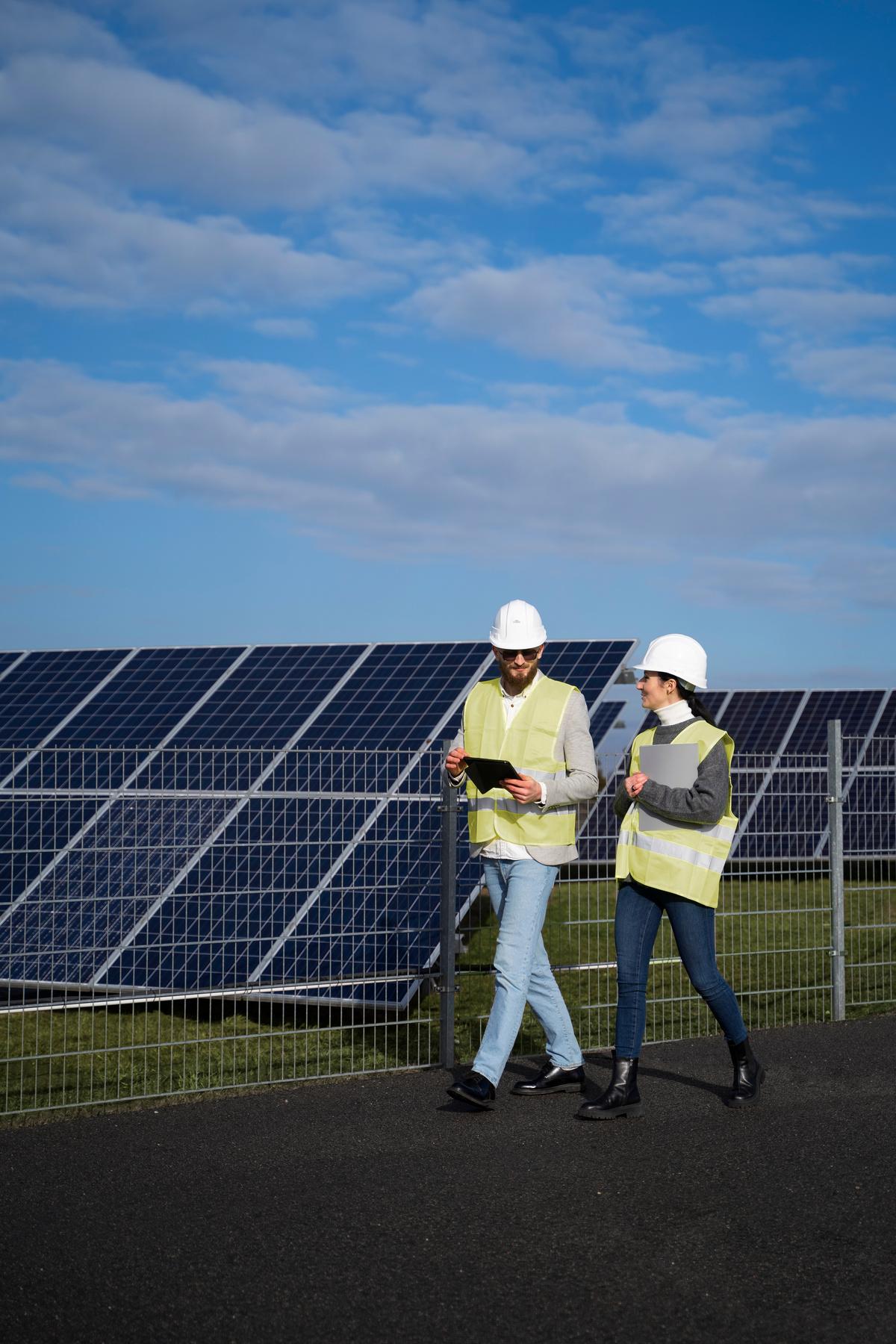


- A Comprehensive Exploration of India's Evolving Rooftop Solar Policies and Strategies

Another aspect is the RenewablePurchase Obligations (RPOs) which play a crucial role in accelerating renewable energy deployment and transition to a low-carbon economy The Government may periodically review and enhance RPO targets to increase the share of renewable energy aligned with the energy goals of the nation Utility-scale projects seem to be the area offocus, although India boasts of tremendous potential for distributed energy generation Introducing a percentage of RPO with distributed

OPINION
T y e s s I r i n c a T b e o s l p e i a a s
Special Story
INDIA'S NATIONAL ELECTRICITY PLAN: POWERING THE NATION'S FUTURE
India's National Electricity Plan (NEP) for 2026–2027 and 2031–2032 lays out lofty goals to transform the nation's power industry and pave the path for a sustainable future. The NEP seeks to reach a total installed capacity of 366 4 GW in the years 2026–2027, with a strong emphasis on renewable energy sources This capacity increase will lessen reliance on fossil fuels while assisting in meeting the rising power demand
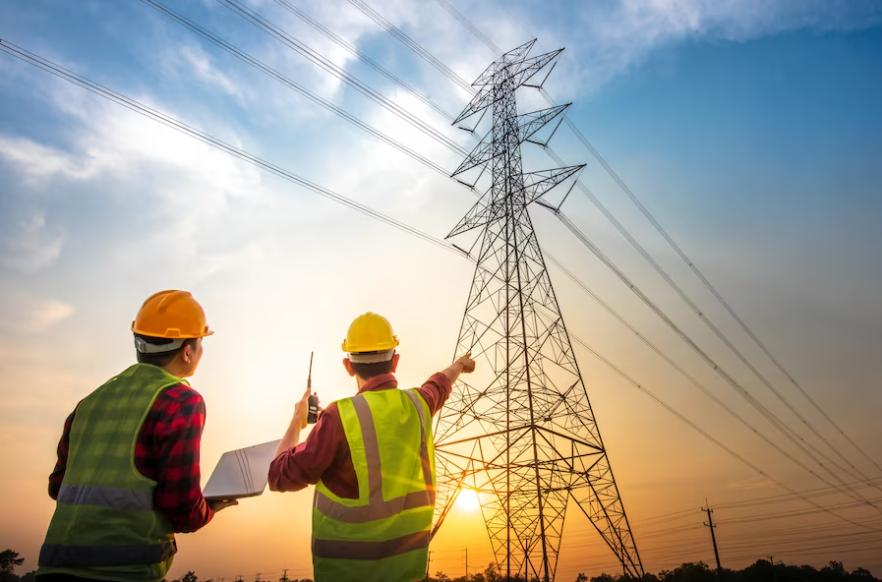
The plan places a strong emphasis on the necessity of varying the energy mix and raising the proportion of renewable energy 40% of the nation's electricity must come from non-fossil fuel sources by 2020, including nuclear, solar, wind, and hydroelectricity This pledge is in line with India's commitments under international law to lessen greenhouse gas emissions and combat climate change.
The NEP places a strong emphasis on the creation of massive solar and wind parks to meet these goals These parks will take advantage of the country's plentiful wind and solar resources, spurring the expansion of renewable energy installations The strategy encourages people to install rooftop solar power systems and take an active role in the transition to renewable energy
The NEP acknowledges the importance of grid infrastructure development in addition to the rise of renewable energy To efficiently transmit power from resource-rich regions to consumption hubs, it emphasizes the need for a strong transmission and distribution network Optimal use of renewable energy sources will be ensured by strengthening the grid infrastructure, which will also improve system stability and reliability
The NEP sets an even more challenging goal for the nation's power industry for the years 2031-23 The plan calls for a total installed capacity of 789 4 GW and emphasizes raising the proportion of
renewable energy sources in the energy mix to 60% This significant increase in renewable energy capacity will be vital in lowering carbon emissions and promoting the development of a sustainable energy future


The NEP emphasizes the significance of continuing investments in solar and wind power to meet this goal It also highlights the necessity of research and development to expand these industries' technological capabilities and increase their efficiency and cost-effectiveness To maintain grid stability and make it possible to incorporate intermittent renewable energy sources, the plan acknowledges the crucial role that energy storage technologies play.
The NEP also highlights the need for demand-side control and energy efficiency To reduce electricity usage, it promotes the use of energy-efficient industrial processes, building codes, and equipment The strategy also encourages the deployment of smart meters and demand response programs to encourage consumers to use less electricity during peak hours and lessen the load on the system overall
In conclusion, India's National Electricity Plan for the years 2026–2027 and 2031–2032 demonstrates the country's dedication to a future powered by renewable and sustainable energy sources. The plan opens the path for a cleaner and more dependable electricity industry with ambitious targets for renewable energy capacity and an emphasis on grid infrastructure development India wants to lower carbon emissions, assure energy security, and promote economic growth in the future by utilizing the nation's enormous potential for renewable energy and placing a high priority on energy efficiency

JUNE-JULY ISSUE 2023 | PG 43 | INDIA SOLARQUARTER RESEARCH
Tech Story
INDIA'S SOLAR POLICY
BRIEF: TRANSFORMING THE ENERGY LANDSCAPE WITH CLEAN POWER
India's solar policy environment has undergone notable changes in recent years, propelling the nation to the forefront of the world's shift to renewable energy India has put in place a comprehensive and progressive policy framework to promote the rapid spread of solar energy thanks to its plentiful solar resources and rising commitment to clean energy This article provides a succinct policy overview of India's solar sector, outlining major programs, successes, and obstacles as well as the revolutionary changes solar energy has made to the country's energy system
A ground-breaking move towards the spread of solar power was taken in 2010 with the launch of the National Solar Mission by the Indian government. The mission with its ambitious target of 100 GW of solar power capacity by 2022, has sparked a national movement to harness solar energy and lessen the country's reliance on fossil fuels Now, the government has set a new target for generating 500 GW of renewable energy by 2030, with solar power expected to contribute the majority of that total with an overachieving target of 280 GW. It also includes several programs intended to encourage solar installations, advance research and development, and create an environment that will support the expansion of the solar industry
The provision of incentives and subsidies is one of the main forces behind the rise of solar power in India. The government has increased the financial appeal of solar energy for consumers and enterprises by providing capital subsidies, viability gap funding, and concessional loans Solar installations were previously very expensive up front, but thanks to these incentives, they are now much more affordable and practical
Incentives and Subsidies
To encourage the installation of solar electricity, the government offered financial incentives such as capital subsidies, viability gap funding, and subsidized loans These actions assisted in lowering the initial prices of solar installations, hence increasing their accessibility to consumers and companies The availability of incentives and subsidies helped to foster a positive business environment and promoted the widespread use of solar energy
Competitive Bidding

The sector underwent a transformation when competitive bidding for solar project allocations was implemented The project developers were pushed to offer the lowest tariffs by this open and competitive procedure, which led to a sharp drop in the cost of solar energy A more strong and more dynamic solar business resulted from competitive bidding, which also encouraged healthy market rivalry and expanded private sector participation Today, however, it is more competitive than it was in the past, with bidders being requested to match the L1 tariff
Grid Integration and Infrastructure Development
Th I di oncentrated on building a strong transmission after realizing the need for a sturdy grid he integration of solar electricity. This required

making investments in new substation construction, grid infrastructure upgrades, and smart grid technology implementation As a result of these efforts, the grid is now more reliable and efficient, making it easier to integrate solar power into the electrical grid According to this, pumped hydroelectric facilities and renewable energy generating stations (REGS) starting up by June 30, 2025, are exempt from paying interstate transmission system (ISTS) fees
Research and Development
The government has given research and development (R&D) efforts top priority to promote solar energy technology Energy storage technologies, grid management systems, and solar panel efficiency have all benefited from corporate, academic, and research collaborations R&D projects have been essential in lowering costs, strengthening performance, and boosting solar power's overall competitiveness in India
Challenges and the Way Forward
Although India's solar policy environment has mainly been effective, there are still several difficulties Some of the major concerns that need to be resolved include the intermittent nature of solar electricity problems with land acquisition, and the lack of readily accessible, reasonable financing The long-term sustainability of the solar business also depends on improving grid stability, fortifying the energy storage infrastructure, and developing a trained workforce
The government should continue to emphasize stable policy, encourage innovation and R&D, reduce administrative procedures, and solicit investments from the private sector to overcome these obstacles and advance the Indian solar industry A seamless transition to a clean and sustainable energy future will be made possible through ongoing investments in grid infrastructure, energy storage technology, and skill development initiatives
Challenges and the Way Forward
The solar policy framework in India has been instrumental in promoting the broad use of solar energy. There has been a substantial increase in solar installations around the nation as a result of the National Solar Mission and different incentives and subsidies Solar tariffs have significantly decreased as a result of the competitive bidding process, making solar power more and more cost-competitive It is crucial to solve the remaining issues and build on the achievements of the current regulatory framework as India moves closer to attaining its goals for renewable energy. India will be able to modernize its energy system and support international efforts to address climate change by taking advantage of the solar energy it has to offer
SOLARQUARTER
RESEARCH
JUNE-JULY ISSUE 2023 | PG 44 | INDIA
Business Insights
ROLE OF INTERNATIONAL COLLABORATION IN INDIA'S SOLAR INDUSTRY POLICY
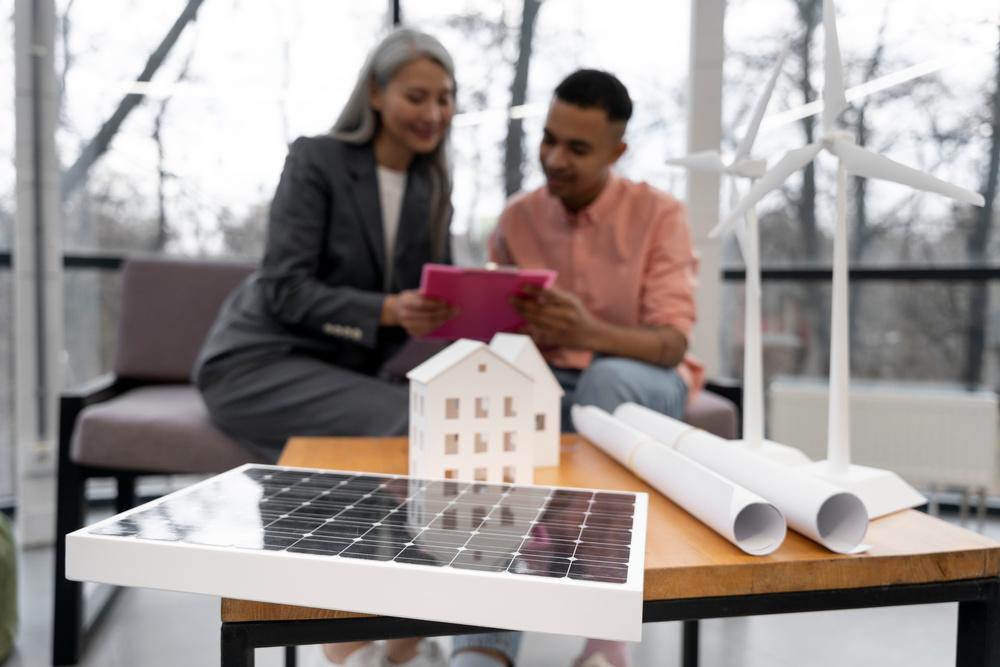
India's solar sector has become a global leader thanks to supportive regulations and a dedication to renewable energy India's solar industry policy has been significantly shaped by international cooperation, allowing India to take advantage of cutting-edge technologies, draw in investment, and hasten the transition to renewable energy sources. India has also acknowledged the critical need for environmentally friendly energy options The nation has achieved outstanding progress in recent years in capturing solar energy and developing renewable energy India's unwavering dedication to international cooperation and alliances has been essential to its success in the solar business
International cooperation is essential to the development of India's solar industry strategy because it makes it possible to share expertise, progress technology, and mobilize resources India has been successful in accelerating the expansion of its solar business and exceeding ambitious goals by utilizing global experience and fostering cooperative efforts.
Knowledge Exchange and Technology Transfer

The solar sector has benefited from international cooperation in terms of knowledge transfer and technology transfer. India has access to cuttingedge technologies, industry knowledge, and best practices thanks to agreements with top solar innovation nations These partnerships have accelerated India's adoption of cutting-edge solar technologies and production methods By adopting cutting-edge technology for better solar energy generation, storage, and grid integration, the nation has been able to skip over several developmental stages.
Foreign Direct Investment (FDI) and Capital Infusion:

For India's solar industry to attract foreign direct investment (FDI), international cooperation has been essential India's potential for renewable energy has attracted significant investment from international businesses and financial institutions In addition to accelerating the growth of the solar industry, this infusion of foreign investments has also boosted economic growth and provided job possibilities The partnerships have aided in the establishment of a sound financial ecosystem that provides the country with access to capital, project financing, and cutting-edge financial models to enable the growth of large-scale solar projects
Policy Alignment and Exchange of Best Practices
The alignment of policies and the sharing of best practices among nations has been made possible through international cooperation India has aggressively collaborated with international groups like the International
Solar Alliance (ISA) to develop favorable policy frameworks for the solar industry Collaboration has allowed for the sharing of regulatory insights, effective techniques for boosting the uptake of solar energy, and policy frameworks. Through these interactions, India has been able to improve its regulations for the solar business, harmonize them with international best practices, and create solid frameworks for effective project development, grid integration, and renewable energy auctions
Capacity Building and Skill Development
International partnerships have been essential in helping India's solar industry grow its capabilities and workforce Technical expertise, training initiatives, and educational institutions have been transferred to partnerships with international businesses, research centres, and educational institutions The specialists, engineers, and technicians in India now have the know-how to create set up and maintain solar power systems as a result of this collaboration International partnerships have aided in the expansion of the solar business and encouraged the creation of jobs in the renewable energy sector by fostering a competent workforce
International cooperation has been crucial in determining the direction of India's solar industry policy, advancing technology, luring capital, and fostering capacity creation India's rise to prominence as a world leader in the solar industry has been made possible by the sharing of information, technology, and best practices For India to accomplish its goals for renewable energy, spur innovation, and pave the road for a sustainable future driven by solar energy continuing international cooperation is essential going forward
JUNE-JULY ISSUE 2023 | PG 45 | INDIA SOLARQUARTER RESEARCH
Current Story

WAIVER OF INTER-STATE TRANSMISSION CHARGES: BOOSTING SOLAR AND WIND ENERGY TRANSMISSION
The Ministry of Power in India recently issued an important notification regarding the waiver of inter-state transmission charges for the electricity generated from solar power This move signifies the government's commitment to promoting renewable energy and accelerating the country's transition towards a greener and more sustainable future In this column, we will delve into the main aspects of the notification and its potential impact on the solar power sector in India
The notification issued by the Ministry of Power highlights the waiver of inter-state transmission charges for solar power generated from projects commissioned on or after 30th June 2025 This decision aims to incentivize the development and transmission of solar energy across state boundaries, effectively removing a significant financial barrier for solar power generators
The waiver of inter-state transmission charges is a significant step towards facilitating the seamless flow of solar power from resource-rich states to areas with higher electricity demand This move will encourage
solar power generators to explore opportunities beyond their immediate regions, fostering a more balanced distribution of renewable energy resources across the country
By eliminating inter-state transmission charges, the notification aims to enhance the viability of solar power projects, making them more economically attractive for developers and investors This measure is expected to boost private sector participation and attract greater investment in the solar energy sector, ultimately contributing to the overall growth of renewable energy capacity in India.
Moreover, the waiver of transmission charges will reduce the financial burden on solar power generators, enabling them to offer electricity at more competitive rates This development is expected to have a positive impact on end consumers, as it has the potential to lower electricity tariffs and improve energy affordability

The notification also emphasizes the importance of timely completion of solar power projects to avail the benefits of the waiver It encourages developers to adhere to project timelines and ensures that the waiver remains applicable only for projects that meet the stipulated commissioning deadlines
Additionally, the Ministry of Power's decision to waive inter-state transmission charges for solar power aligns with the government's ambitious renewable energy targets India aims to achieve 500 GW of renewable energy capacity by 2030, with a significant focus on solar power with 280 GW This move is in line with the country's commitment to reducing carbon emissions, combating climate change, and achieving energy security
The waiver of inter-state transmission charges for solar power, as announced by the Ministry of Power, is a commendable step towards accelerating India's renewable energy transition By removing financial barriers and promoting the seamless flow of solar power across state boundaries, this measure incentivizes the development and transmission of renewable energy resources
The waiver is expected to attract greater private sector participation, boost investment in the solar energy sector, and ultimately contribute to the achievement of India's ambitious renewable energy targets Furthermore, by making solar power more economically viable and reducing electricity tariffs, the measure is likely to benefit end consumers and improve energy affordability
As the country continues its pursuit of a greener and sustainable energy future, initiatives like the waiver of inter-state transmission charges for solar power play a crucial role in promoting renewable energy deployment, mitigating climate change, and ensuring a cleaner and more resilient power sector in India
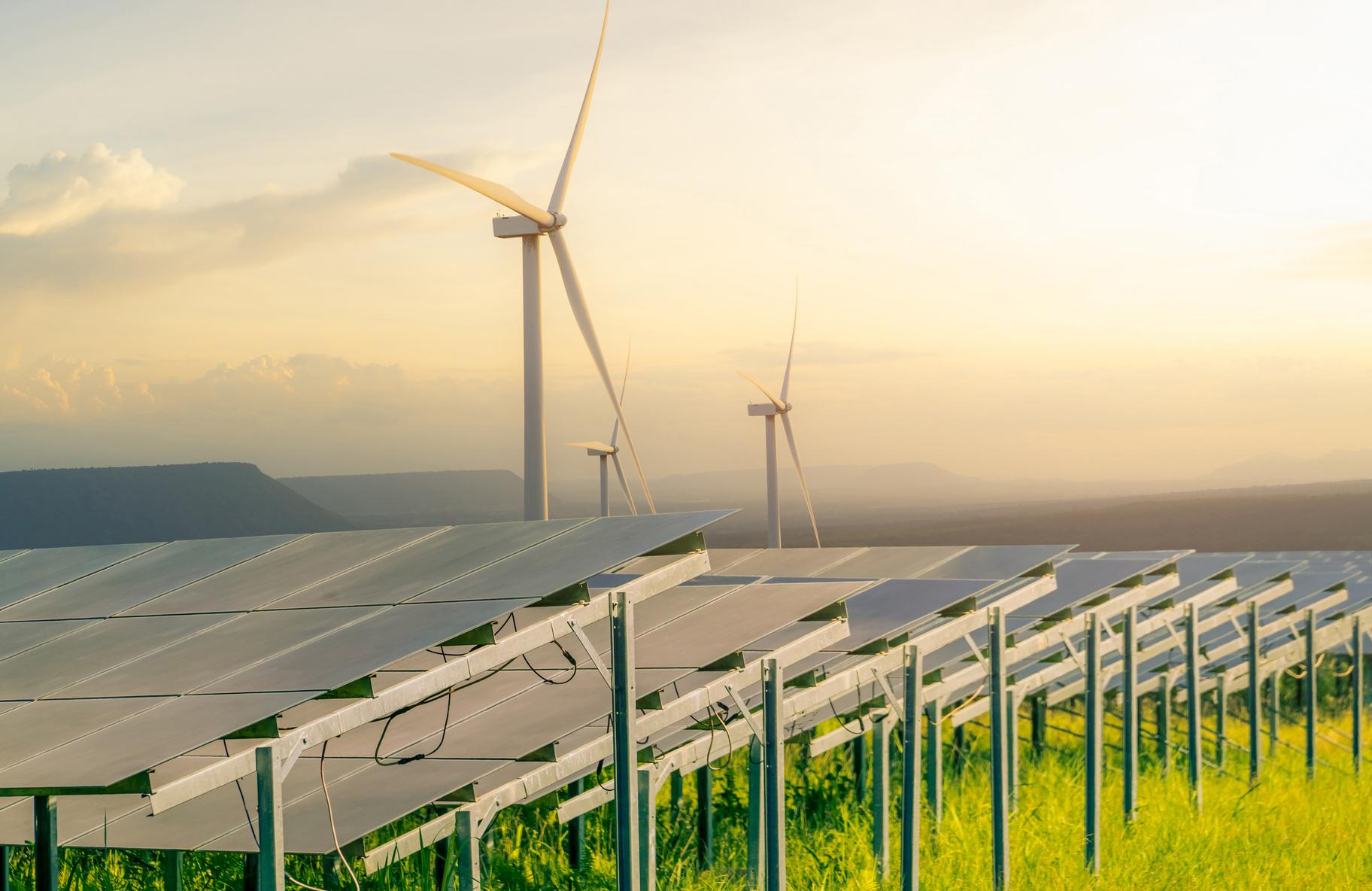
JUNE-JULY ISSUE 2023 | PG 46 | INDIA SOLARQUARTER RESEARCH
Market Research
UPSCALING NET METERING POLICY FOR ROOFTOP SOLAR SYSTEMS UP TO 500 KW CAPACITY: ADVANCING SOLAR PV ROOFTOP INSTALLATIONS IN INDIA

India has been advancing impressively in the adoption of renewable energy, particularly in the solar industry Rooftop solar installations have seen tremendous growth, helping the nation meet its ambitious goals for renewable energy However, it is essential to upgrade the net metering policy for installations with capacities up to 500 kW to further drive the expansion of solar PV rooftop systems
India's rooftop solar industry currently has a cumulative installed capacity of over 9 5 GW, which is an impressive accomplishment in and of itself The majority of these installations, however, are modestly sized ones with capacities under 100 kW Although the initial expansion of rooftop solar was greatly aided by these smaller systems, there is still a great deal of room for larger installations India can realize this potential and quicken the switch to renewable energy by expanding the net metering legislation to include systems with a maximum capacity of 500 kW As can be seen in the graphic below, there has been a significant increase in rooftop solar PV installations since the net metering regulation was introduced in June 2021.
QUARTERLY ROOFTOP SOLAR PV INSTALLATIONS (MW)
A further incentive for commercial and industrial institutions to participate in solar PV would be the expansion of net metering for rooftop solar systems up to 500 kW in capacity These larger systems have the capacity to supply a sizeable amount of the electrical needs of industrial facilities, manufacturing plants, and commercial buildings India can lessen its reliance on conventional fossil fuel-based power generation and help to create a greener and more sustainable energy mix by providing incentives for these sectors to adopt solar energy
The expansion of the net metering legislation would also encourage the development of the solar industry, resulting in new job opportunities and stimulating regional economies A strong solar ecosystem would be supported by an increase in manufacturing, installation, and maintenance activities due to the increased demand for solar PV systems As a result, jobs would become available throughout the value chain, from the production of solar panels to trained installation and maintenance specialists
Upscaling net metering for rooftop solar systems up to 500 kW capacity does have certain drawbacks despite the many advantages To ensure the seamless integration of larger solar arrays into the current power infrastructure, grid integration, and stability challenges must be resolved Concerns about grid overload and congestion may also exist in some locations Proper planning and cooperation between stakeholders, including distribution utilities, politicians, and solar developers, are crucial to overcoming these obstacles
SOURCE:MNRE,CEA
SOLARQUARTERRESEARCH

The potential for large cost savings and greater return on investment for building owners is one of the main advantages of scaling up the net metering policy By exporting extra solar energy to the grid, net metering enables owners of solar systems to significantly reduce their electricity costs The capability of energy generation rises with larger installations, to offset a higher amount of their use This results in significant cost savings and a shorter reases the financial appeal of rooftop solar
In conclusion, expanding India's net metering policy to cover rooftop solar systems with a 500-kW capacity holds enormous promise for the country's progress with solar PV rooftop installations Significant advantages include cost reductions, increased return on investment, and a decreased dependency on fossil fuels Additionally, the expansion of the solar business and the resulting employment possibilities would advance the economy of the nation To facilitate a smooth transition to larger rooftop solar installations, grid integration, and stability issues must be carefully taken into account India may go towards a cleaner and more sustainable energy future by accepting this policy expansion
Q'12019 Q'22019 Q'32019 Q42019 Q12020 Q'22020 Q'32020 Q42020 Q'12021 Q12022 Q12023 Q'22023 Q22021 Q'22022 Q32021 Q32022 Q'42021 Q42022 SOLARQUARTER
RESEARCH
1,000 750 500 250 0 JUNE-JULY ISSUE 2023 | PG 47 | INDIA
MARKET STATISTICS
TOTAL SOLAR PV INSTALLATIONS AS OF MAY, 2023
In the above pie chart, Renewable capacity additions continue to increase at a rapid pace in India, accounting for approximately 30 4% of total India’s power capacity at the end of May 2023 India’s total installed power capacity stood at over 417 GW at the end of the fifth month of the calendar year 2023 from all the sources, with renewables accounting for 126 76 GW making up 30 4%, compared to cumulative renewable energy installations of 113 22 GW at the end of May 2022, which represented a growth of around 12% year-over-year Solar power accounted for approximately 67 82 GW of installations, which represents 16 2 % of the total installed power capacity The share of Solar power in the installation mix grew year over year to 19 09 % in May 2023 compared to the same period in 2022 Among the renewable, Wind and Solar constitute around 87 6% of the total renewable, Wind Power installed capacity at the end of May in the Calendar Year 2023 was around 43 198 GW, which represents 10 3% of the total power capacity installed
SOLARQUARTER RESEARCH


India installed around 4 5 GW of Solar PV projects in the calendar year 2023 from January 2023 to May 2023 The country's total Solar PV installation crossed 67 82 GW by the end of May 2023 Rajasthan installed over 17 17 GW, there is a growth of 22 14% year over year with the installation of over 14 GW by the end of May 2022 Among the Top Solar States Maharashtra stepped one position ahead compared to their position in the same period in 2022, while Telangana, Andhra Pradesh, and Madhya Pradesh went down while Rajasthan, Gujarat, Karnataka, and Tamil Nadu maintain their previous position in the same period There was a growth of over 7 14% year over year compared to the total Solar PV installation of 63 3 GW by the end of December 2022
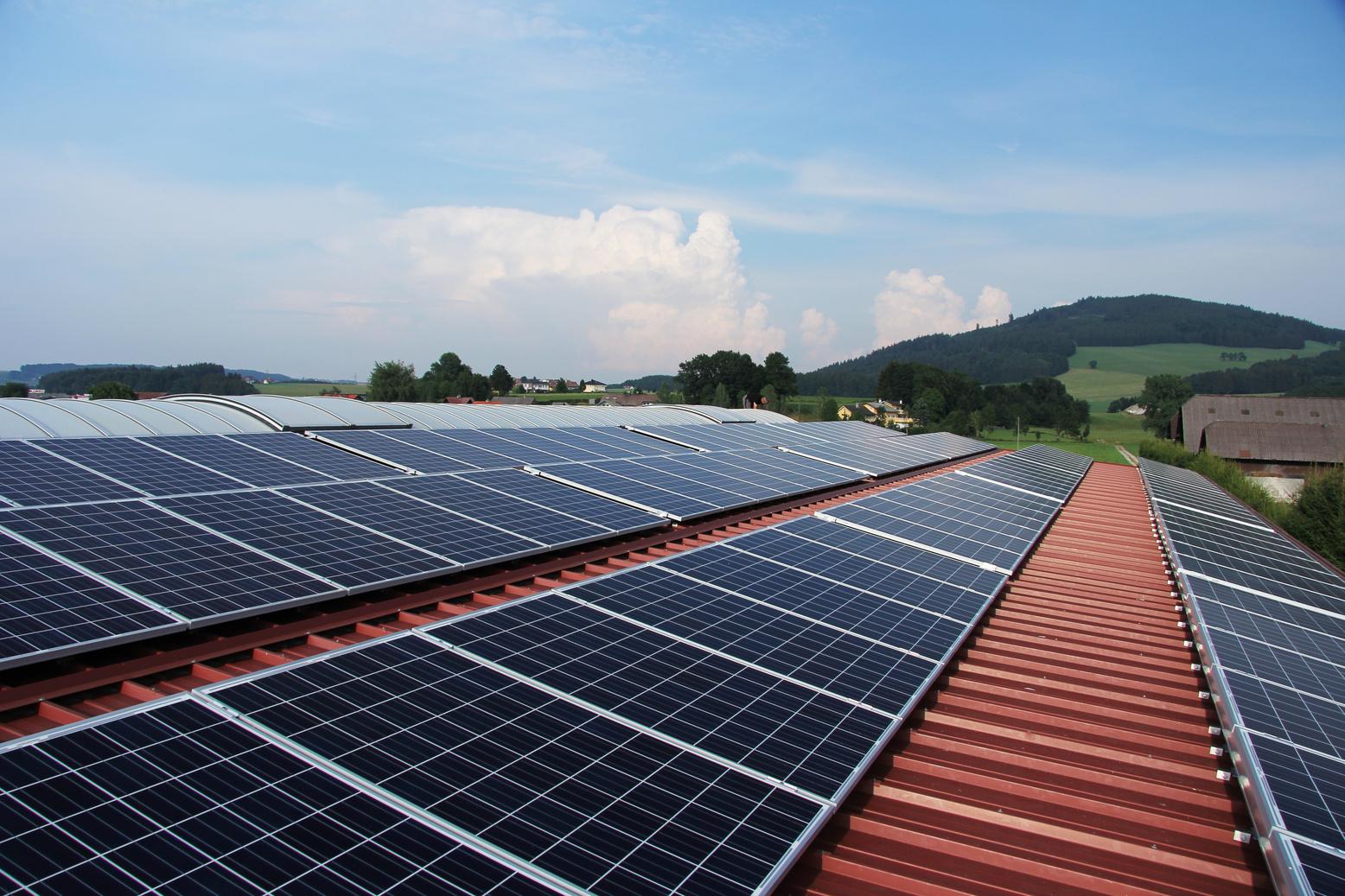
saG %95 etingiL %61 Rajasthan Gujarat Karnataka TamilNadu Maharashtra
UttarPradesh
20,000 15,000 10,000 5,000 0 SmallHydroPower 39%
TelanganaAndhraPradeshMadhyaPradesh
Punjab
SOURCE: MNRE
INDIA POWER MIX
INDIA RENEWABLE MIX
SOURCE: CEA, MAY 2023
SOLARQUARTER RESEARCH Lignite, 2% Gas, 6% Coal, 49% Diesel, 0 14% Nuclear 2% Hydro, 11% Renewable 30% JUNE-JULY ISSUE 2023 | PG 48 | INDIA
SOLARQUARTER RESEARCH
MONTHLY RE GENERATION IN INDIA

IEX ELELCTRICITY MONTHLY TRADED VOLUME 2022-23
Total renewable energy generations in April 2023 reach 16,675 14 million units there is a growth of RE generations by around 10 38% over April 2022, where the RE generations were 15,106 82 million units Solar Power generation has been increasing by around 24% year-over-year from April 2023 (10,318 69million units) to April 2022 (8,323 92 million units), Wind Power generation has increased by almost 3% in the same period and reached 4,249 2 million units in April 2023.
TotalRE Generation Solar April'22(MU) May'22(MU) June'22(MU) July'22(MU) Aug'22(MU) Sep'2022 (MU) Oct'2022(MU) Nov'2022(MU) Dec'2022(MU) Jan'23(MU) Feb'23(MU) Mar'23(MU) Apr'23(MU) 30,000 20,000 10,000 0 IEXElectricity Market Jul-22 Aug-22 Sep-22 Oct-22 Nov-22 Dec-22 Jan23 Feb-23 Mar-23 Apr-23 May23 Jun-23 10,000 7,500 5,000 2,500 0 April'22(MU)May'22(MU)June'22(MU)July'22(MU)Aug'22(MU)Sep'2022(MU)Oct'2022(MU)Nov'2022(MU)Dec'2022(MU) Jan'23(MU)Feb'23(MU)Mar'23(MU)Apr'23(MU) 60,000 40,000 20,000 0 RENEWABLE ENERGY VS SOLAR GENERATION 8,324 8,828 8,260 6,966 7,428 8,208 8,727 7,977 8,208 9,290 9,555 10,244 10,319 7,596 8,267 7,151 7,805 8,160 7,972 7,764 8,452 8,200 9,212 7,928 8,251 8,946 15,107 20 883 19,497 19,141 18,255 16,943 14,239 13 393 15,595 17,735 15,599 17,165 16,675 M I L L I O N U N I T ( M U ) M I L L I O N U N I T ( M U ) M I L L I O N U N I T ( M U )
SOURCE: CEA
SOURCE: CEA
SOLARQUARTER RESEARCH SOLARQUARTER RESEARCH JUNE-JULY ISSUE 2023 | PG 49 | INDIA
SOLARQUARTER RESEARCH SOLARQUARTER RESEARCH
In the calendar year 2023, 51,176 million units (MU) of total volume from January to June were traded in IEX (Indian Energy Exchange) which shows a yearover-year growth of 1 43 percent compared to the January to June traded volume of 50,454 million units in the calendar year 2022 The monthly traded volume shows the highest in April in the first six months of calendar 2023
Indian Energy Exchange (IEX), the leading energy exchange in India, reported a remarkable performance in June 2023, achieving an overall trading volume of 8,946 million units (MU) This figure includes 272 MU traded in the green market, 5 33 lac Renewable Energy Certificates (RECs) equivalent to 533 MU, and 2 44 lac Energy Saving Certificates (ESCerts) equivalent to 244 MU Compared to the same period last year, the overall volume witnessed an 8% growth During the first quarter of the financial year 2024 (Q1 FY ’24), IEX recorded a trading volume of 25,125 MU across all segments, marking an 8% increase over Q1 FY ’23
Throughout June 2023, the average price on IEX was ₹5 37 per unit, experiencing a 17% year-on-year decline
Additionally, the average market clearing price during the Q1 FY ’24 period was ₹5 17 per unit, indicating a significant decrease of 33% compared to the corresponding quarter last year
Solar Energy Corporation of India (SECI) paid ₹35 48 billion ( $432 31 billion) to Solar and Wind developers for power purchased in the calendar of 2023 till May The disbursed amount was highest in March in the calendar year 2023 There were many ups and down in the payment to generators since 2022 as shown in the above chart In the financial year 2022-23, the highest and lowest payments were made in July and December (lower due to lower wind speeds, and winter months across India) While SECI paid ₹18.28 billion for the purchase of Solar & Wind in the first two months of the first quarter of the financial year 202324 The payment made to the power generators such as wind and solar were quite high in the second half compared to the first half of the financial year 2022-23

5 4 3 2 1 0 BIDDING DETAILS MSEDCL 500MW Phase-Vll Solar Auction Result August2022 GUVNL 750MW PhaseXVI SolarAuction Result September 2022 MSEDCL 500MWSolar, P-IX(Intra State):Auction Result December 2022 REMC1GW Wind-Solar Hybrid Tender: Auction ResultApril 2023 GUVNL500 MWPhase XIXISTS SOlar Auction ResultsApril 2023 MSEDCL 500MW Phase-Vlll SolarAuction Results September 2022 TPDDC 255MWWindSolarHybrid: Auction Result December 2022 RECPDCL 500MW ISTSSolar Tender: Auction ResultApril 2023 RUMSL300MW FloatingSolar (Omkareshwar WaterPark) Phasell November2022 GUVNL 500MWSolar, Tranche (XVlll): Auction Result January2023 SECI1200 MWISTS Wind-Solar Hybrid (Tranche-VI) AuctionResult April2023 GUVNL 600MW PhaseXVll Solar Auction Results May2023 RUVNL1 GWSolarin Rajasthan Solar Auction Results May2023 MSEDCL s 500MW (Phase-X) Solar Auction ResultApril 2023 CESC150 MWWindSolar Hybrid Auction Results June2023 2.9 282 249 29 251 464 287 307 369 3 269 399 271 273 261
D
on Solar PV modules and Cells, the tariff rate of Solar auctions has seen many ups and down Other factors for the increase in rate fluctuation along with the ongoing war between Russia and Ukraine But the relief for the developers is that the government oning due date due to ongoing disruption in the solar supply chain
SECI MONTHLY PAYMENT TO SOLAR/WIND POWER GENERATORS IN 2022
M I L L I O N U N I T ( M U ) L O W E S T T A R I F F ( I N R / K W H )
SOLARQUARTER RESEARCH TotalRE Generation April'22(MU) May'22(MU)June'22(MU) July'22(MU) Aug'22(MU)Sep'2022(MU)Oct'2022(MU)Nov'2022(MU)Dec'2022(MU) Jan'23(MU)Feb'23(MU)Mar'23(MU)Apr'23(MU) 10 7.5 5 2.5 0 6 695 6 864 9 132 9 57 8 13 8 93 8 04 7 91 7 34 8 21 8 996 9 44 8 83
TREND OF SOLAR TARIFF, 2022-23
lowestTariff(INR/Kwh)
SOURCE: SECI SOLARQUARTER RESEARCH
JUNE-JULY ISSUE 2023 | PG 50 | INDIA
SOURCE: SOLARQUARTER RESEARCH
STATE LEADERSHIP AWARDS
MADHYAPRADESH 2023
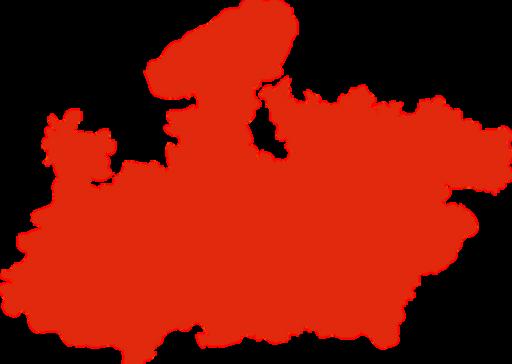
Congratulations to all the
BUSINESS EXCELLENCE AWARDS WINNERS
State Market Leader Award (Modules) - Platinum
LONGi
State Market Leader Award (Modules) - Diamond
Mundra Solar Energy Ltd.


State Market Leader Award (Modules) - Gold



Saatvik Green Energy Private Limited
State Technology Leadership ard - Inverter

Sungrow India Pvt. Ltd.




State Distributor of the Year
Trade Plus Resources And Solutions Pvt Ltd
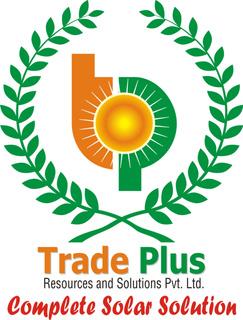
Smart Technology Innovation of the Year - Energy Storage Solution
INVERGY India Pvt. Ltd.
Best After Sales Service
Provider of the Year: Solar Inverter
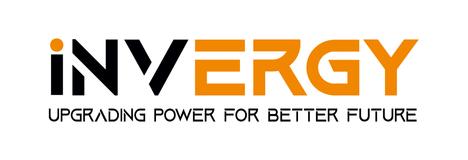
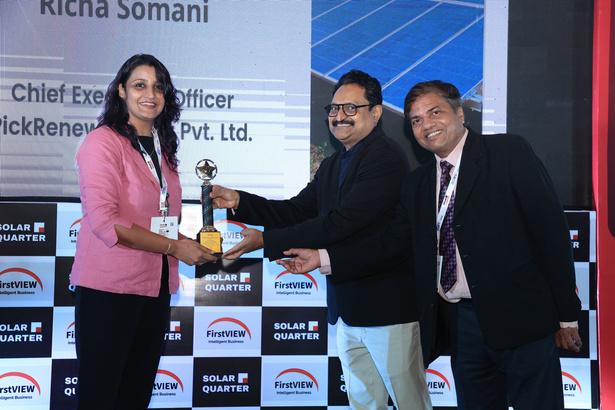
Celestial Renewexperts LLP

Solar EPC Company of the Year - Residential
Anant Energy
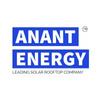
Solar EPC Company of the Year - C&I
Sourdoot MSKVA ECO ENERGY

Solar System Integrator of the Year
AutoSys Indore
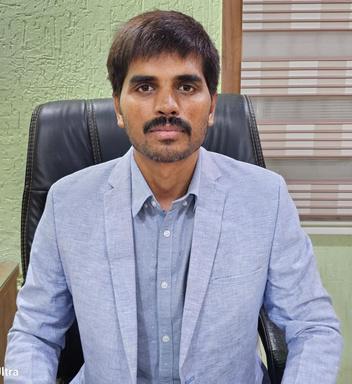
Best After Sales Service
Provider of the Year - EPC
Vasudev Future Infratech Pvt. Ltd.


State Customer's Choice Award - Inverter
Mindra Green Energy
SOLARQUARTER
AWARDS
STATE LEADERSHIP RAJASTHAN AWARDS2023
Congratulations to all the
BUSINESS EXCELLENCE AWARDS WINNERS
STATE LEADERSHIP AWARDS
State Market Leader Award (Inverter) - Platinum
Smart Technology Innovation of the Year

Sungrow India Pvt. Ltd.
State Market Leader Award (Inverter) - Diamond
Solis
State Market Leader Award (Inverter) - Gold
Mindra Green Energy LLP


State Market Leader Award (Modules) - Platinum
LONGi

State Market Leader Award (Modules) - Gold


Saatvik Green Energy Private Limited

State Technology Leadership Award (N-Type TOPCon)
Jinko Solar
Best Module Supply Chain Services of the State

Novasys Greenergy Pvt. Ltd.
Technology Leadership AwardInverter Duty Transformers

Danish Private Limited


Solar EPC Company of the Year - C&I
Ratan Green Energy Services Pvt. Ltd.

Atmanirbhar India State Business Leader - EPC
Solar91 Cleantech Pvt. Ltd.
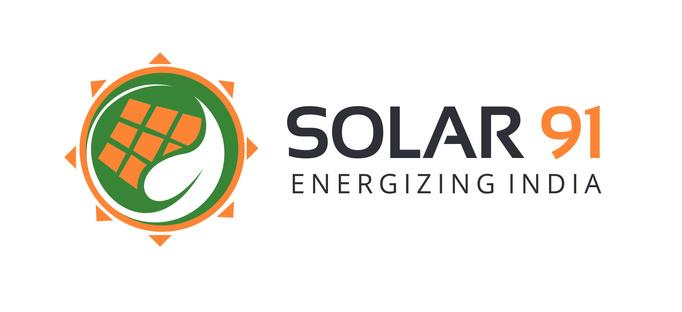


State Solar Installer Company of the Year
EverSolar Solar Developer of the Year
Rays Power Infra Pvt. Ltd.

STATE LEADERSHIP AWARDS
Solar System Integrator of the
Arunam Business Solutions Pvt Ltd


State Business Excellence Award
Rayzon Solar
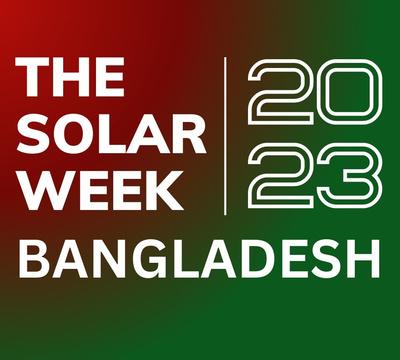





Best After Sales Support
Sofarsolar

AWARDS
Entrepreneur of the Year
Basant Maheshwari, CEO, Hasti India Limited


Youngest Leader of the Year
Jainam Shah, Co-Founder & Managing Director, Mindra Green Energy LLP
Emerging Leader of the Year
Jitendra Soni, Regional Manager, Mahindra Susten Pvt. Ltd.

STAY TUNED FOR UPCOMING AWARD SEP 2023 07 09:00 AM to 5:00 PM (IST) Dhaka, Dhaka Division Bangladesh
Year
Congratulations to all the BUSINESS EXCELLENCE AWARDS WINNERS
PROJECT PERFORMANCE EXCELLENCE AWARDS
Best Performing Wind Project of the Year - Platinum Sprng Energy Private Limited.
Best Performance Enhancement Innovation of the Year ( I-V Curve Testing)


Walwhan Renewable Energy Limited (A TATA Power Company)
Best Performing Wind Project of the Year - Diamond
Gujarat Industries Power Company Limited (GIPCL)
Best Performing Solar Project of the Year -Platinum
CleanMax Enviro Energy Solutions Pvt. Ltd.
Best Performing Solar Project of the Year - Diamond

Best Performance Enhancement Innovation of the Year (Wind)
Best Performance Enhancement Innovation of the Year - (Virtual String Monitoring System)
Tata Power Renewable Energy Ltd


Best Performing Solar Project of the Year - Gold
Avighna Solar Farms ltd.

Rising Star of the Year- Robotic Cleaning Systems
Solar-LIT
Best Performance Enhancement Innovation of the Year (Albedo Improvement)
ABC Renewable Energy (RJ01) Private Limited

Best Performing Asset Portfolio of the Year
Best Asset Management Control Centre of the Year (Solar)
Stride Climate Investments (Macquarie Group)


Best Retrofitting Project of the Year
Terraform Global India Private Limited

Best Asset Management Control Center of the Year (Wind)
Enel Green Power India Pvt. Ltd.

Best Asset Management Platform Provider of the Year
GSE Renewables India Pvt. Ltd.

Best Asset Management Software of the Year
Futr Energy


AWARDS

SERVICE EXCELLENCE AWARDS
COMPANY EXCELLENCE AWARDS
Best Service Provider of the Year (Solar) - Monitoring & Solutions

SuryaLogix Private Limited

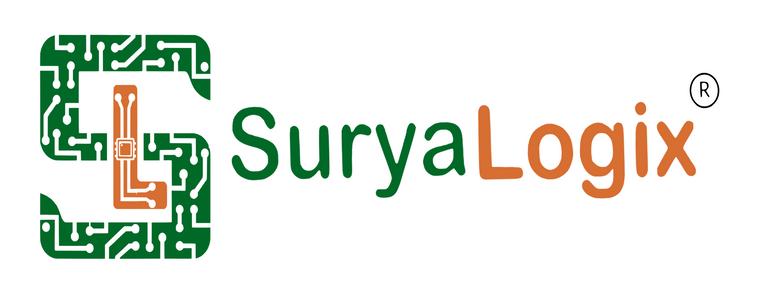
Best Service Provider of the Year (Solar)- O&M
Mahindra Teqo Private Limited
Best O&M Company of the Year
Jakson Green Renewable Services Pvt Ltd
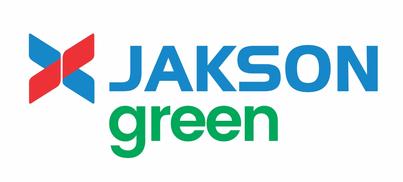
Best Service Provider of the Year (Wind) - EPC
Raviraj Infraproject Private Limited
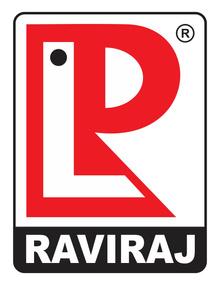
Best Service Provider of the Year (Wind) - O&M
Renom Energy Services Pvt Ltd


TECHNOLOGY EXCELLENCE AWARDS
Best Technology of the Year
Ratan Green Energy Services Pvt Ltd
Best Asset Management Thought Leadership


Everrenew Energy Private Limited.


TEAM PERFORMANCE EXCELLENCE AWARDS
Best Team Performance of the Year - Asset Management
Stride Climate Investments (Macquarie Group)

Best Team Performance of the Year (Solar) - O&M
Mamdapur Solar Private Limited
SOLARQUARTER
STATE LEADERSHIP AWARDS
TAMILNADU
2023
STATE LEADERSHIP AWARDS
Congratulations
BUSINESS EXCELLENCE AWARDS WINNERS
Best Solar Project of the Year
Solar Developer of the Year
Velan Infra Projects Pvt. Ltd.

Rooftop EPC Player of the Year
VIRIDIS Energy Private Limited
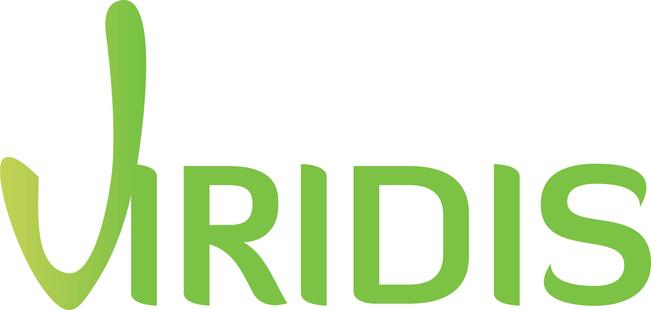

State Distributor Award - Solar Modules

SUNDROPINDIA ENERGY SOLUTIONS PVT LTD

State Customer's Choice Award (Modules) - Platinum
Trina Solar
Solar System Integrator of The Year - Residential
Kondaas Automation Pvt. Ltd.

State Market Leader Award (Modules) - Platinum
LONGi

State Market Leader Award (Modules) - Diamond
Saatvik Green Energy Private Limited
Rising Star of the Year - Solar Modules
Rayzon Solar Pvt. Ltd.

State Customer's Choice Award (Modules) - Gold
Navitas Green Solutions Pvt. Ltd.

State Customer's Choice Award -Inverter (Industrial & Utility)
Havells India Ltd

State Technology Leadership Award
Credence Solar Panels Pvt Ltd

Smart Technology Innovation of the Year - Inverter
EVVO SOLAR
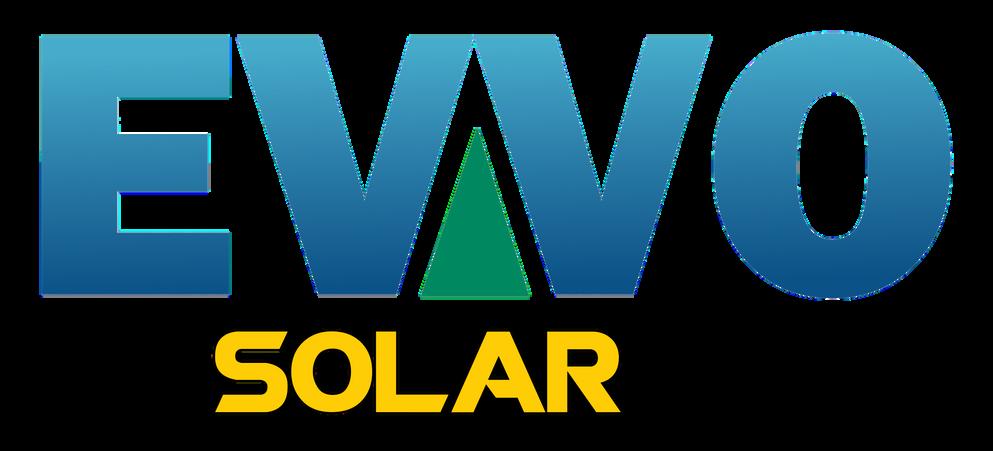


to all the
STATE LEADERSHIP AWARDS
Smart Technology Innovation of the Year - Solar Modules
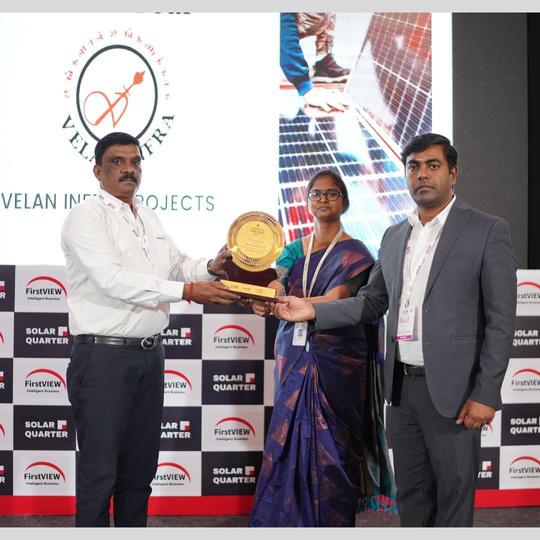


Trina Solar
Smart Digital Technology Innovation of the Year
Tamil Nadu Generation and Distribution Corporation
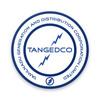
Limited
Smart Technology Innovation of the Year - String Monitoring


Box
SUNDROPINDIA ENERGY SOLUTIONS PVT LTD
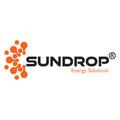
INDIVIDUAL LEADERSHIP AWARDS
Entrepreneur of the Year
Hardik Kothiya, Founder & Managing Director, Rayzon Solar Pvt. Ltd.
AWARDS

Best Construction Team of The Year
Velan Infra Projects Pvt. Ltd.

Best Business Development Team of the Year
Jayram Industries India Pvt. Ltd.


Visionary of the Year
Chirag Nakrani, Founder & Managing Director, Rayzon Solar Pvt. Ltd.


Best Sales/ Marketing Team of The Year
Havells India Ltd








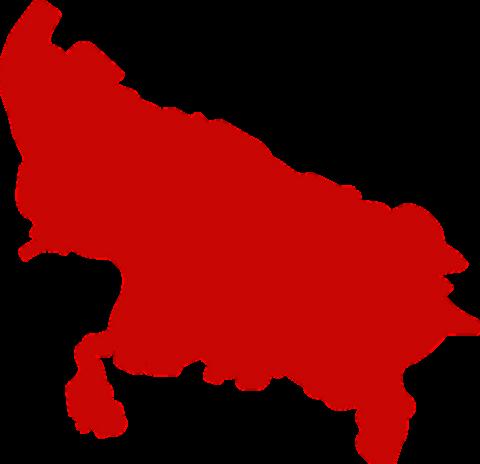


For Speaking & Sponsorship Opportunities, contact: events@firstviewgroup.com SPEAK PRESENT EXHIBIT ATTEND CONFERENCE - EXHIBITION - AWARDS - NETWORKING AUG 2023 31 09:00 AM (IST) Radisson Blu, Bengaluru BUSINESSMEET UTTAR PRADESH 20 23 AUG 2023 04 09:00 AM to 17:00 PM(IST) Hilton Garden Inn, Lucknow STATE BUSINESSMEET KARNATAKA 20 23






















































































































































































